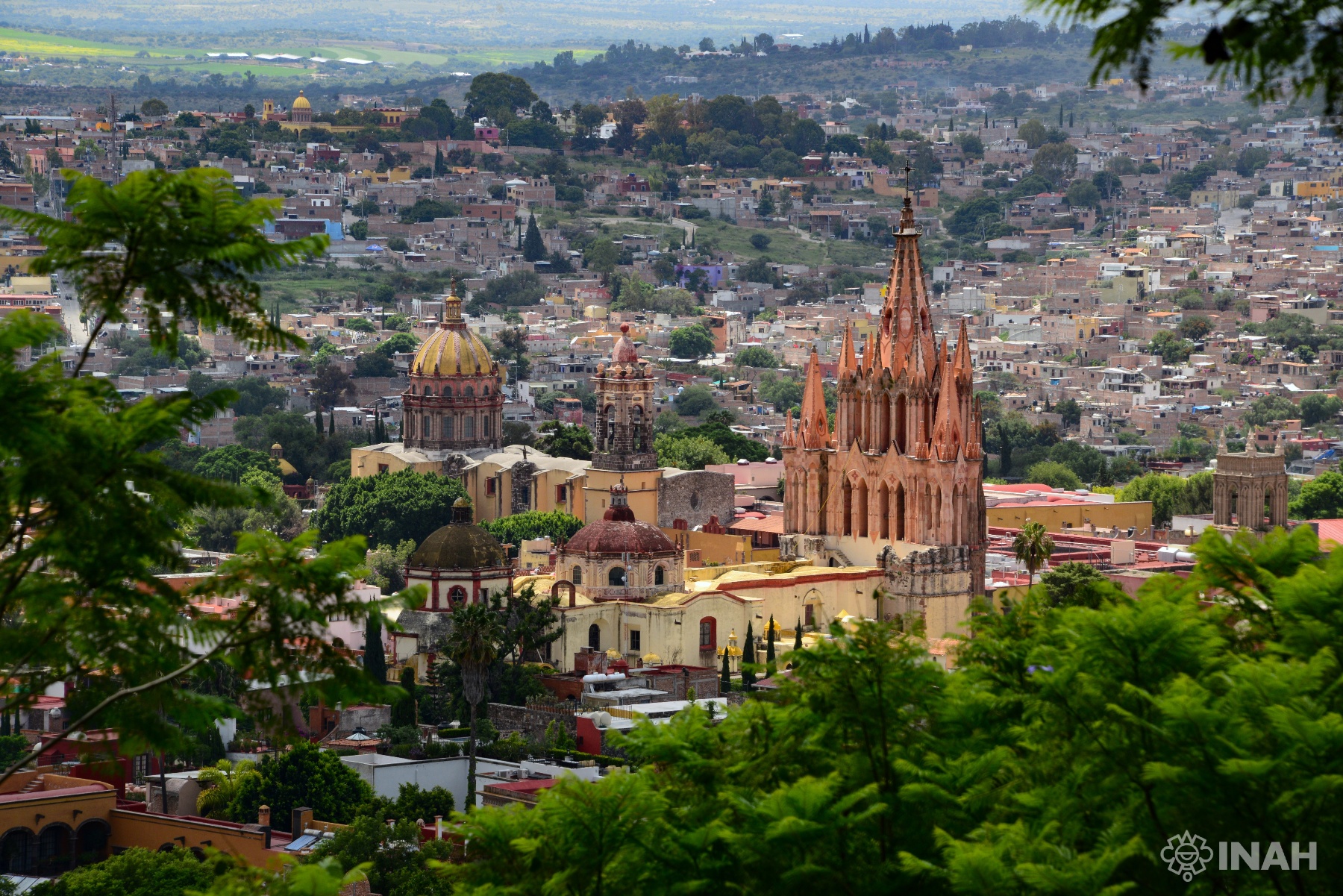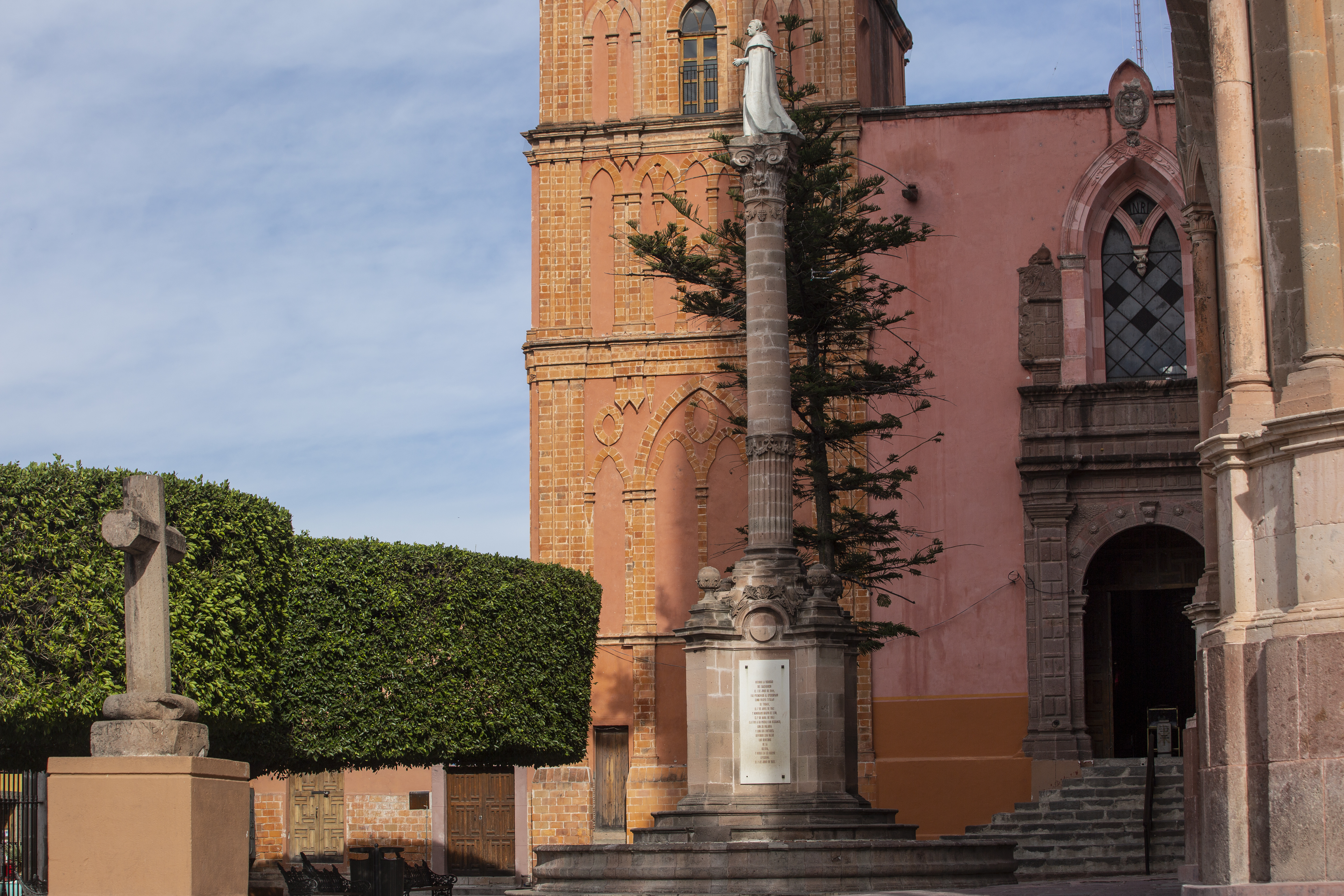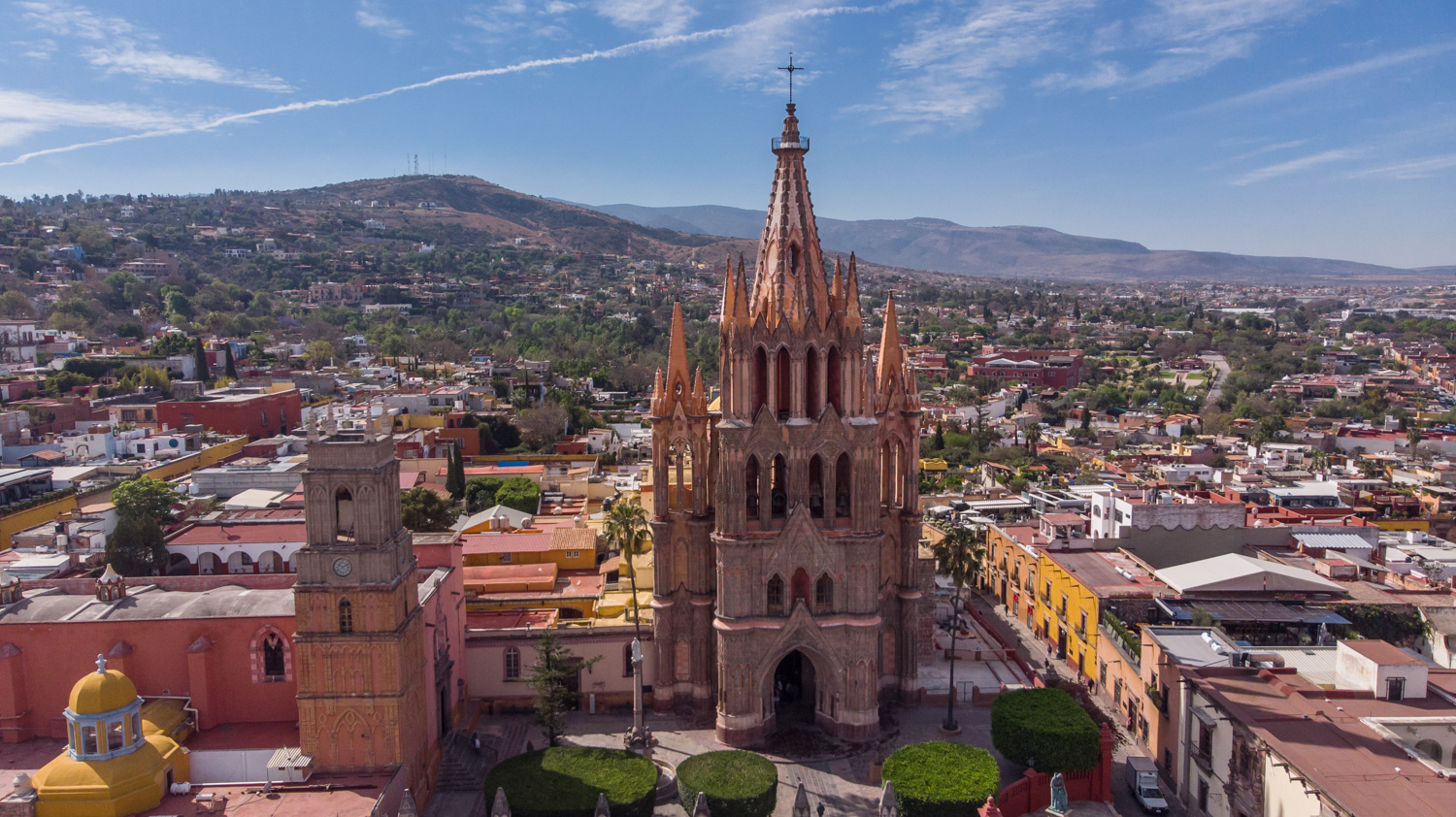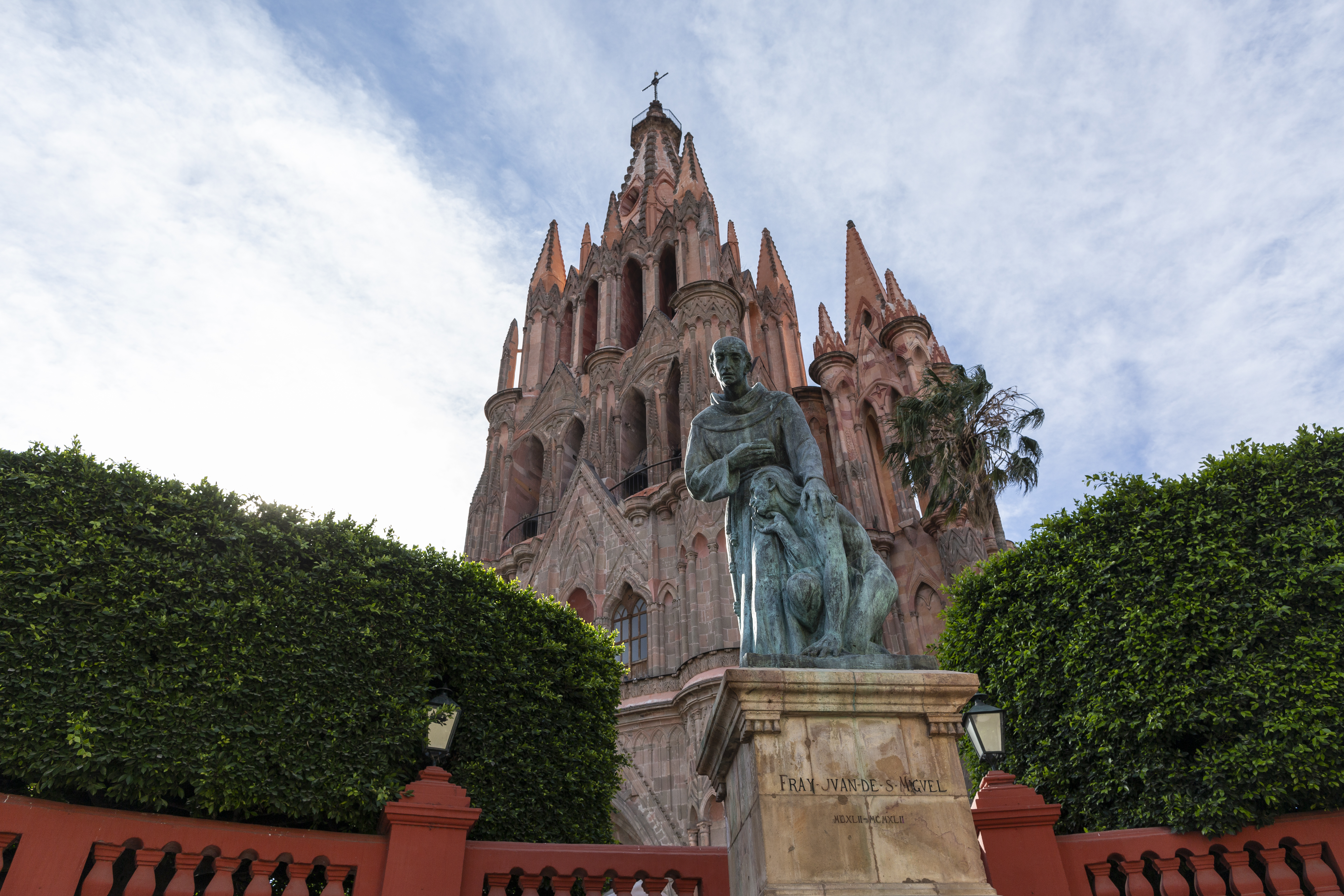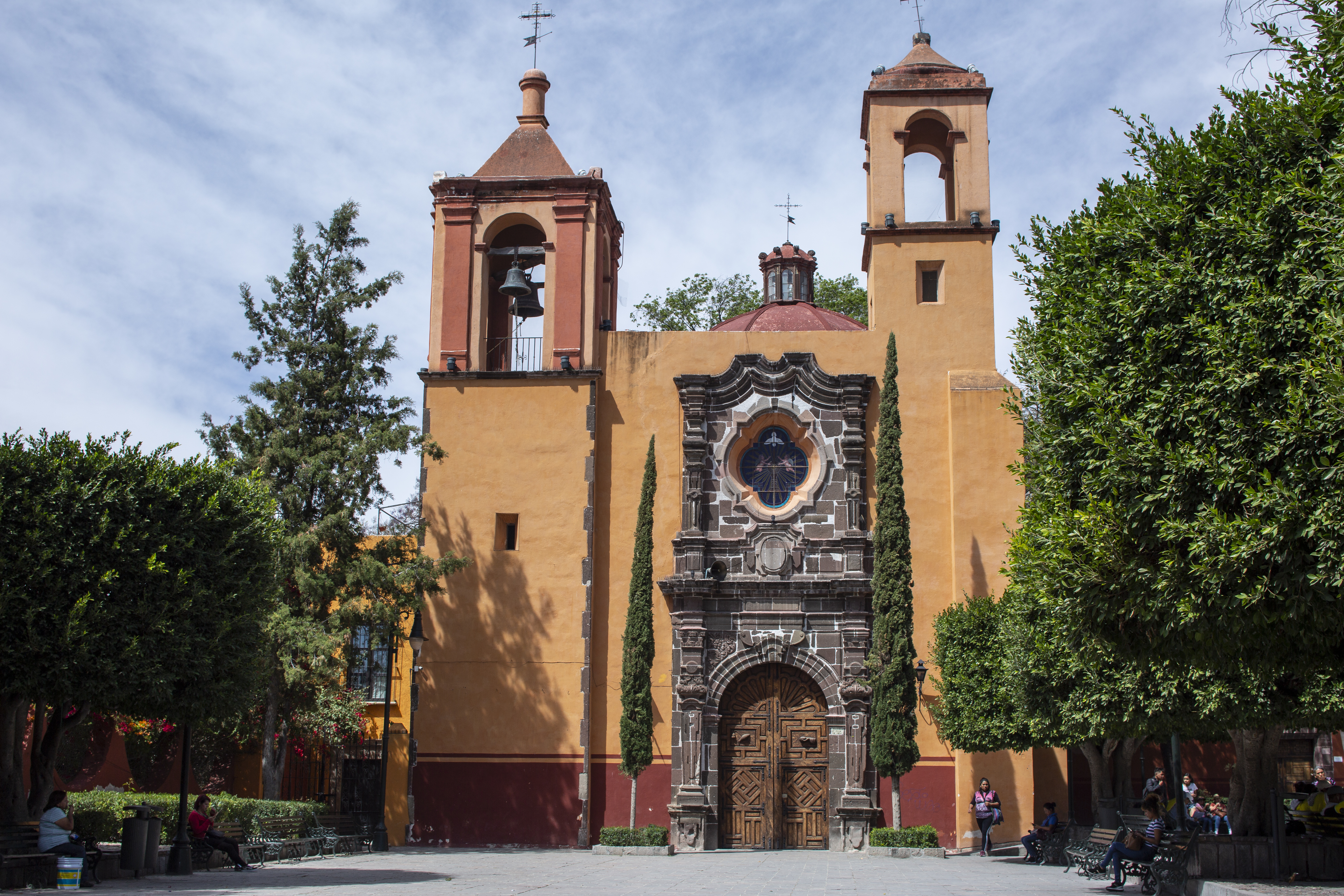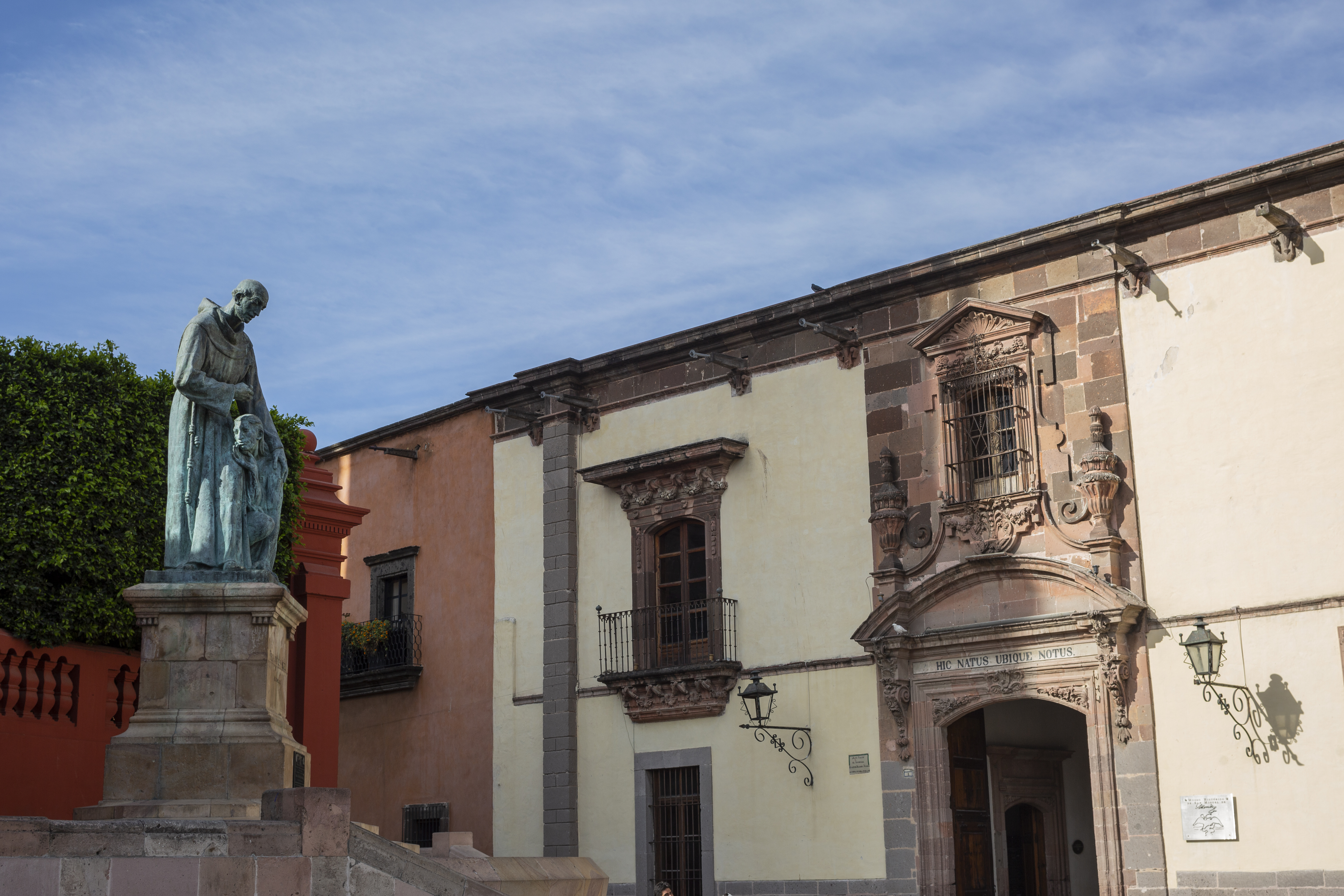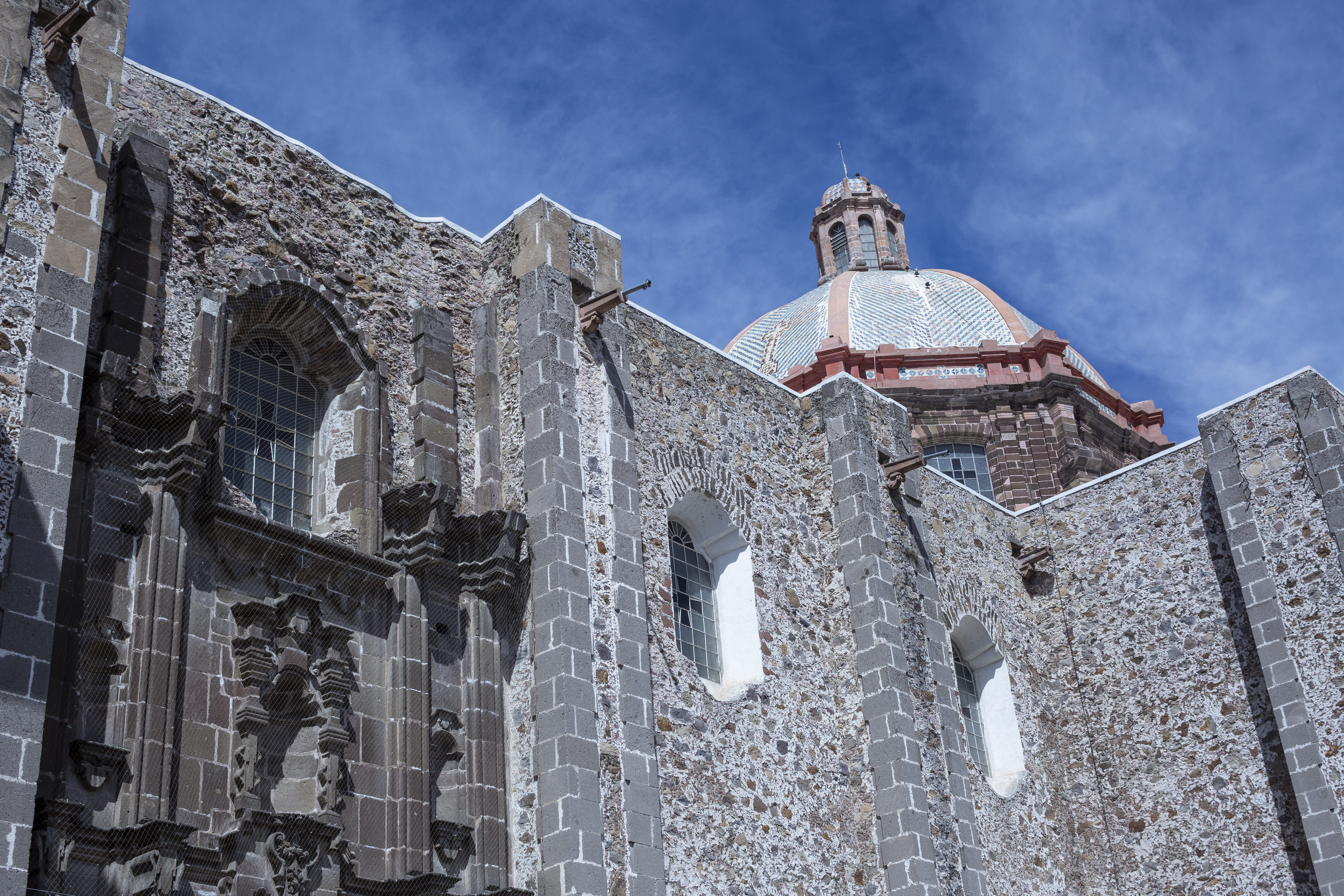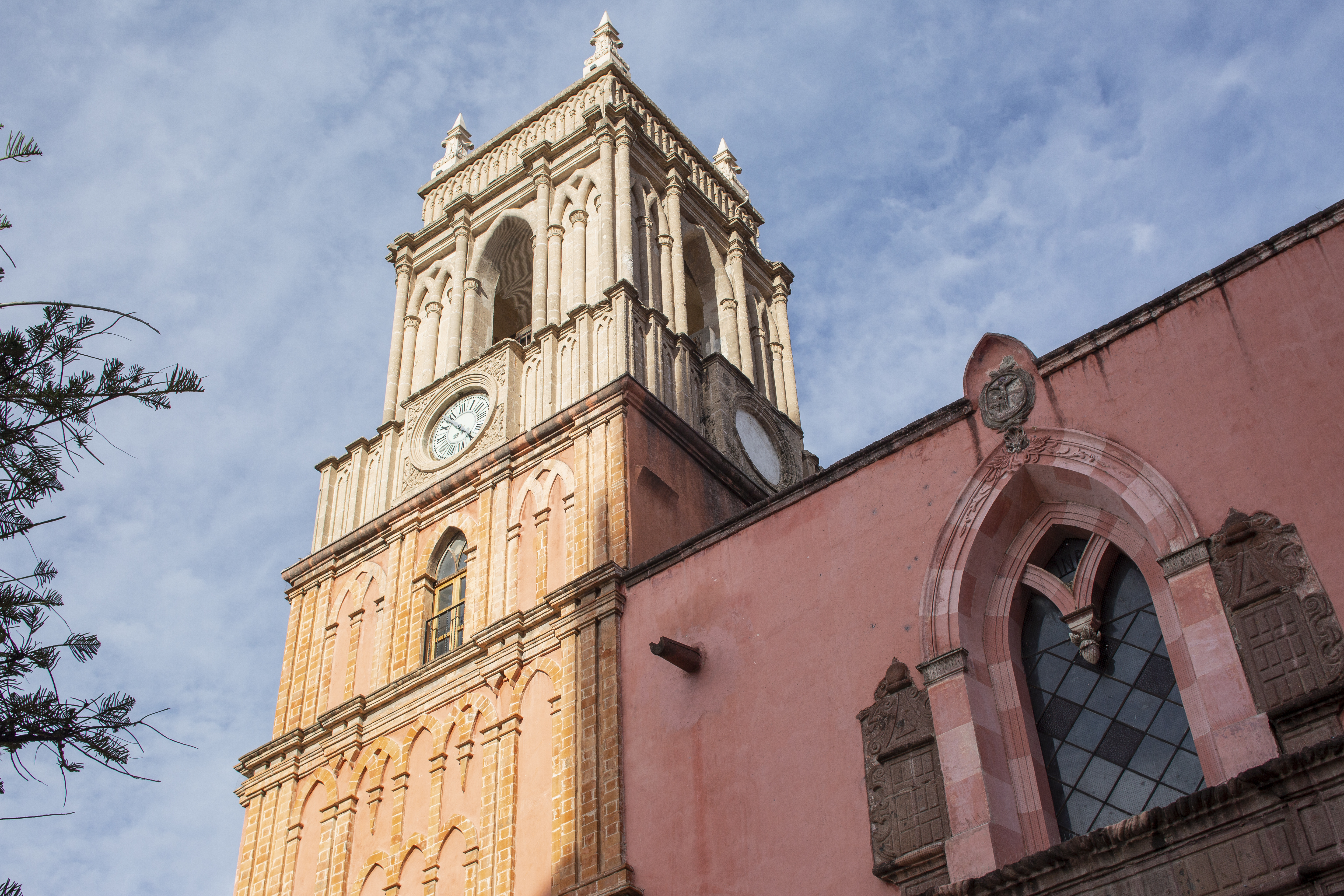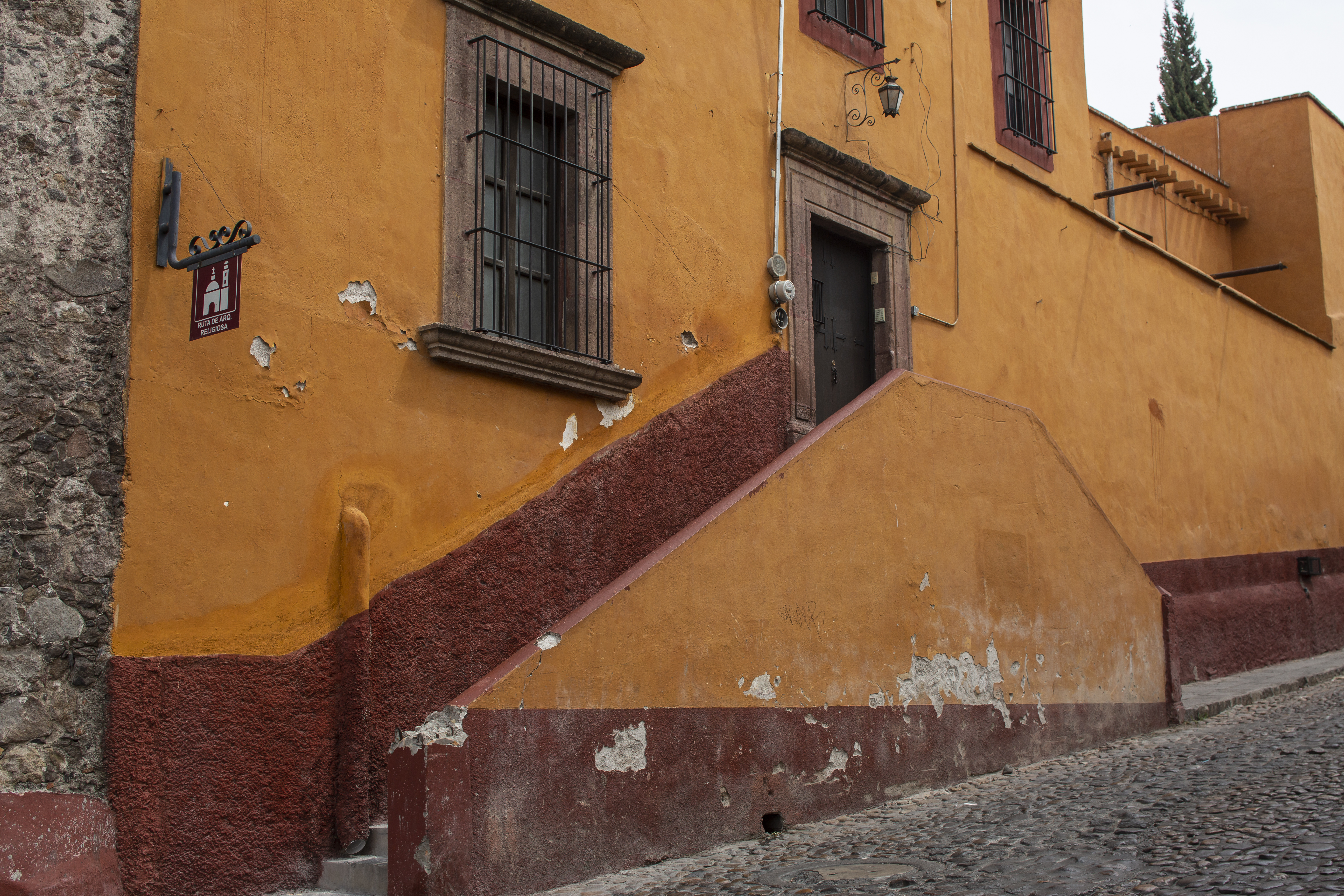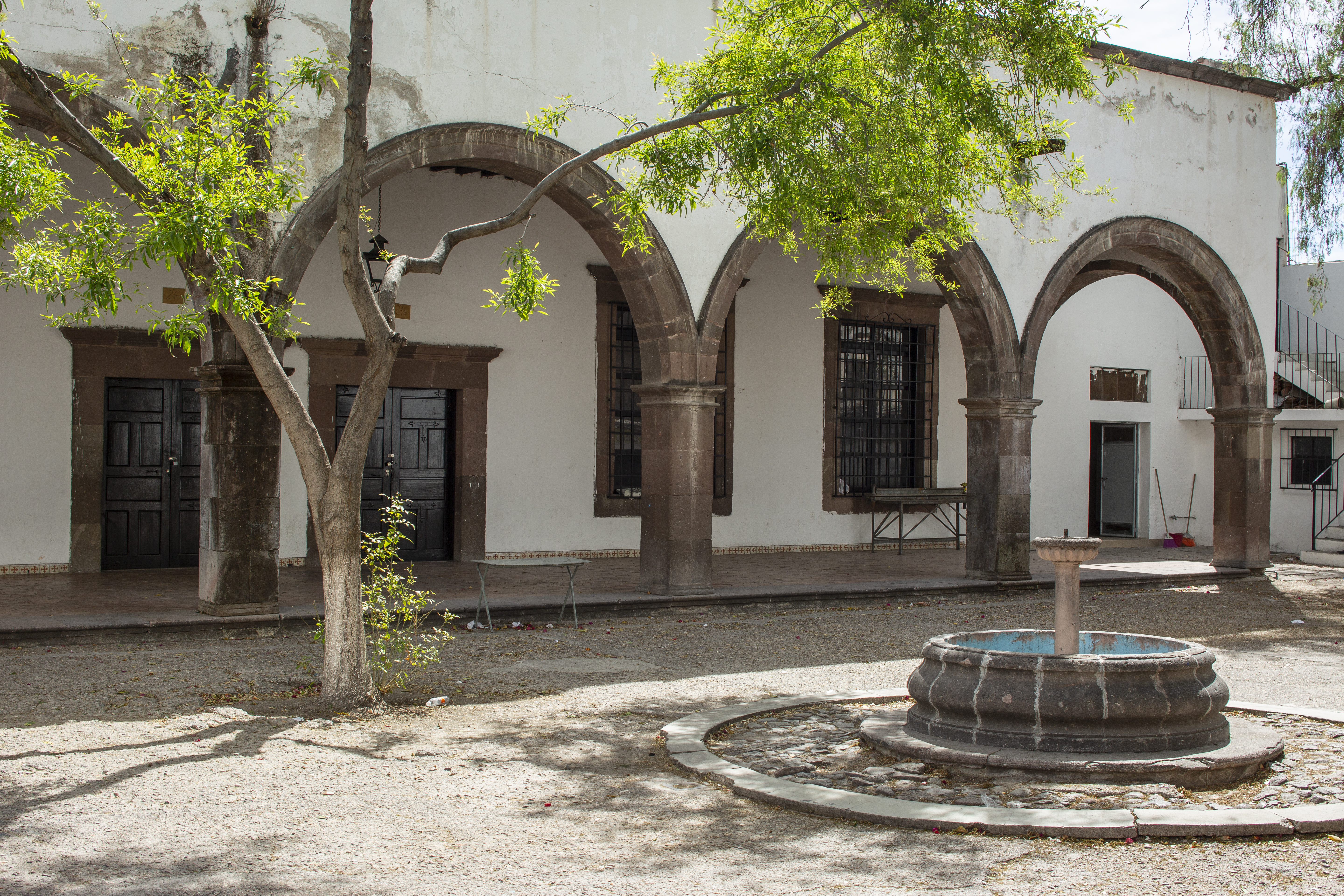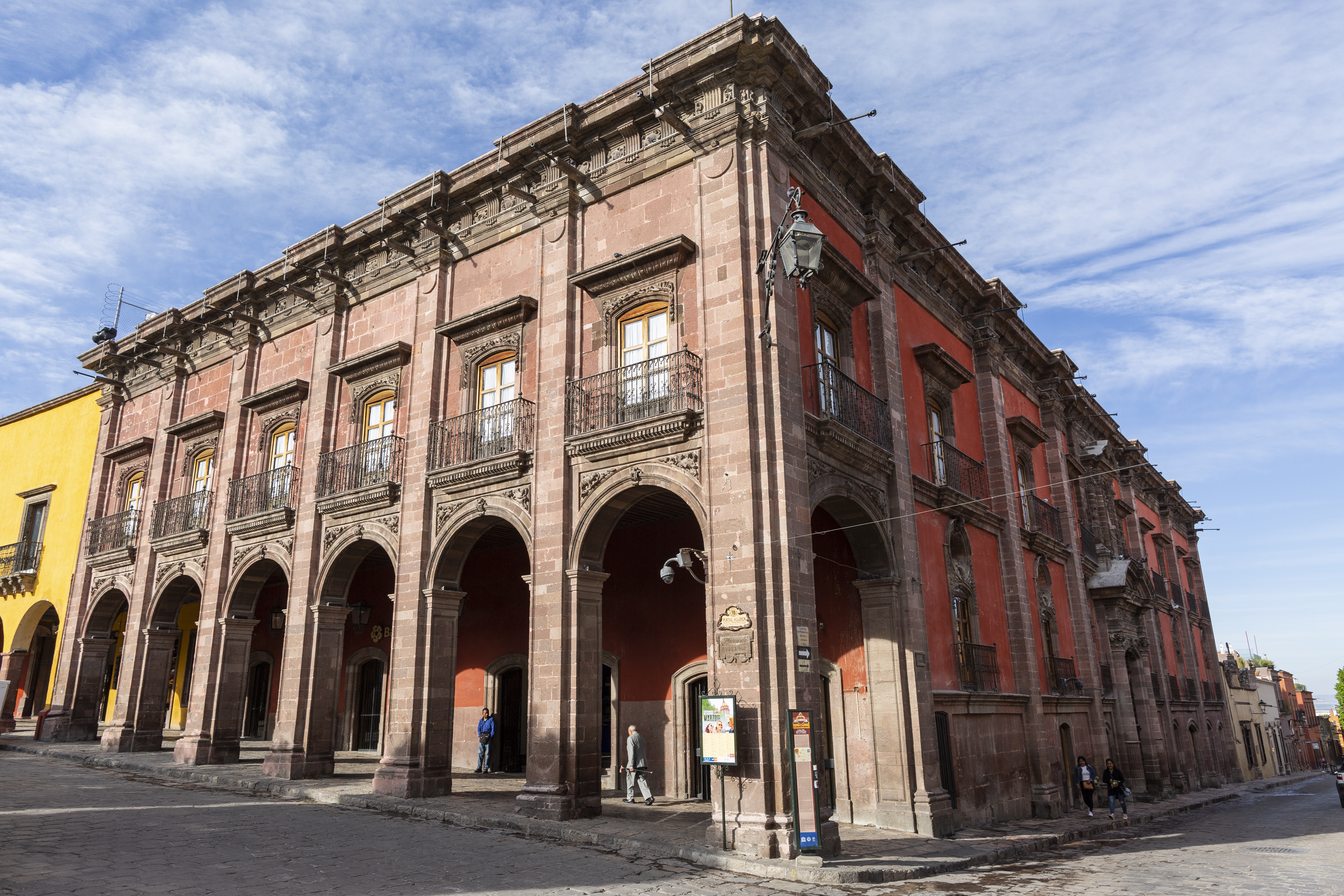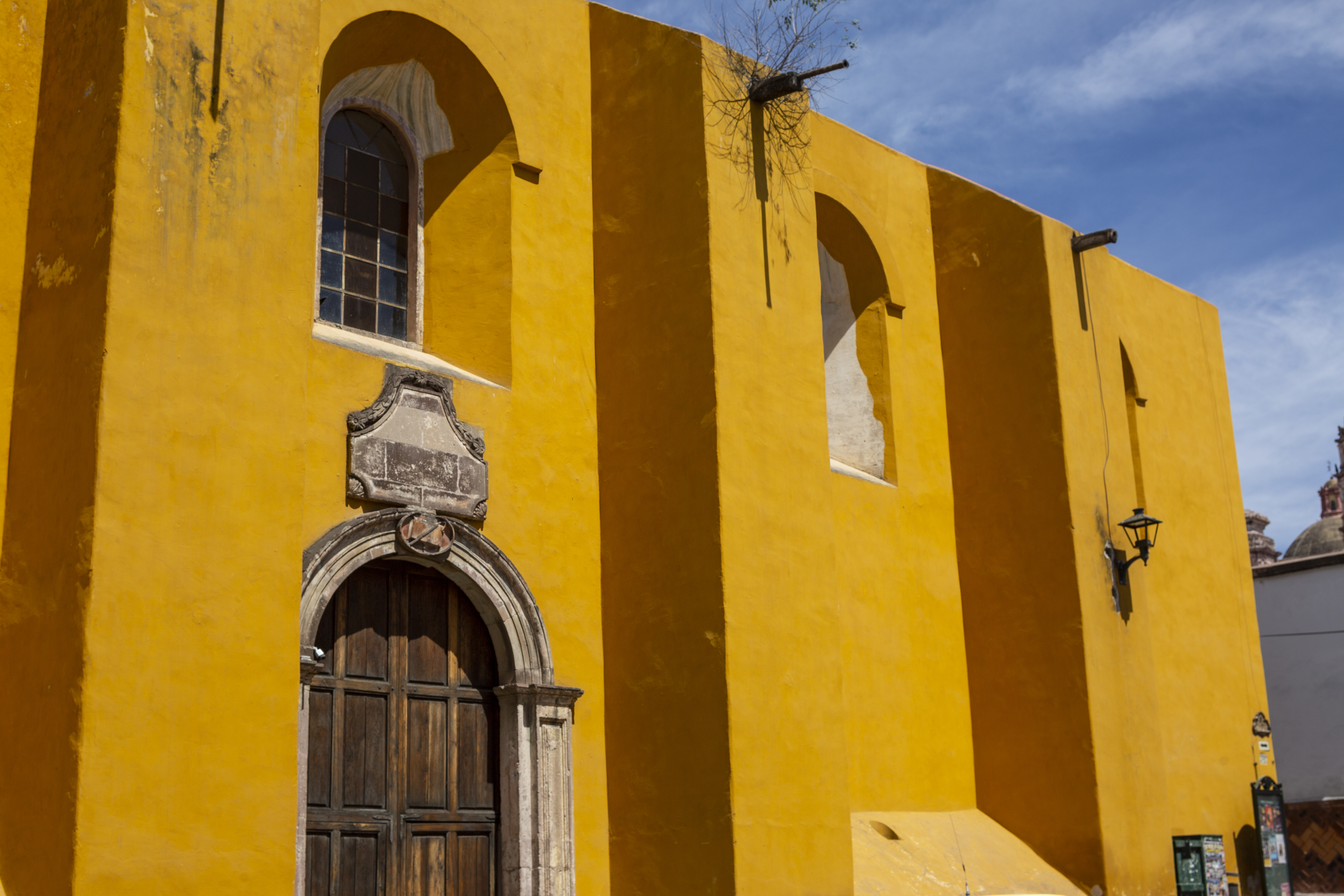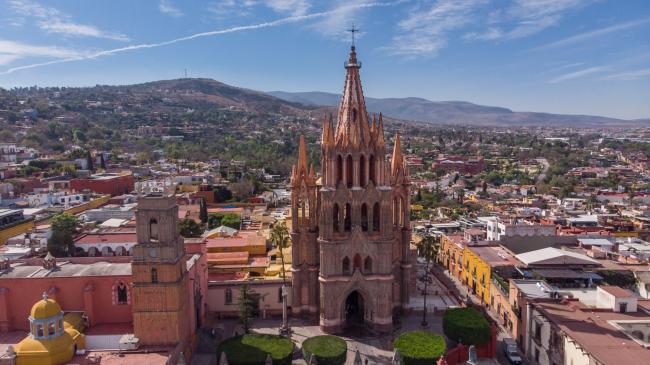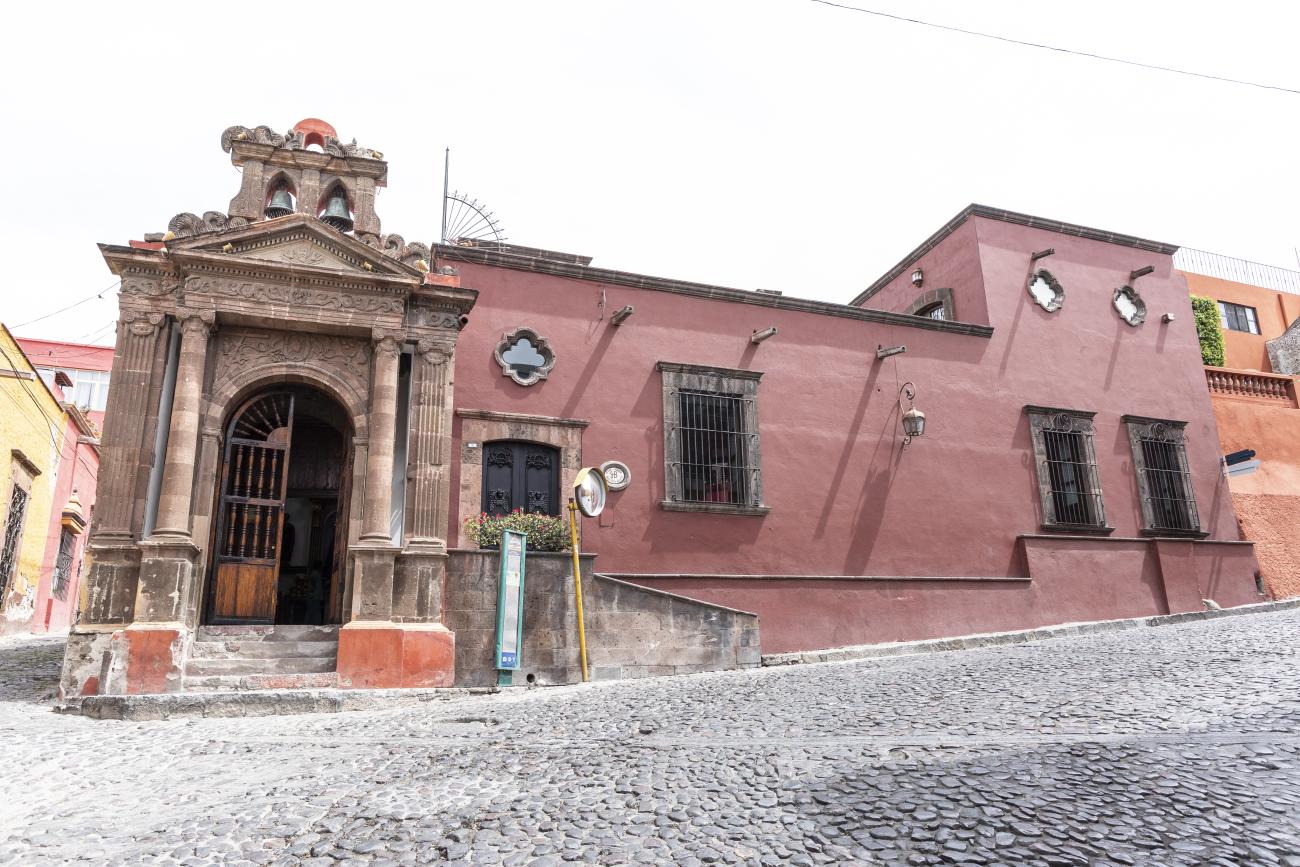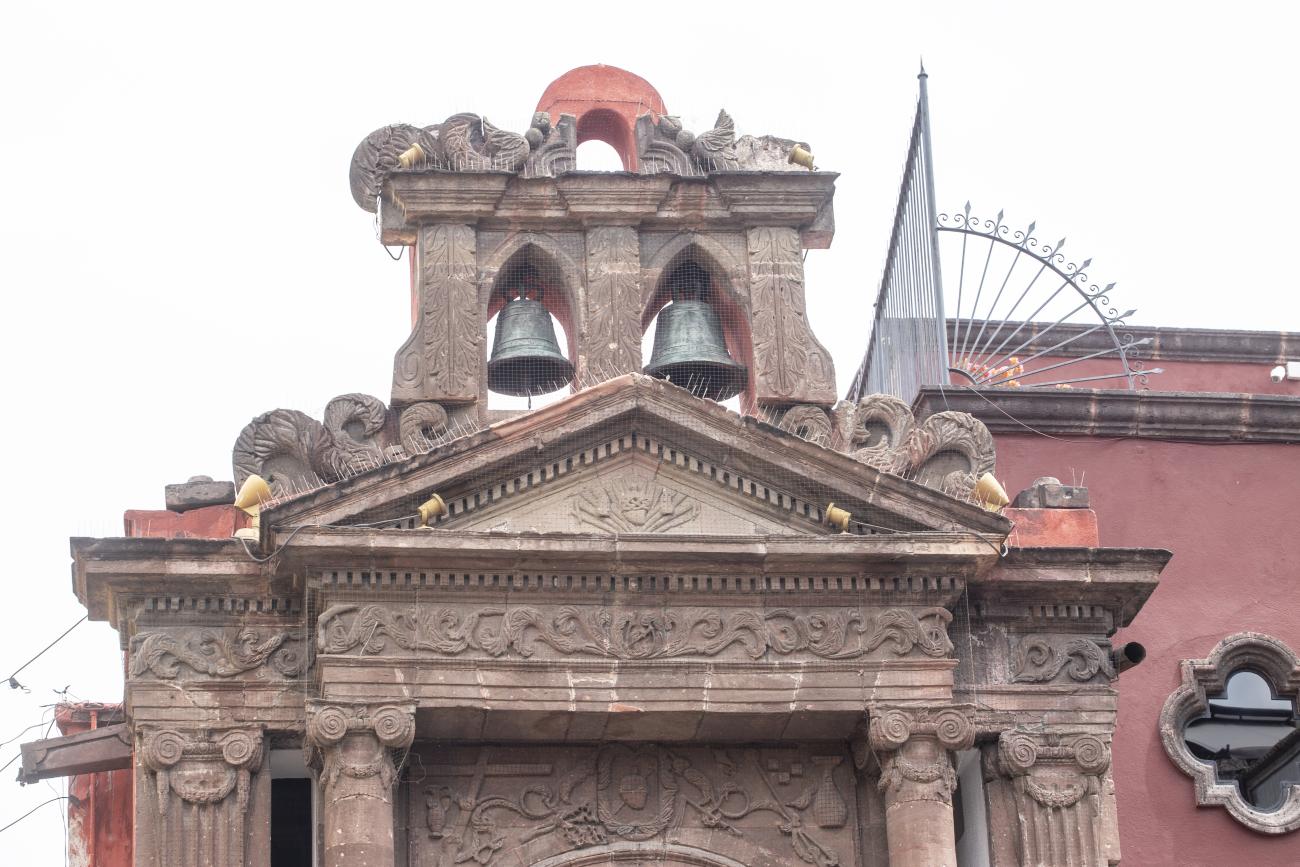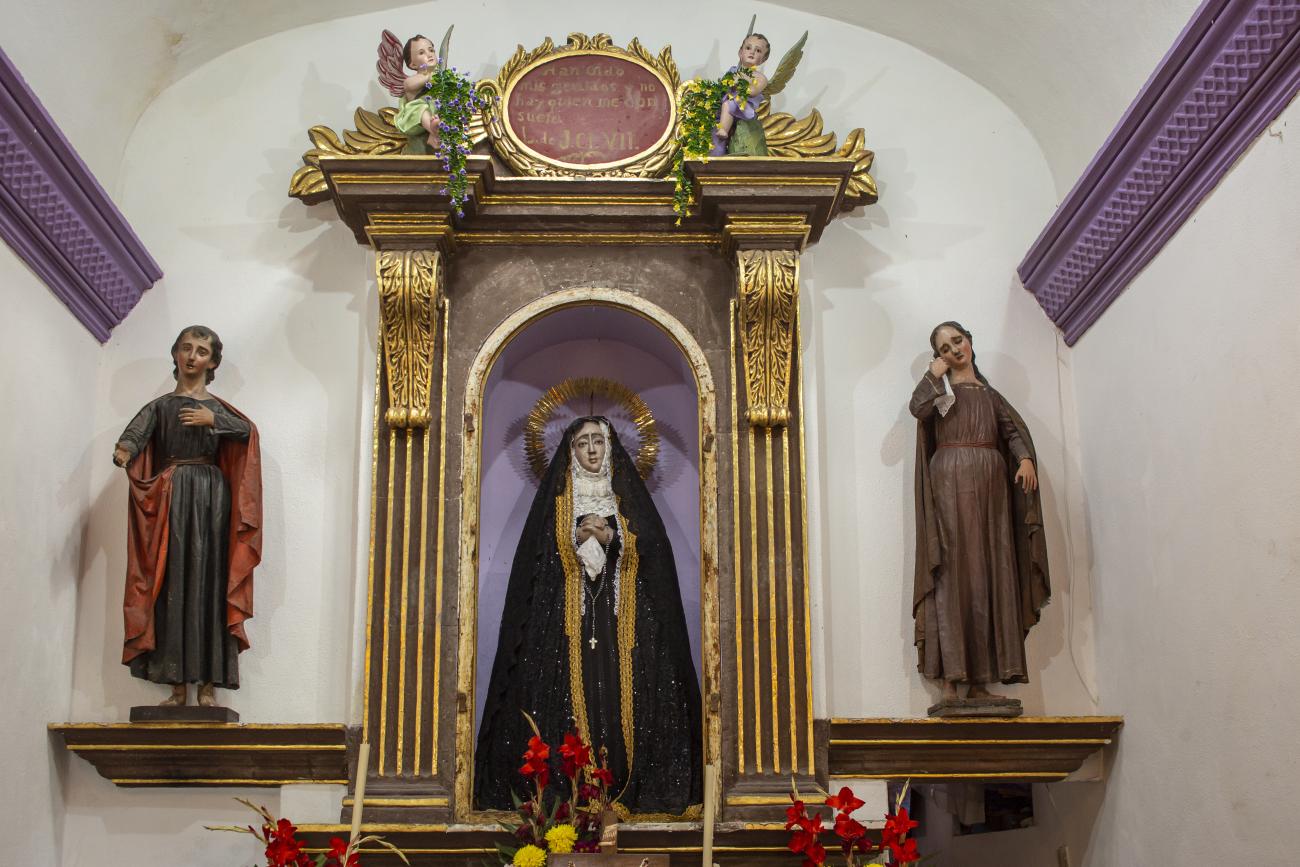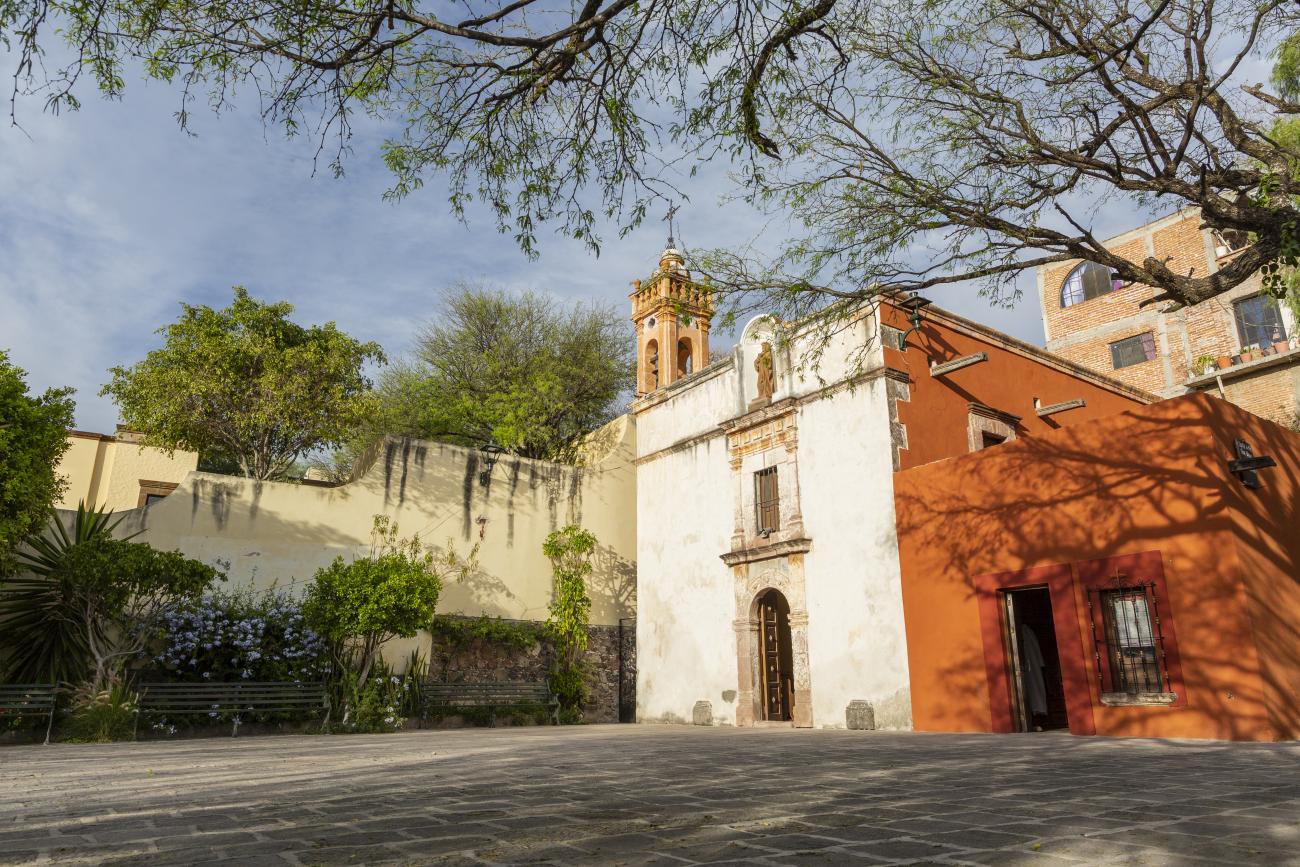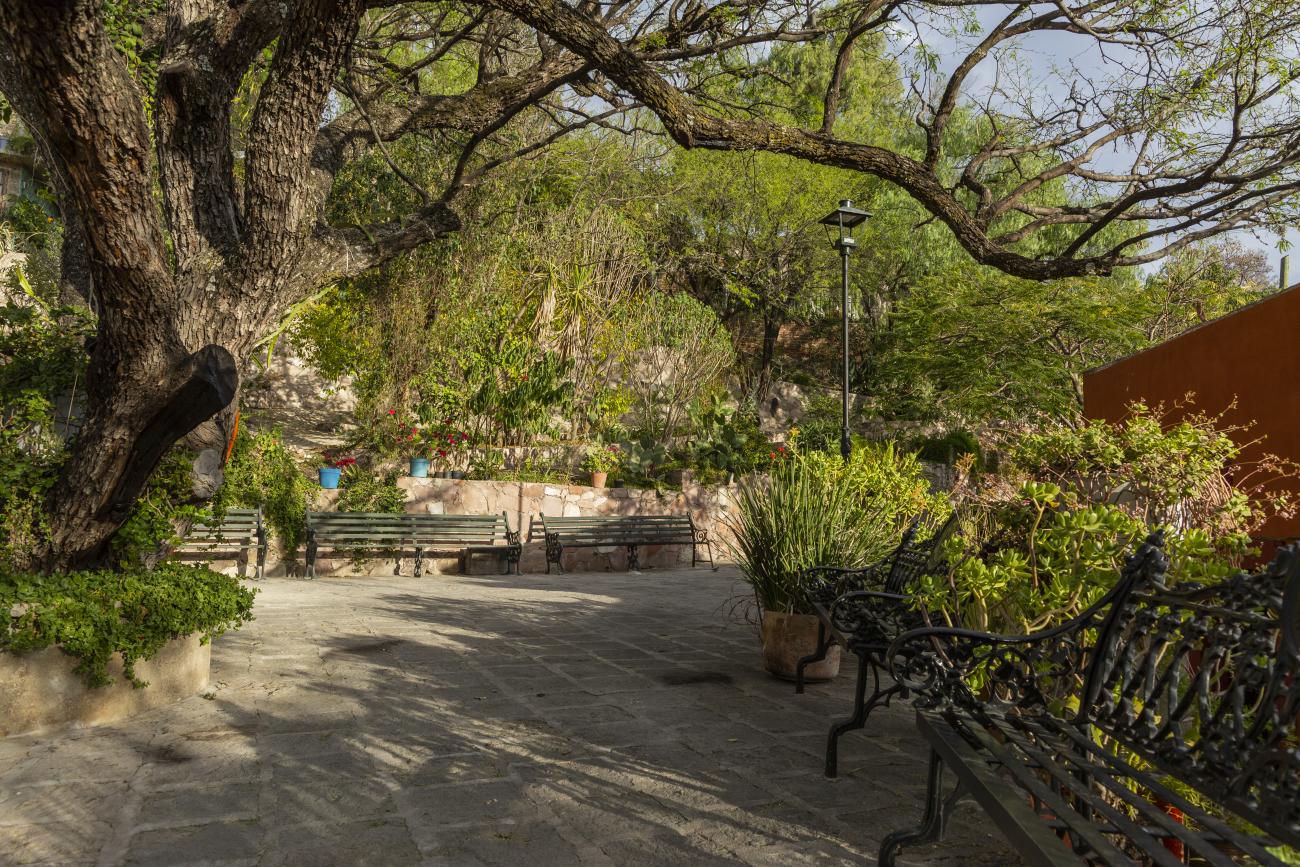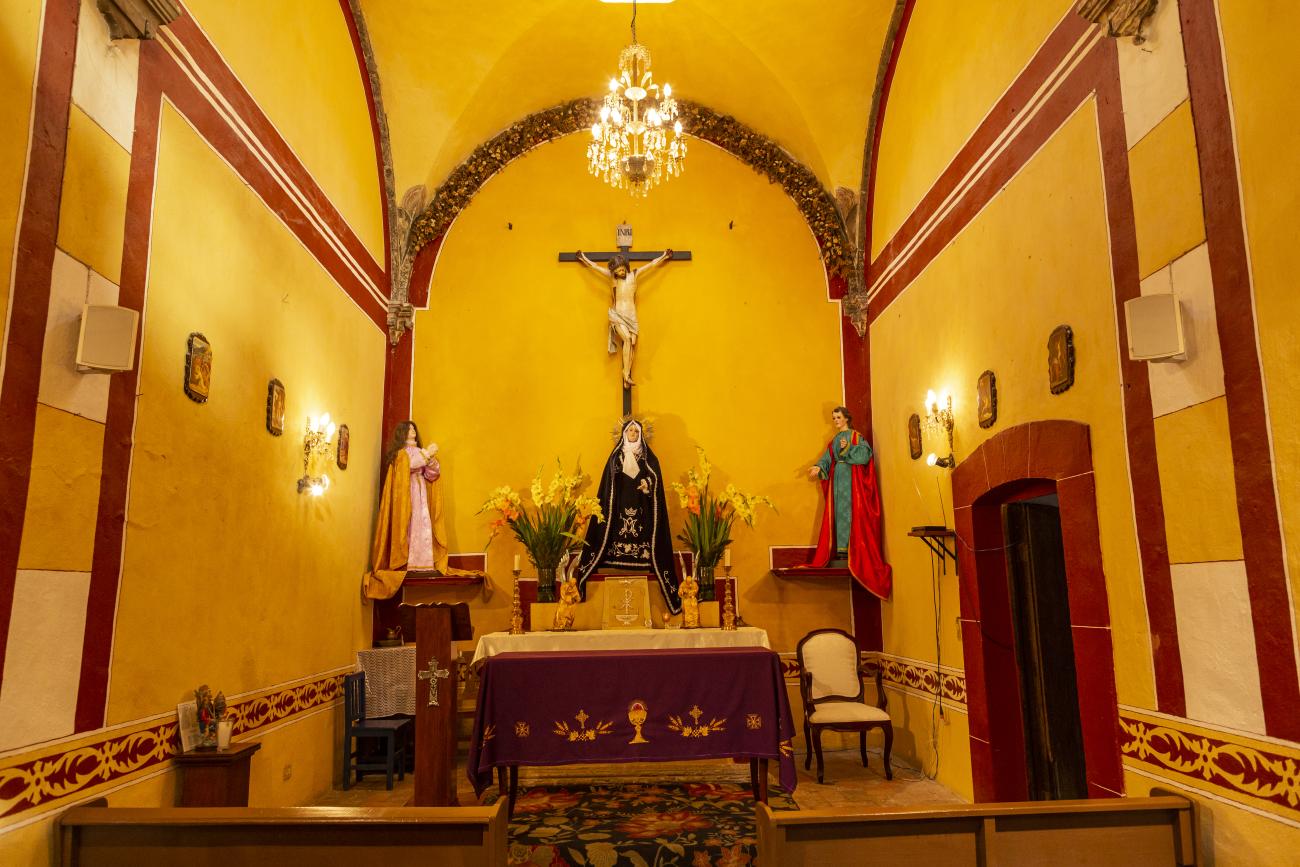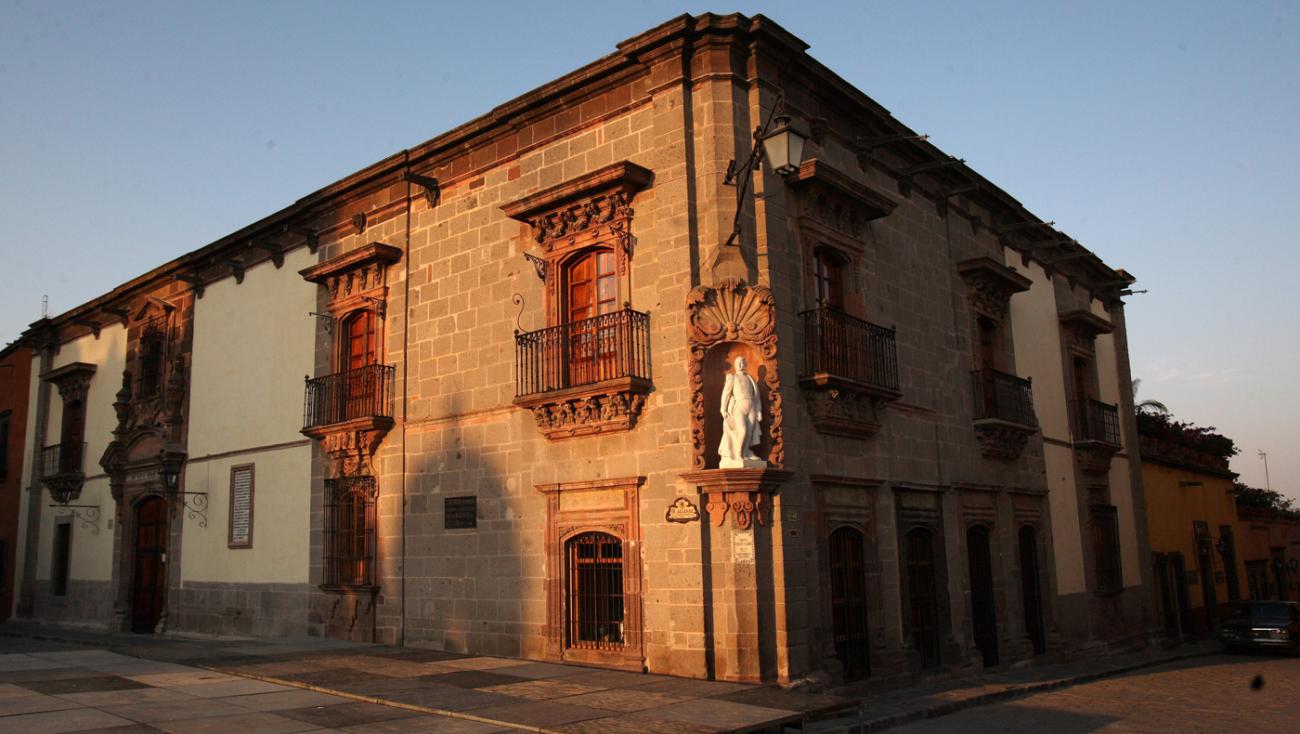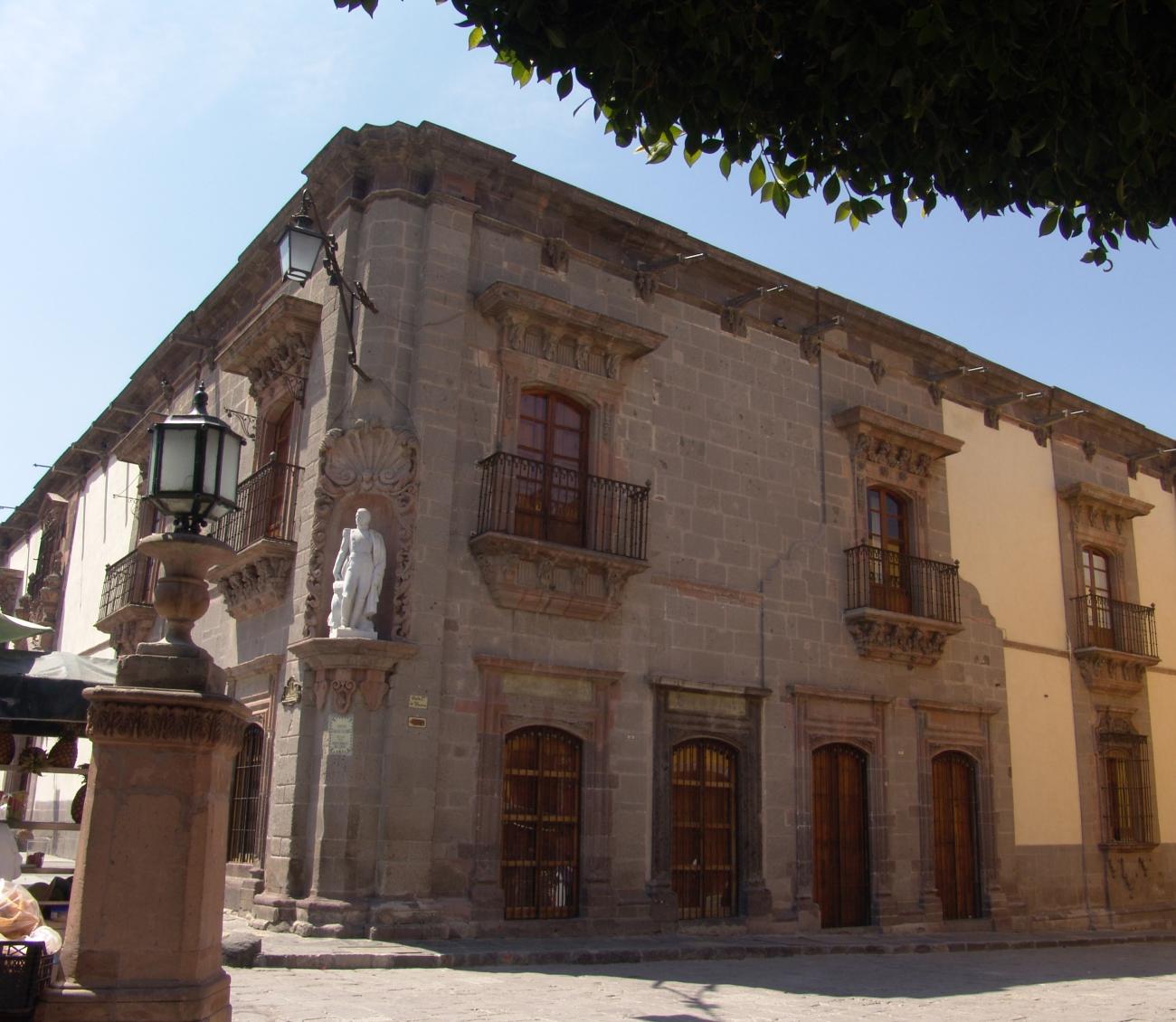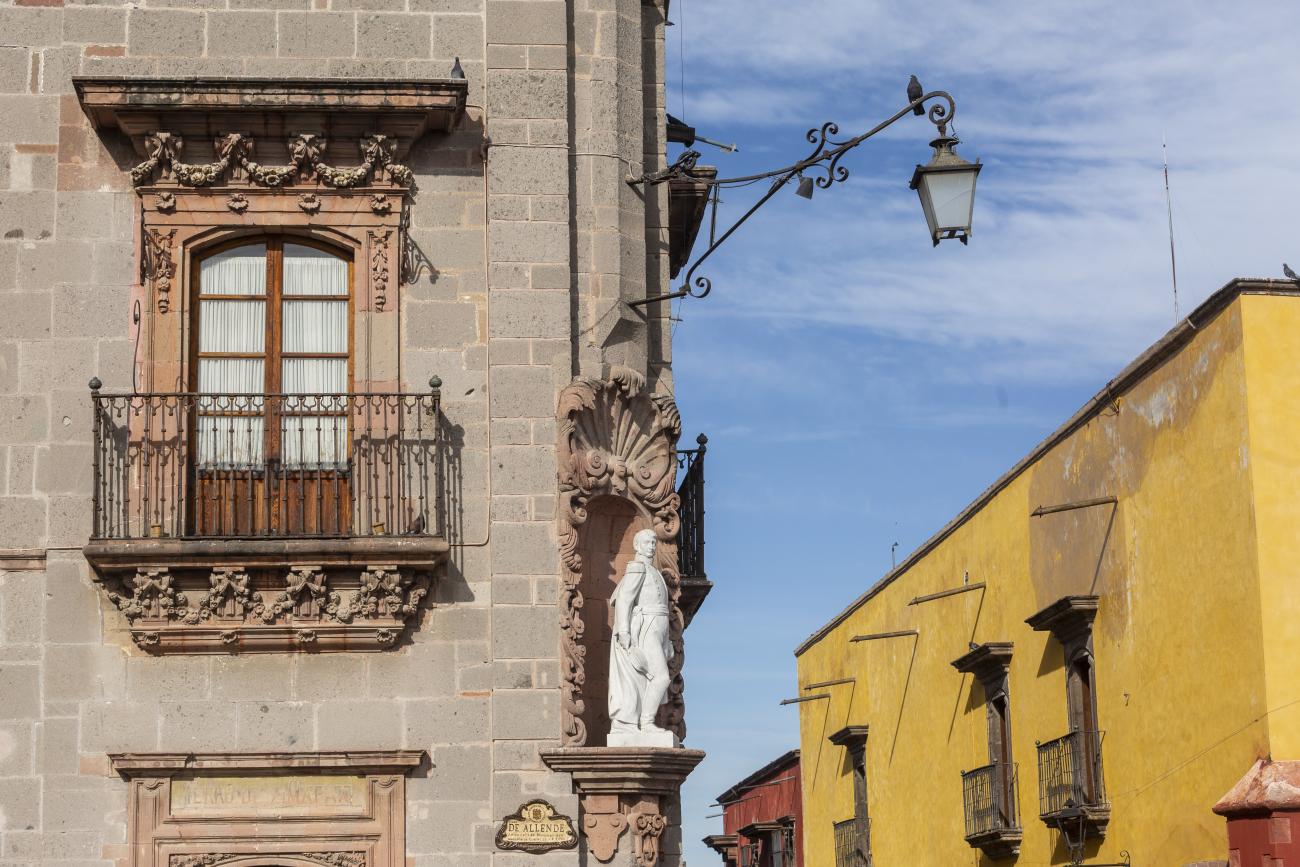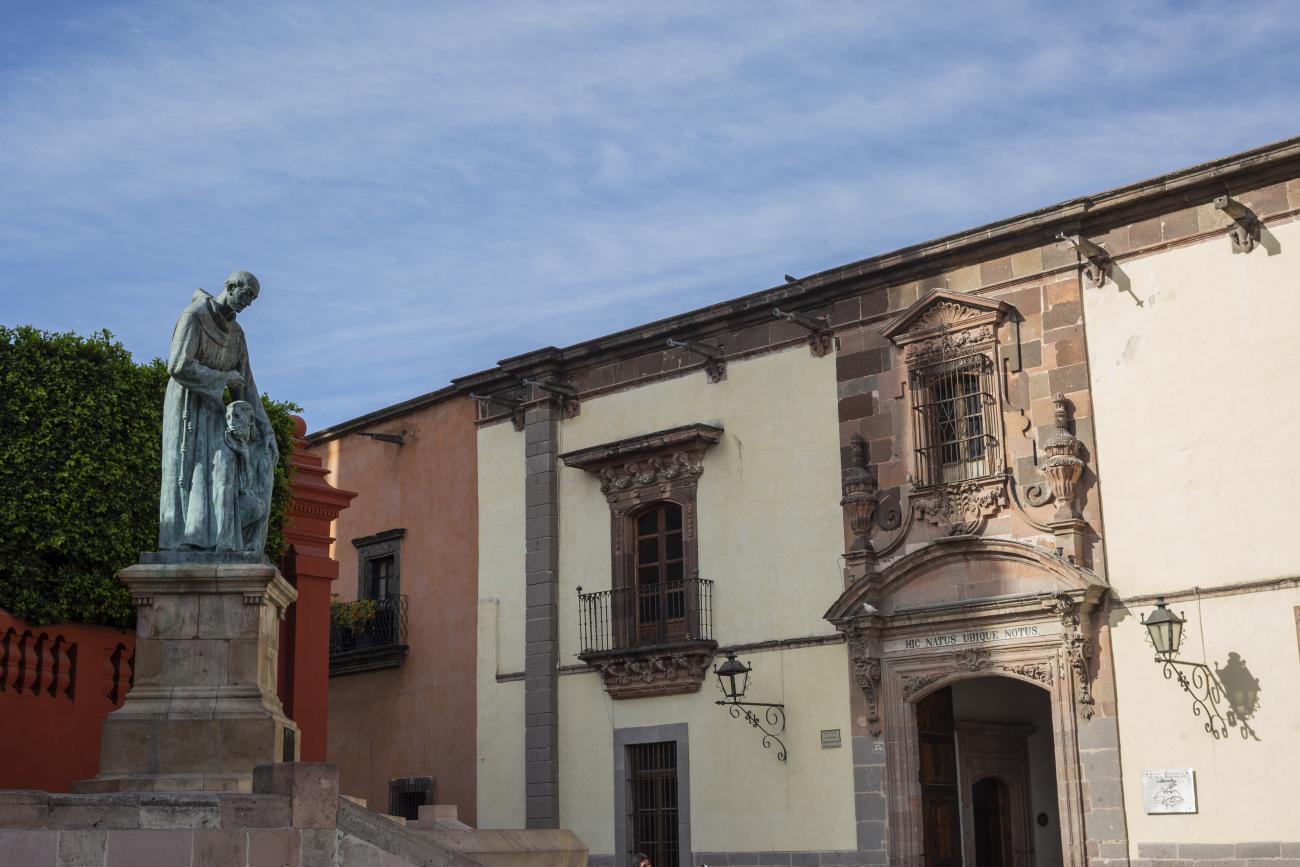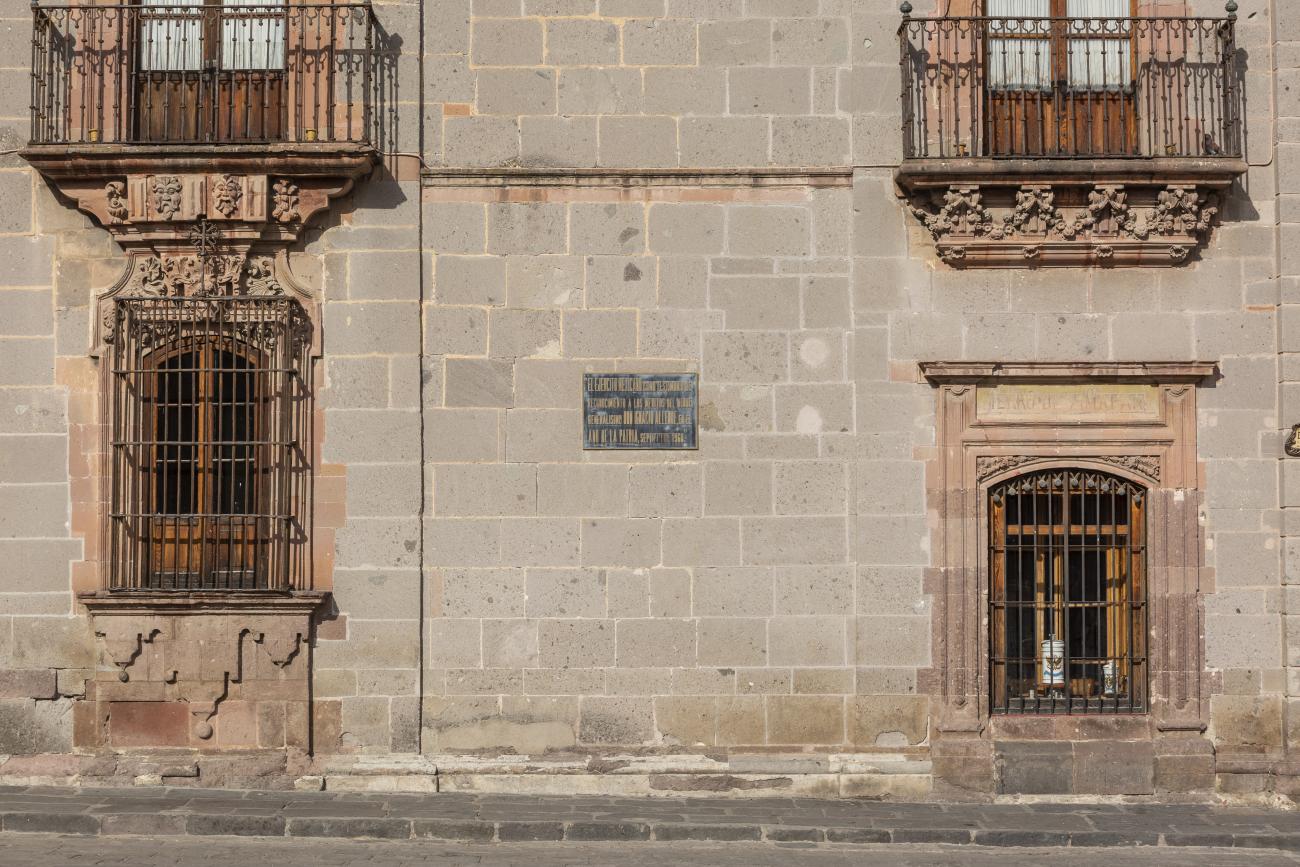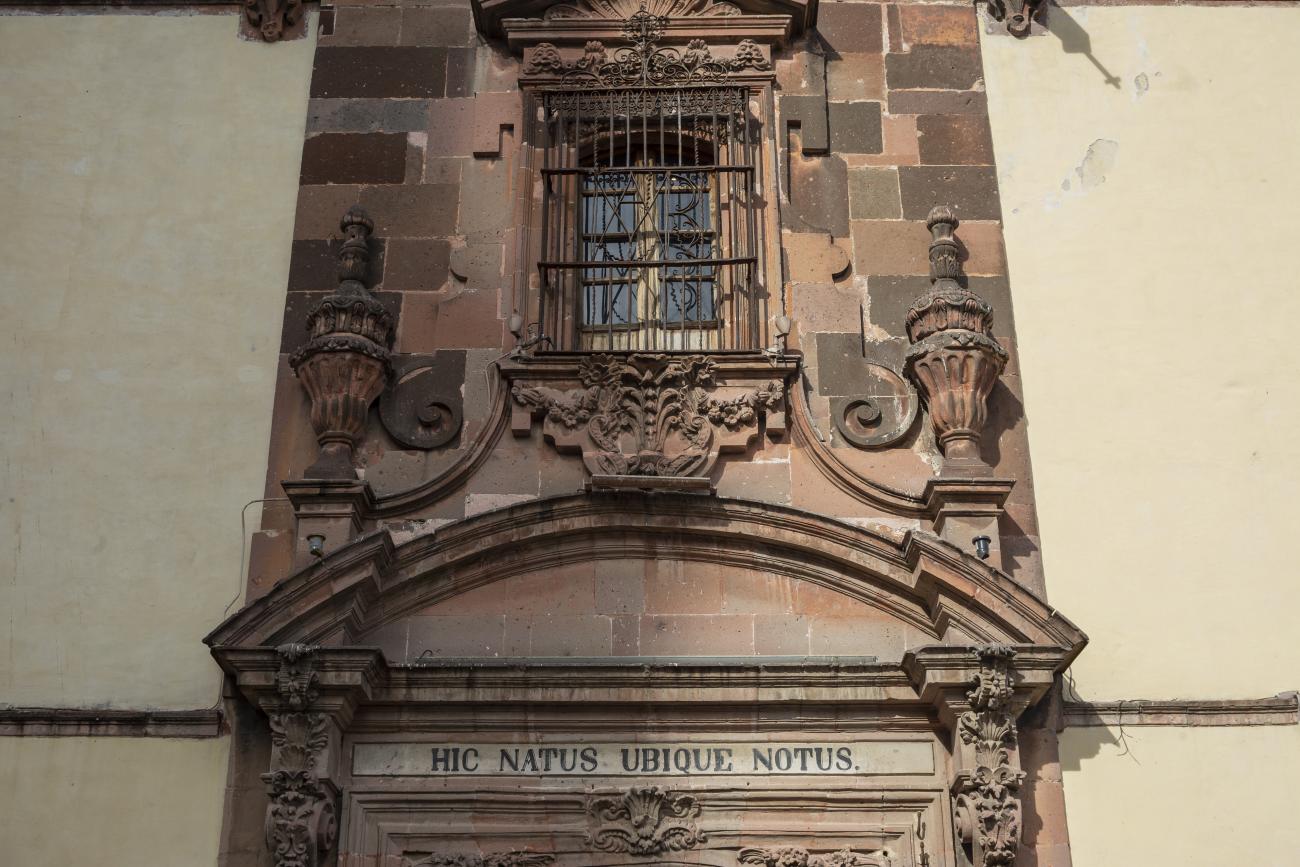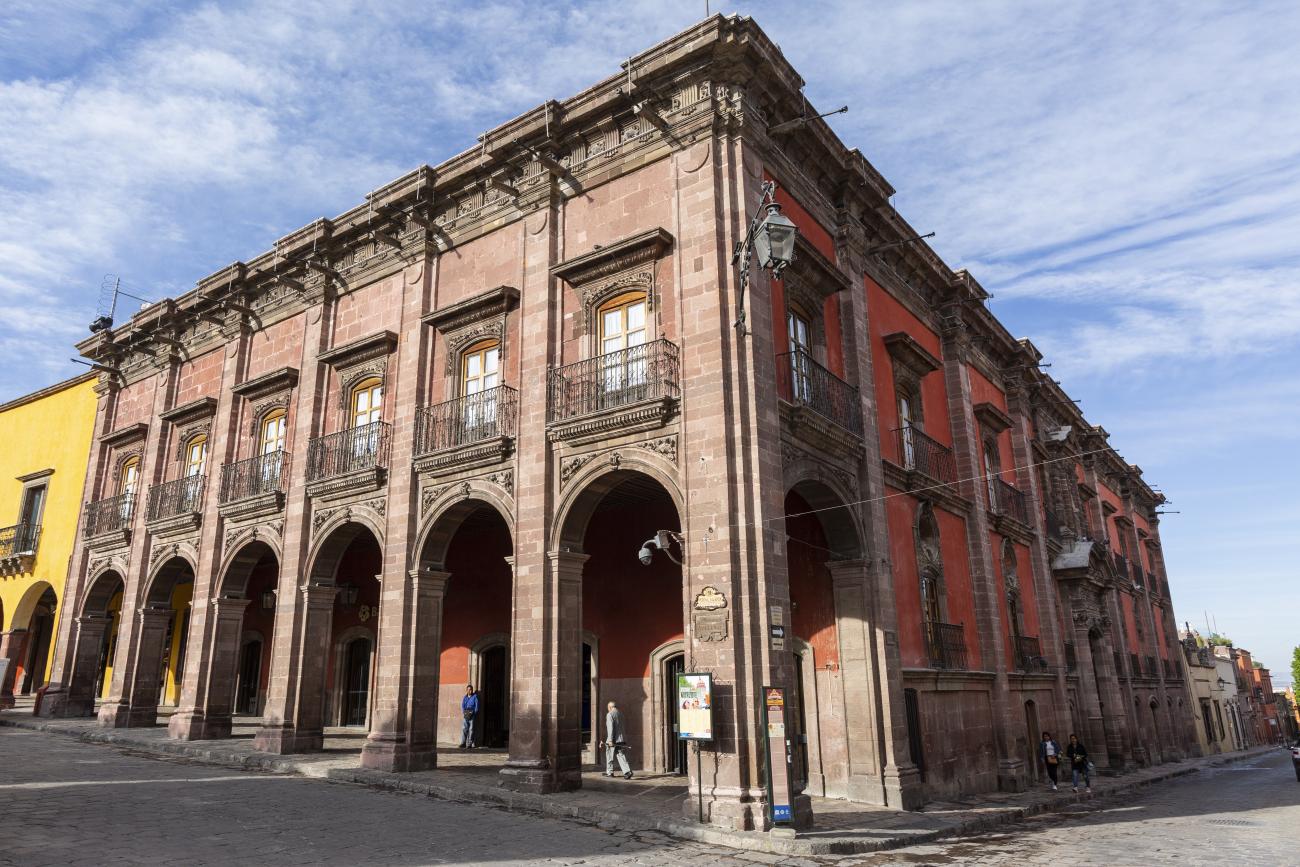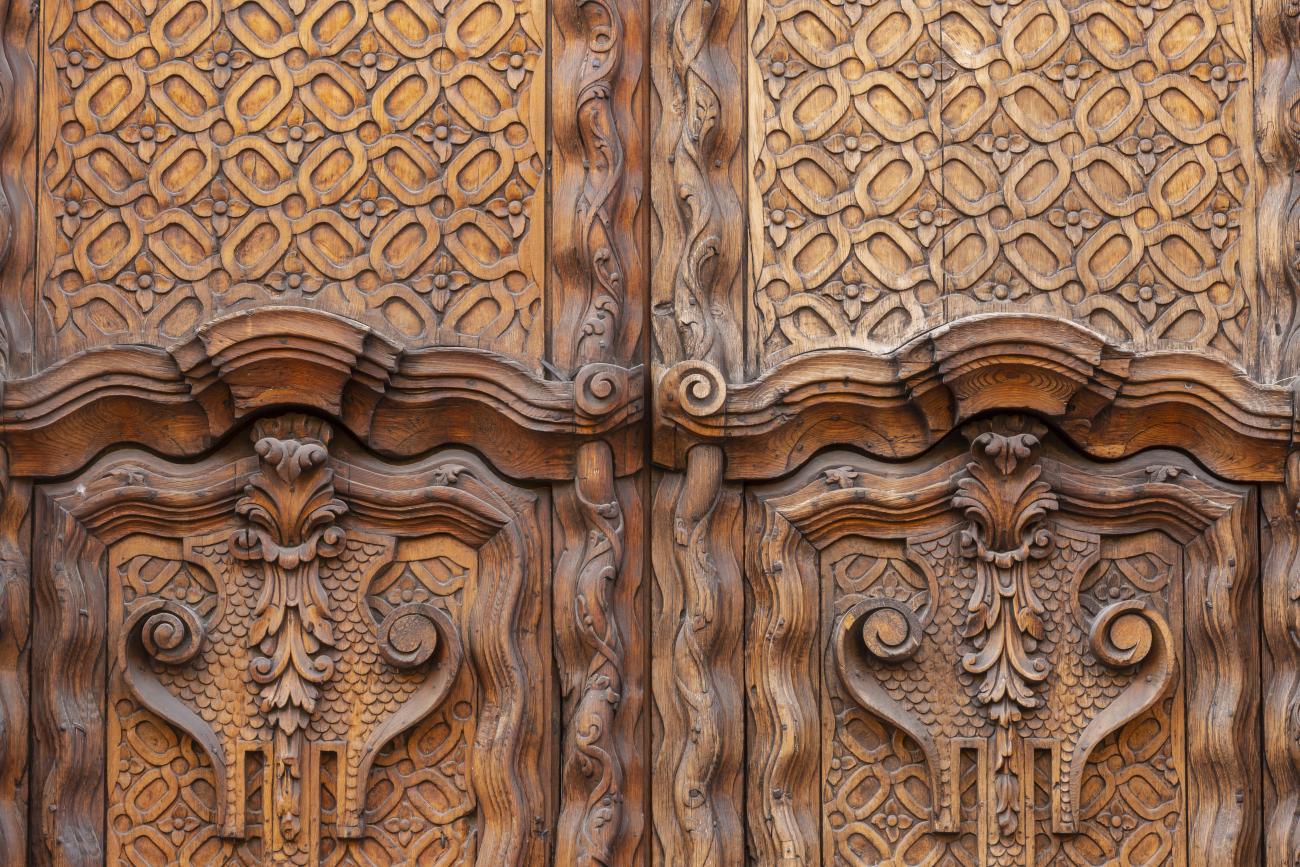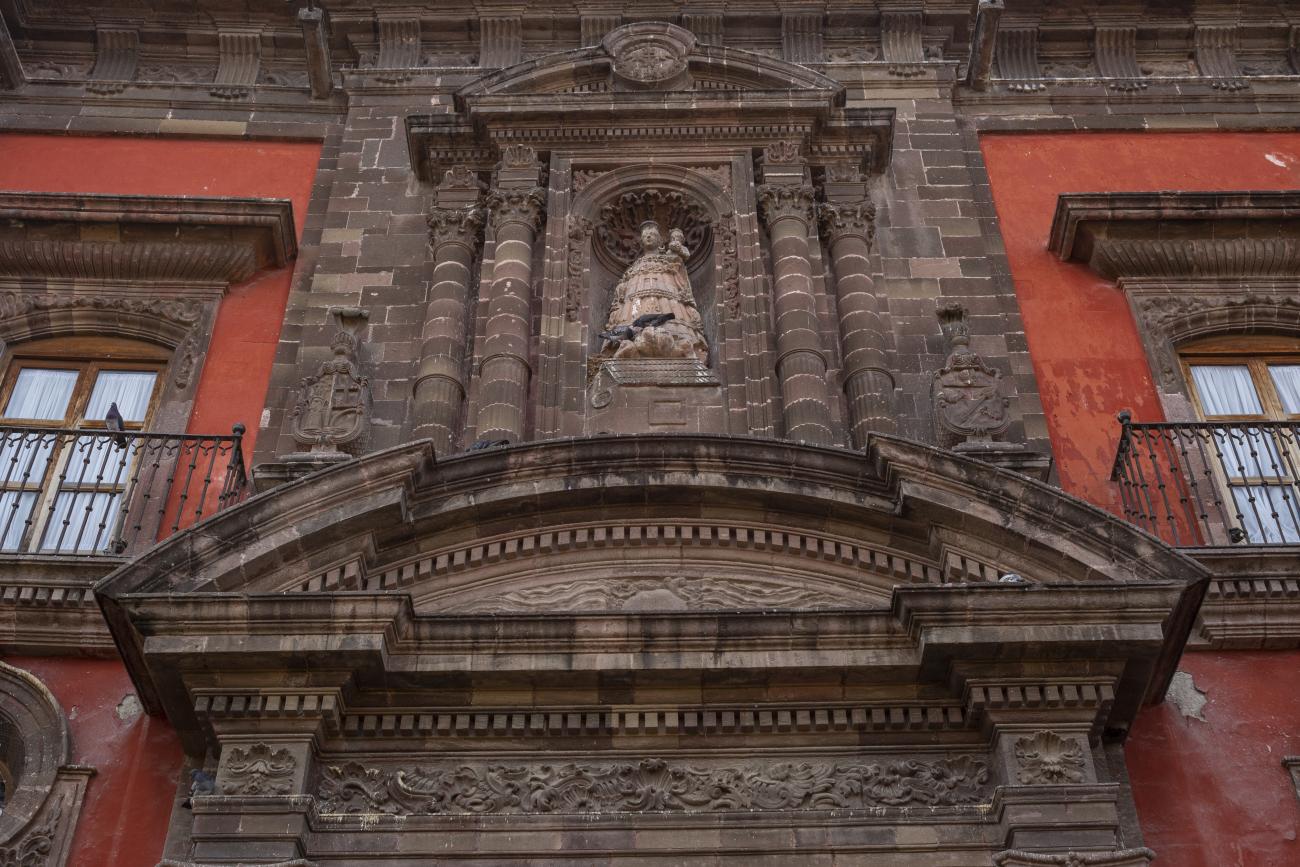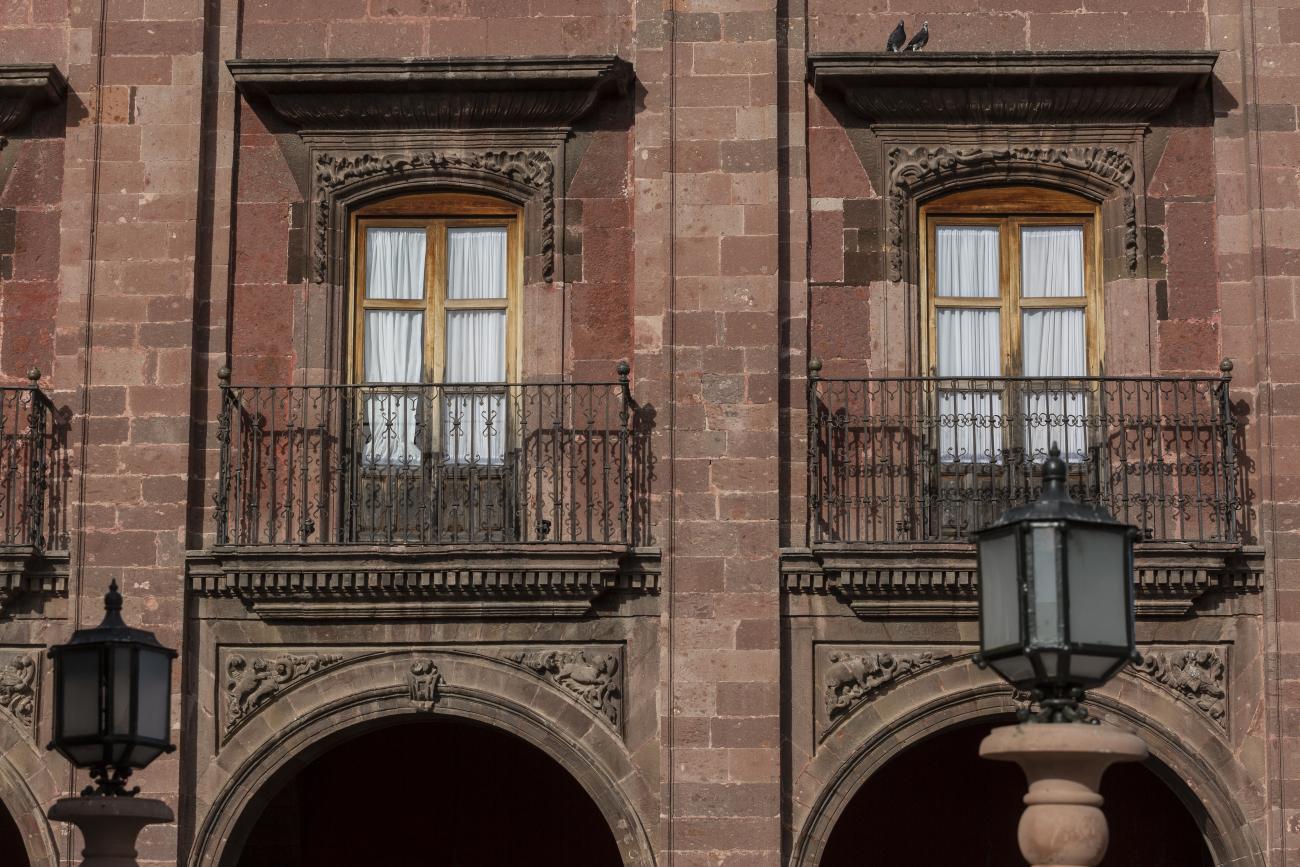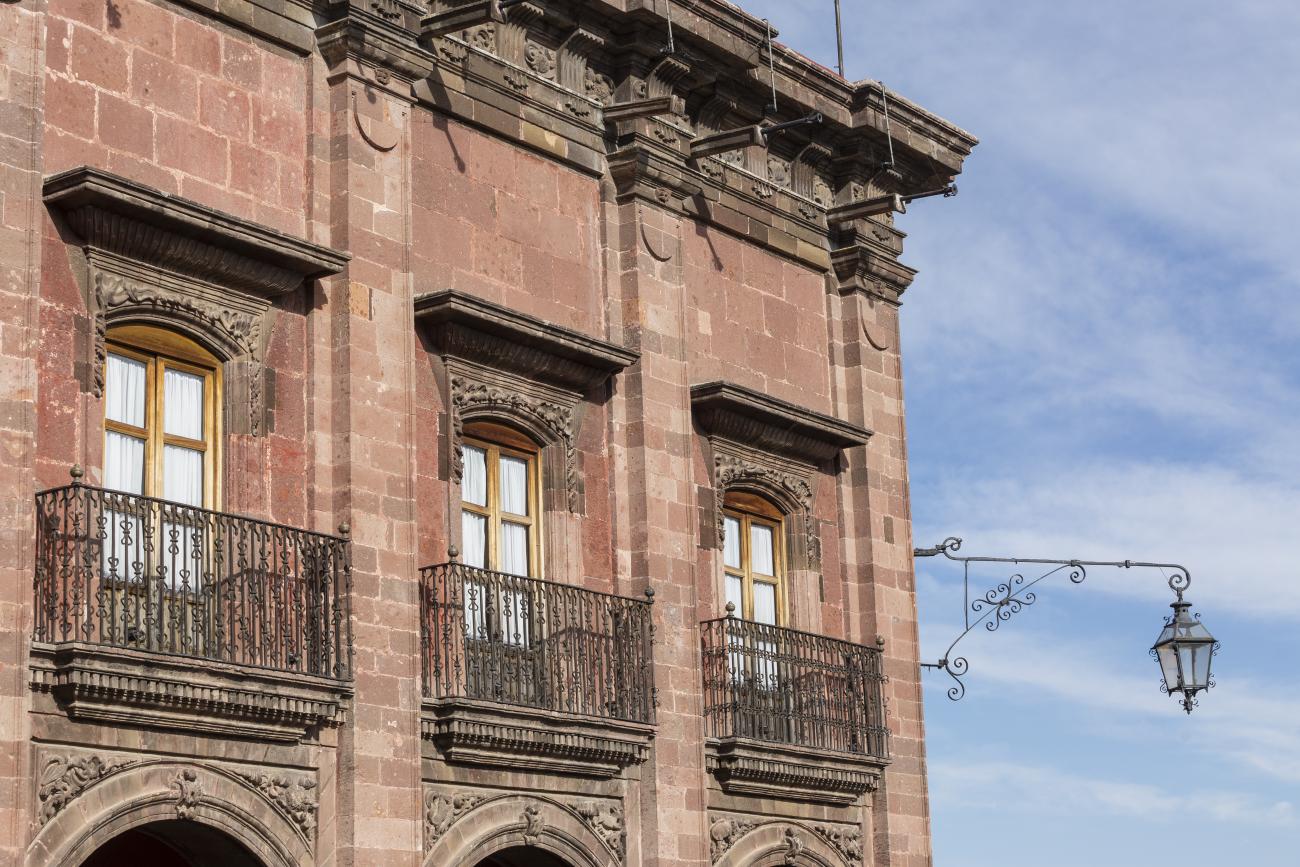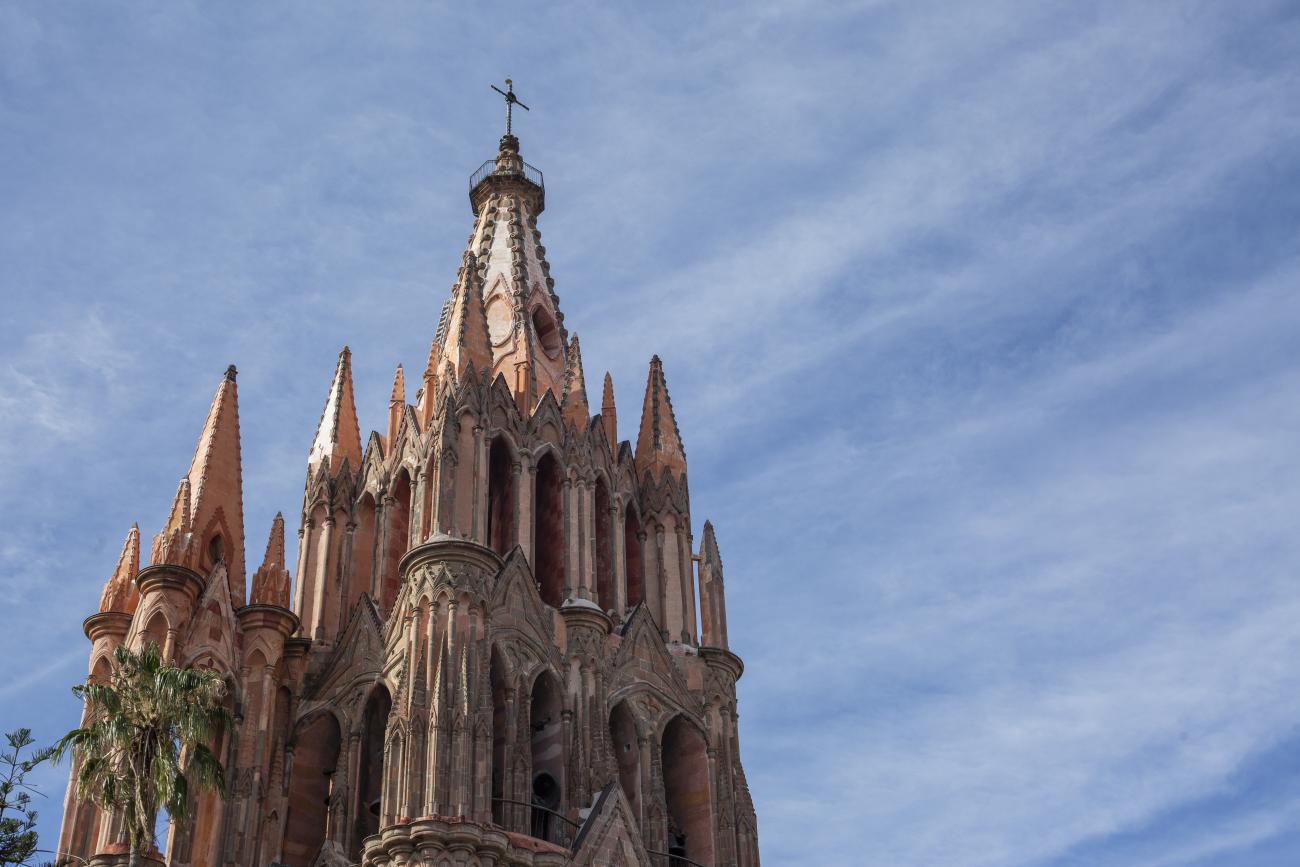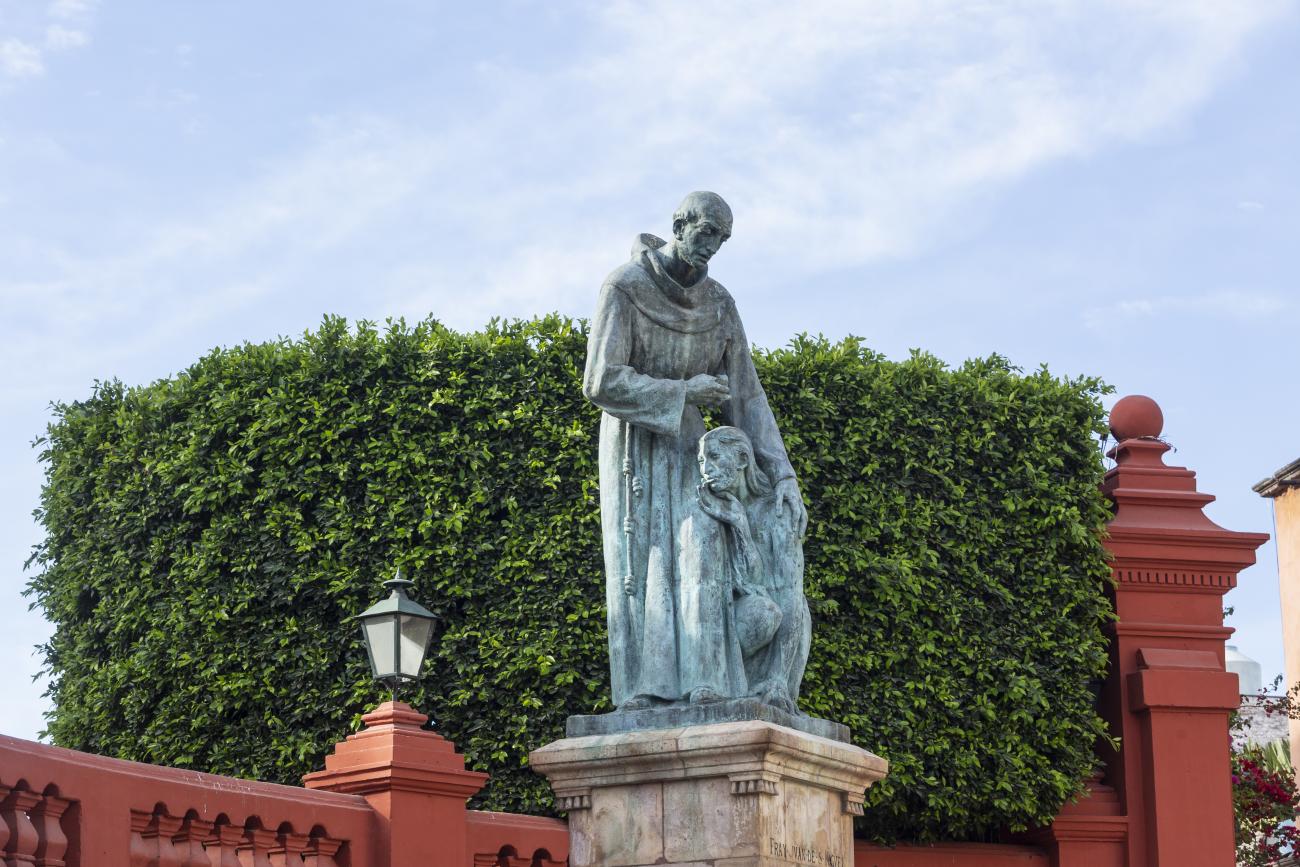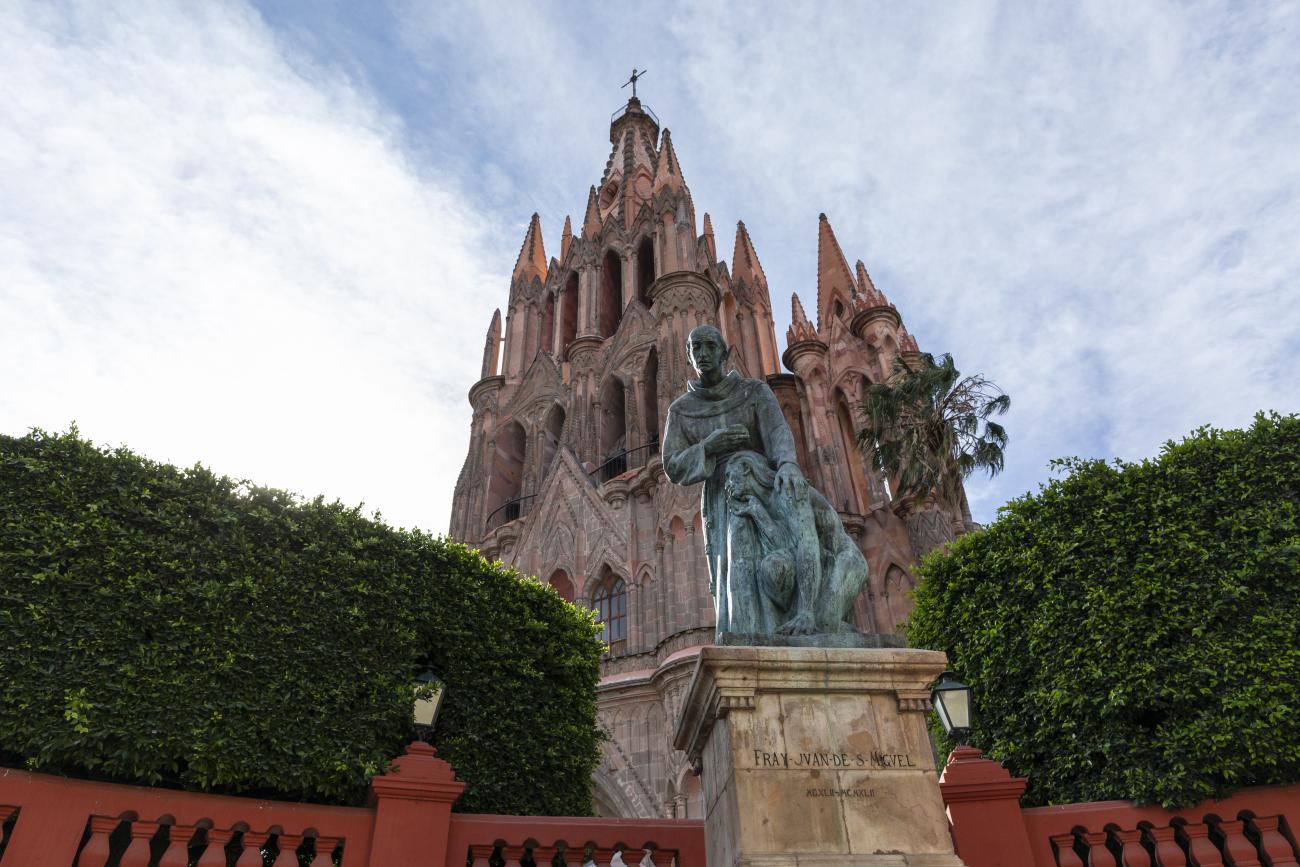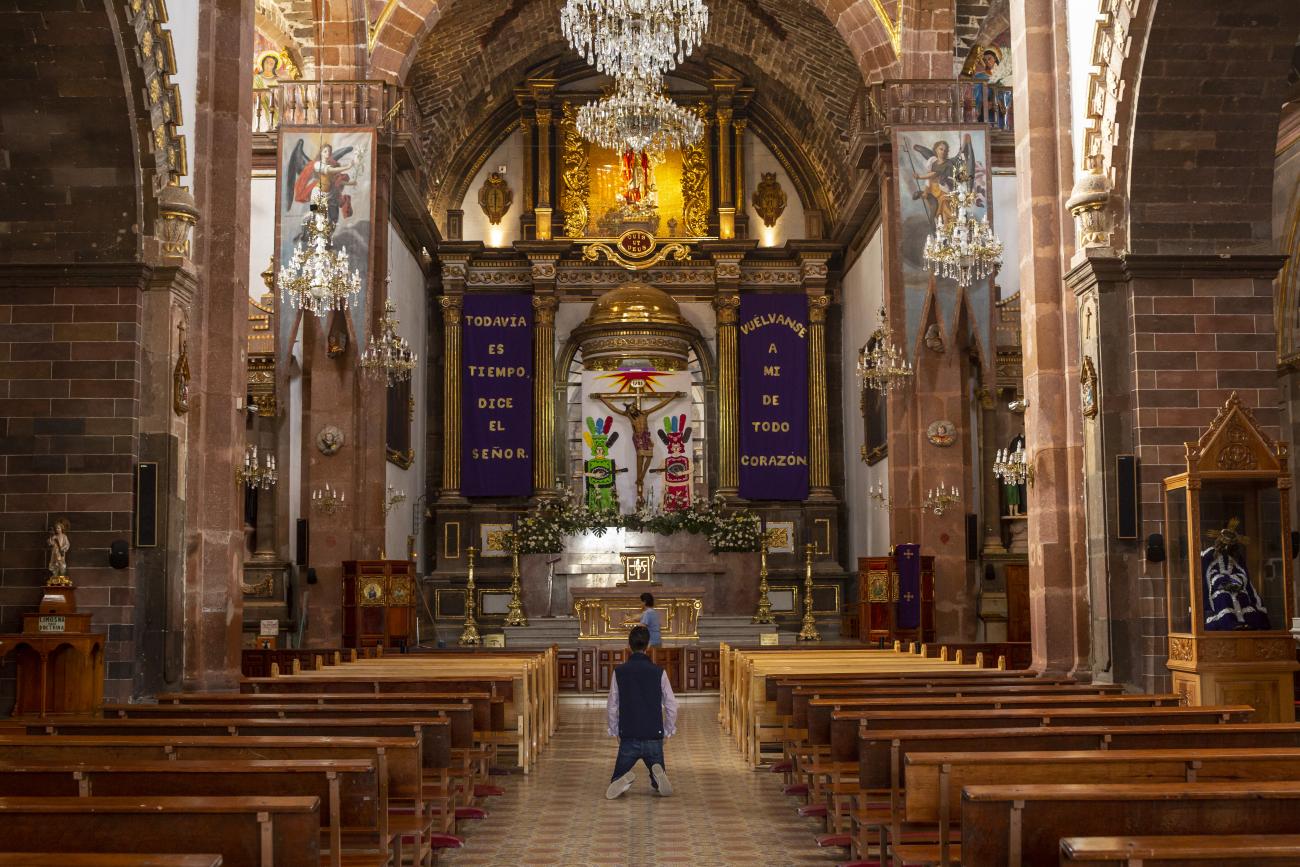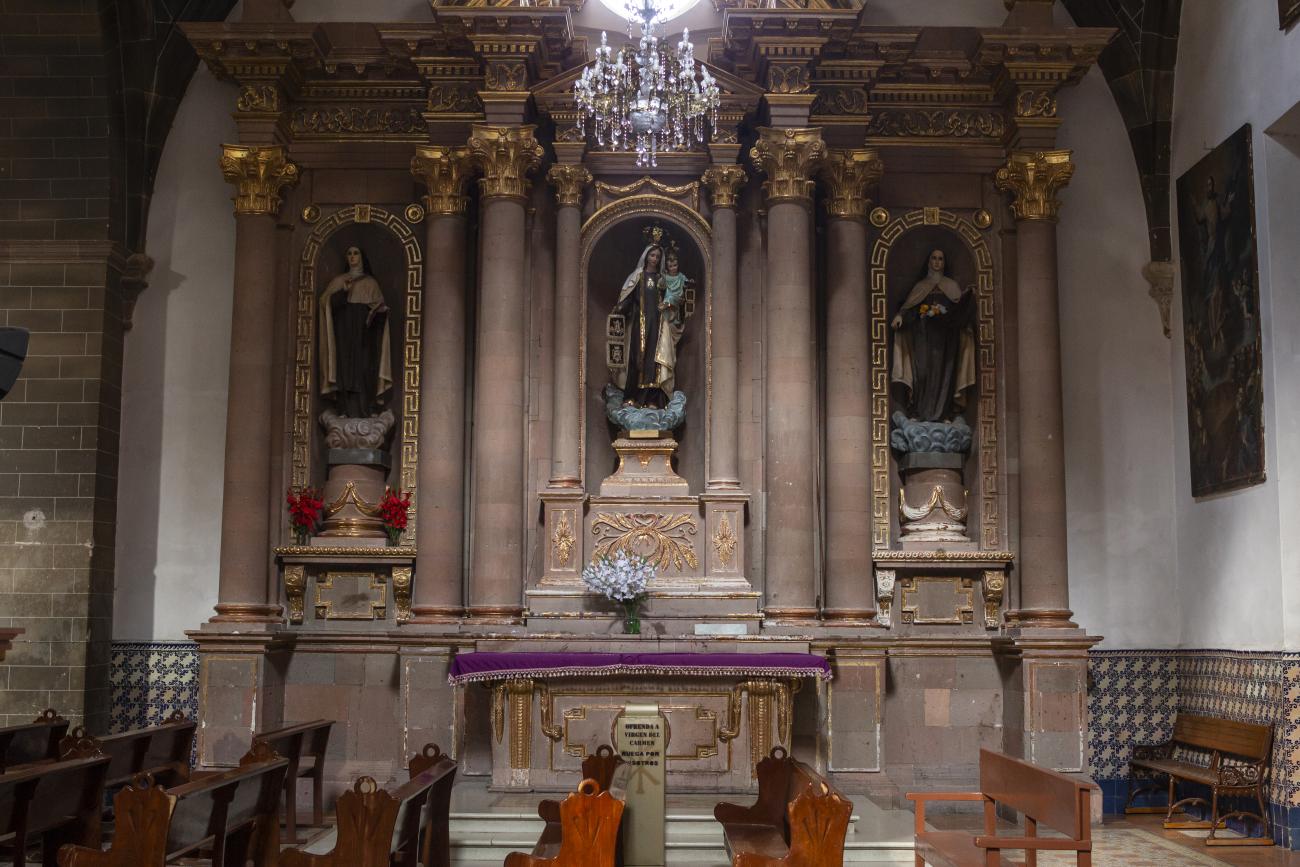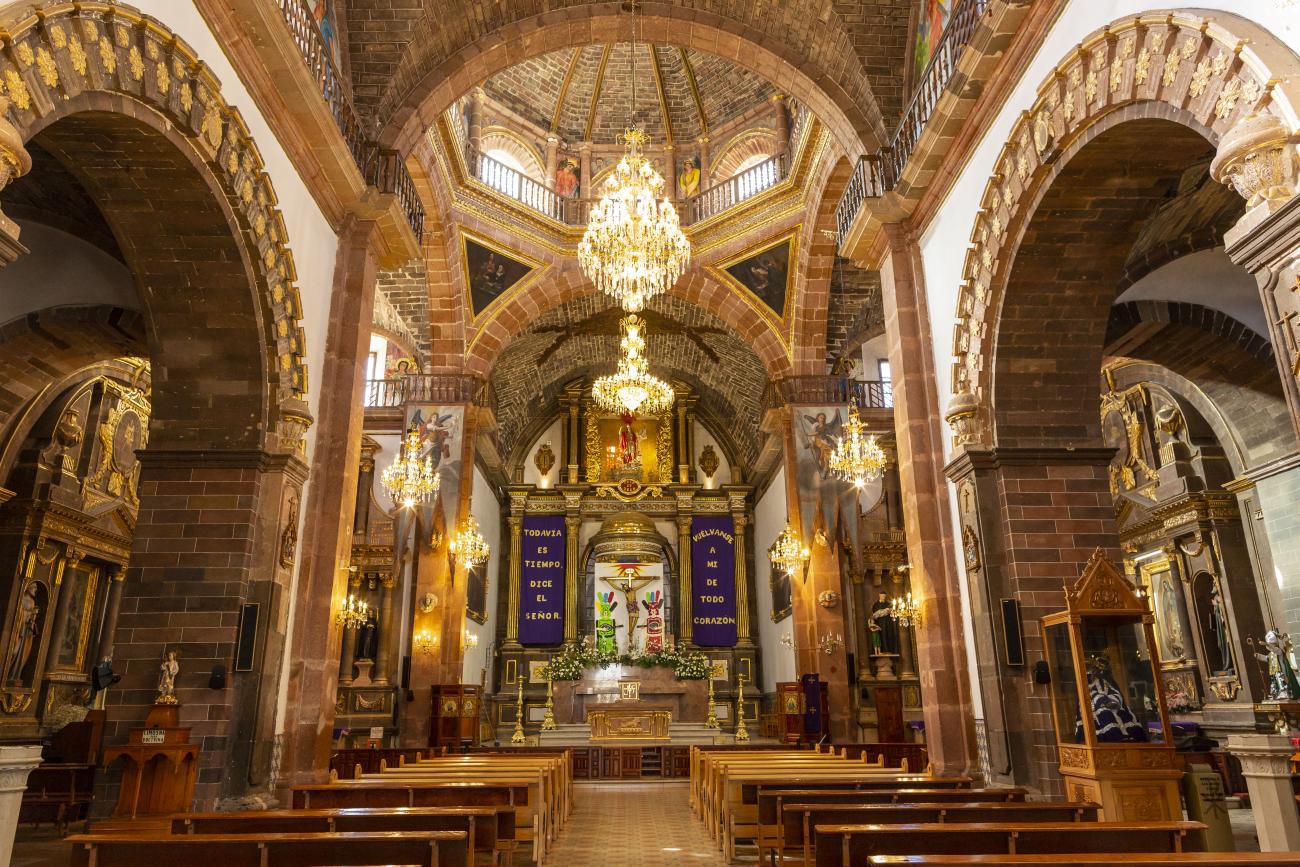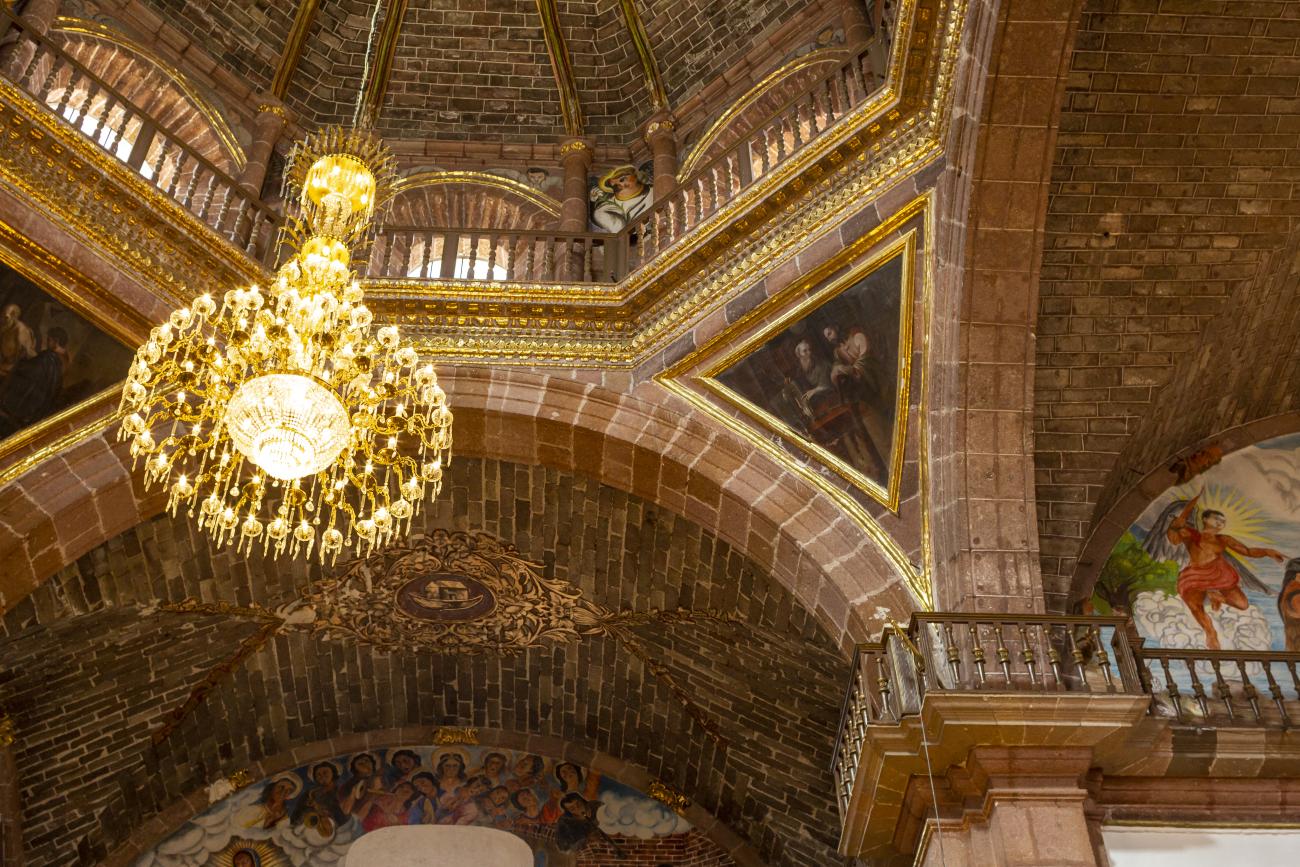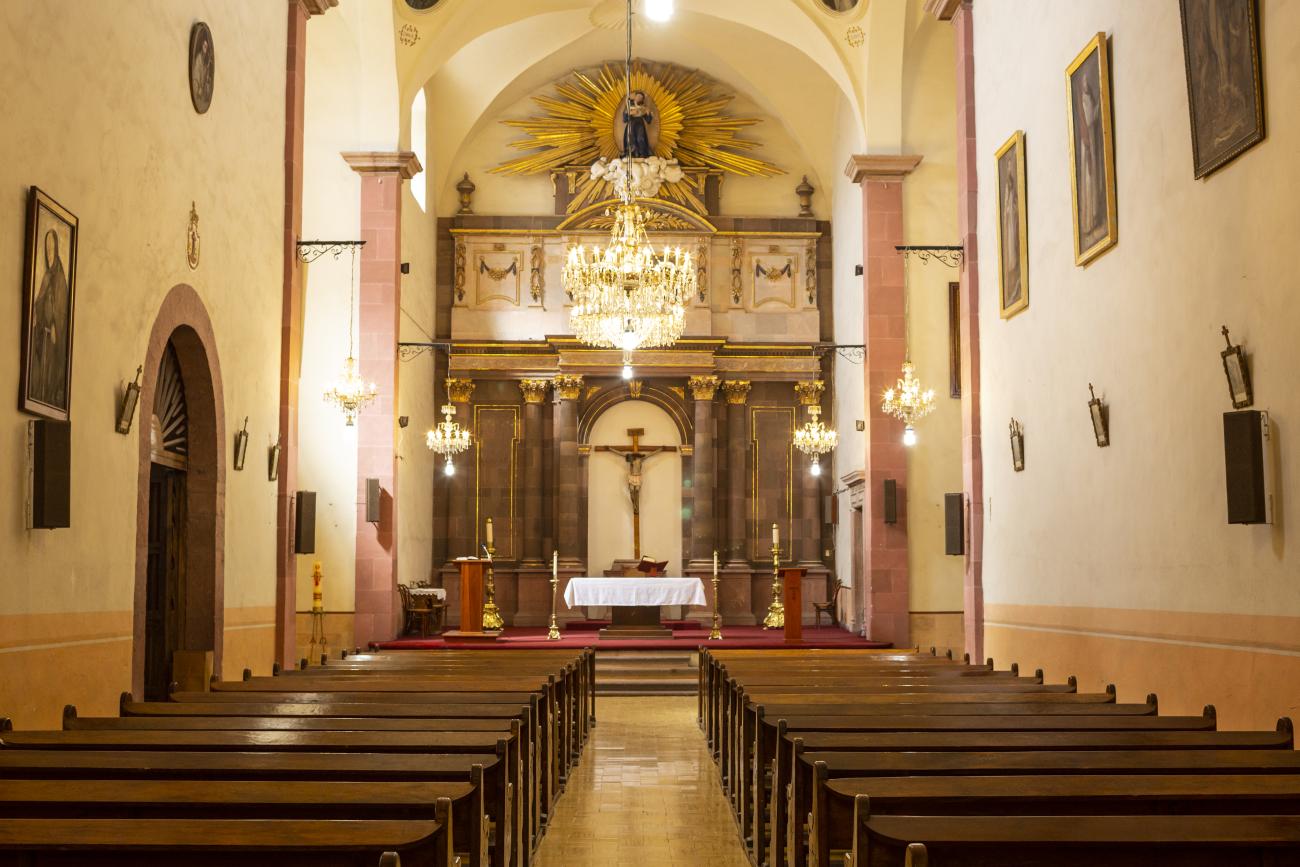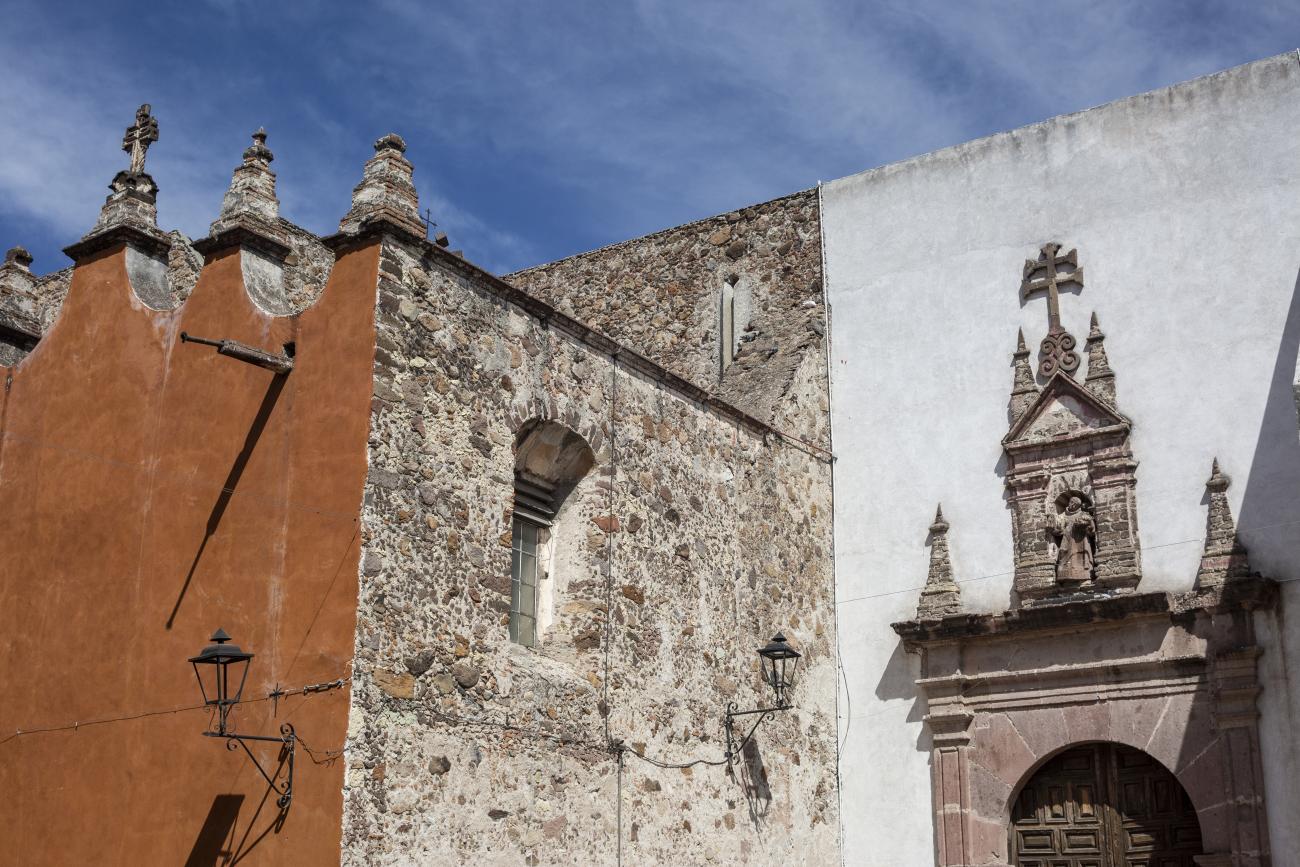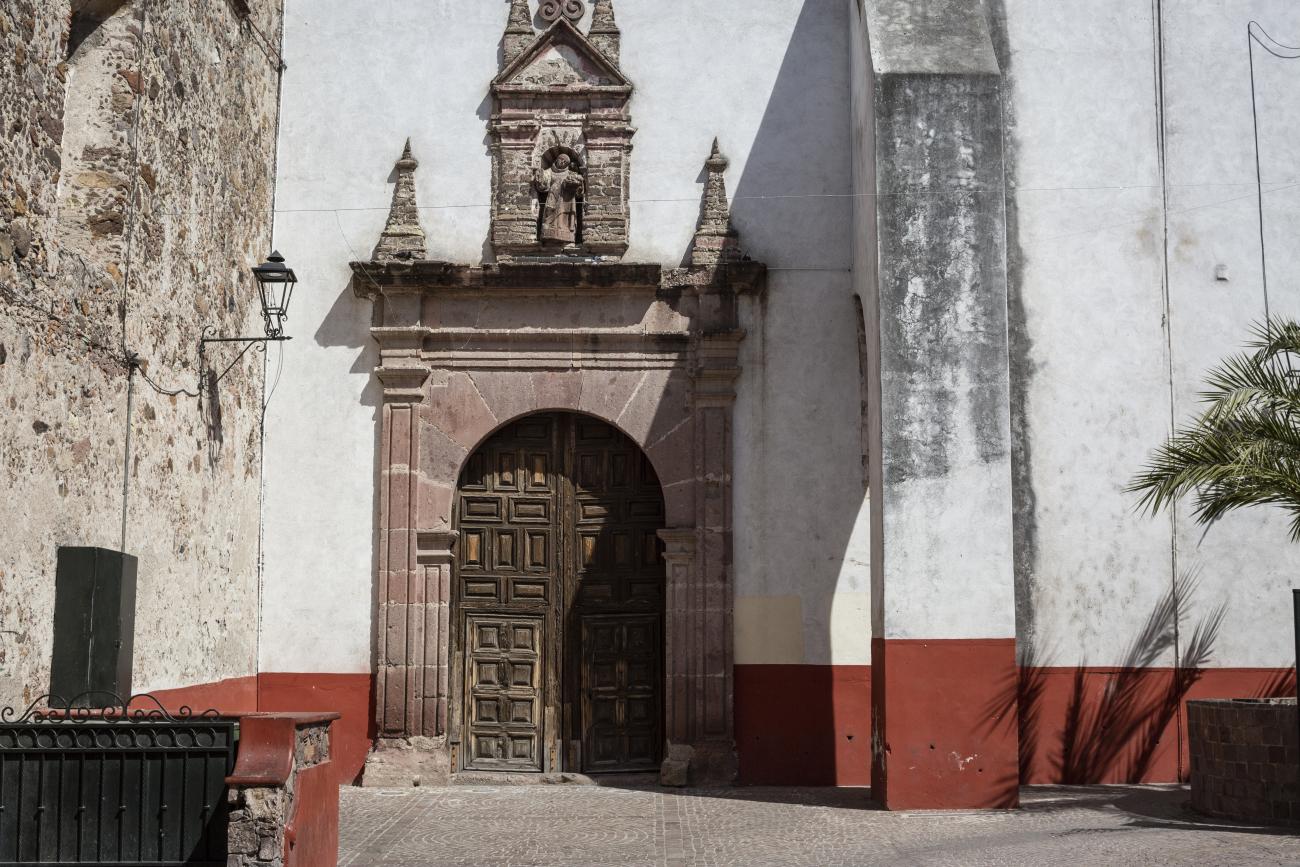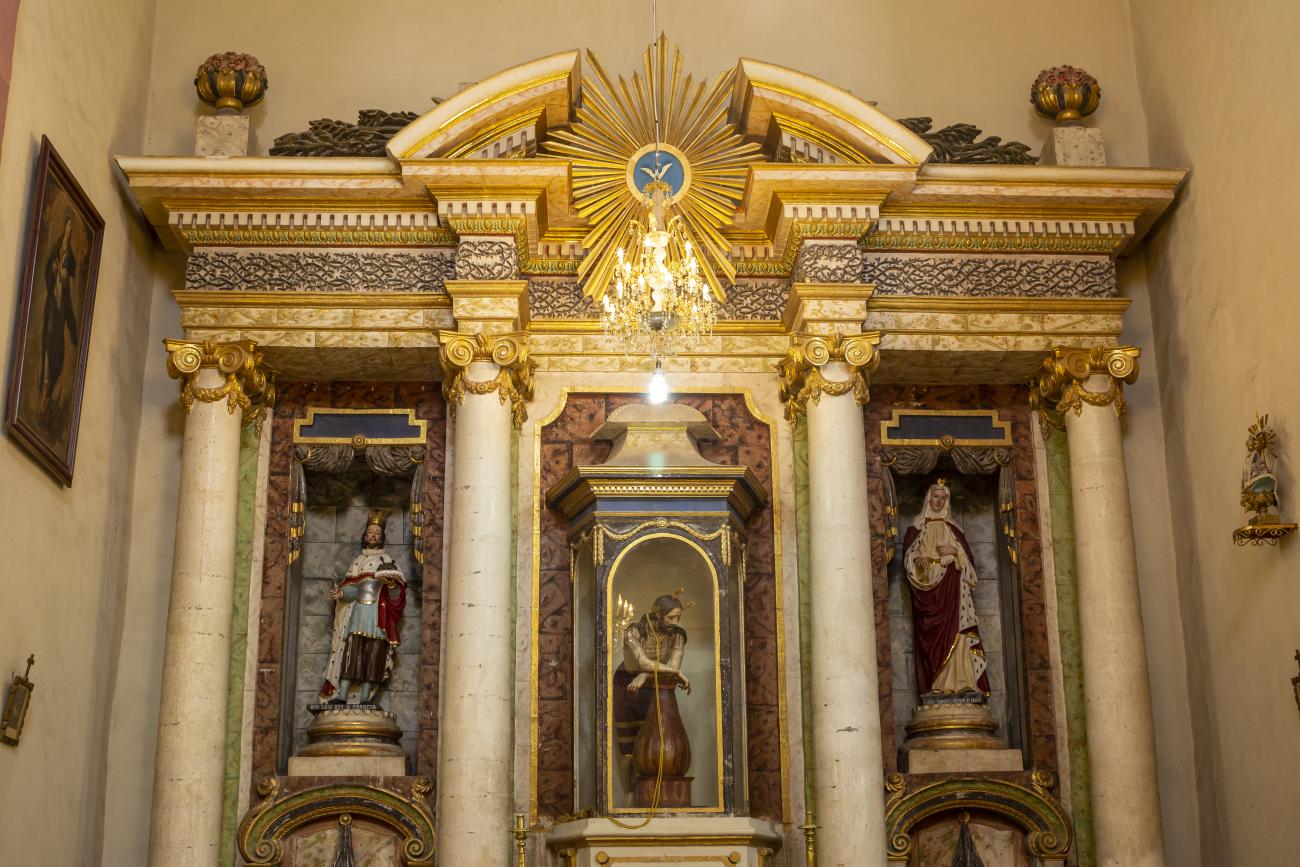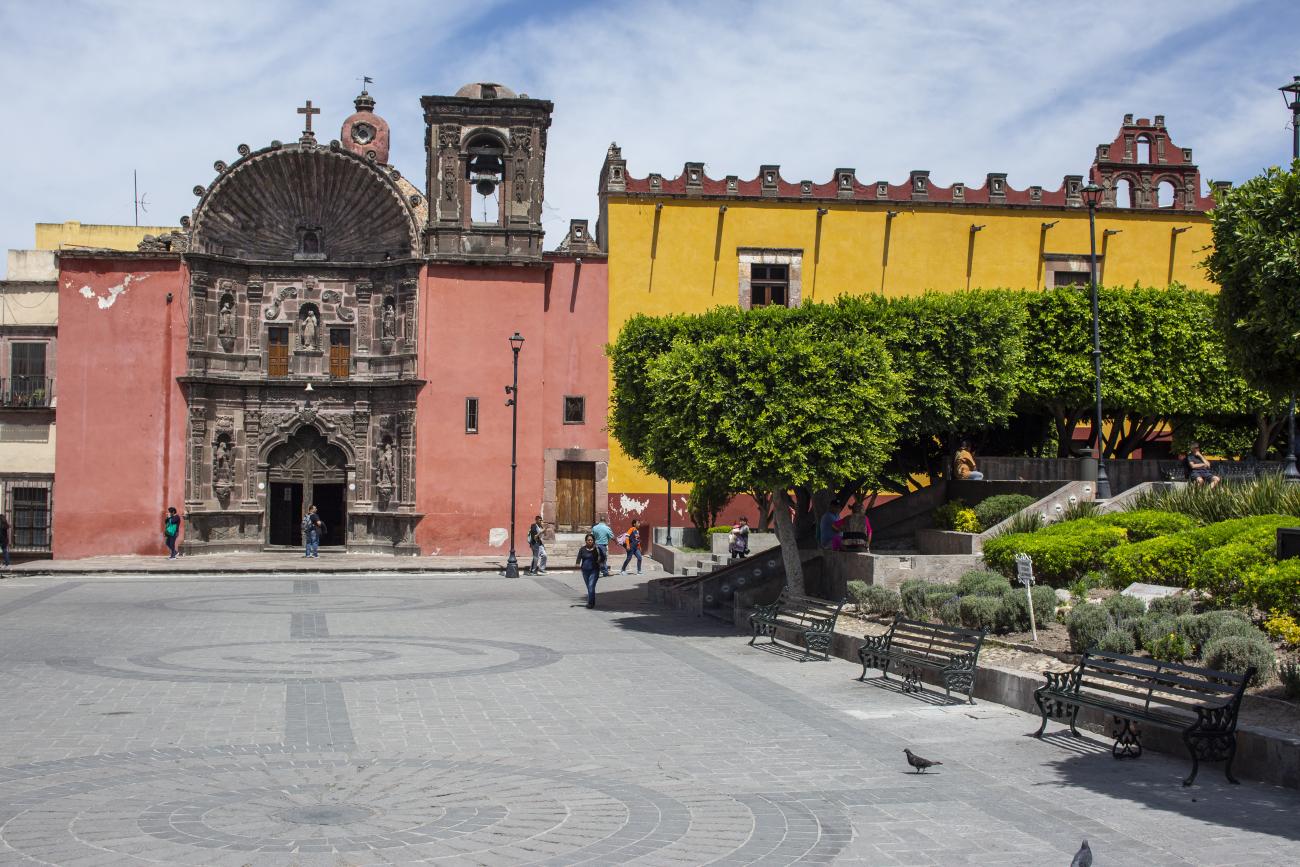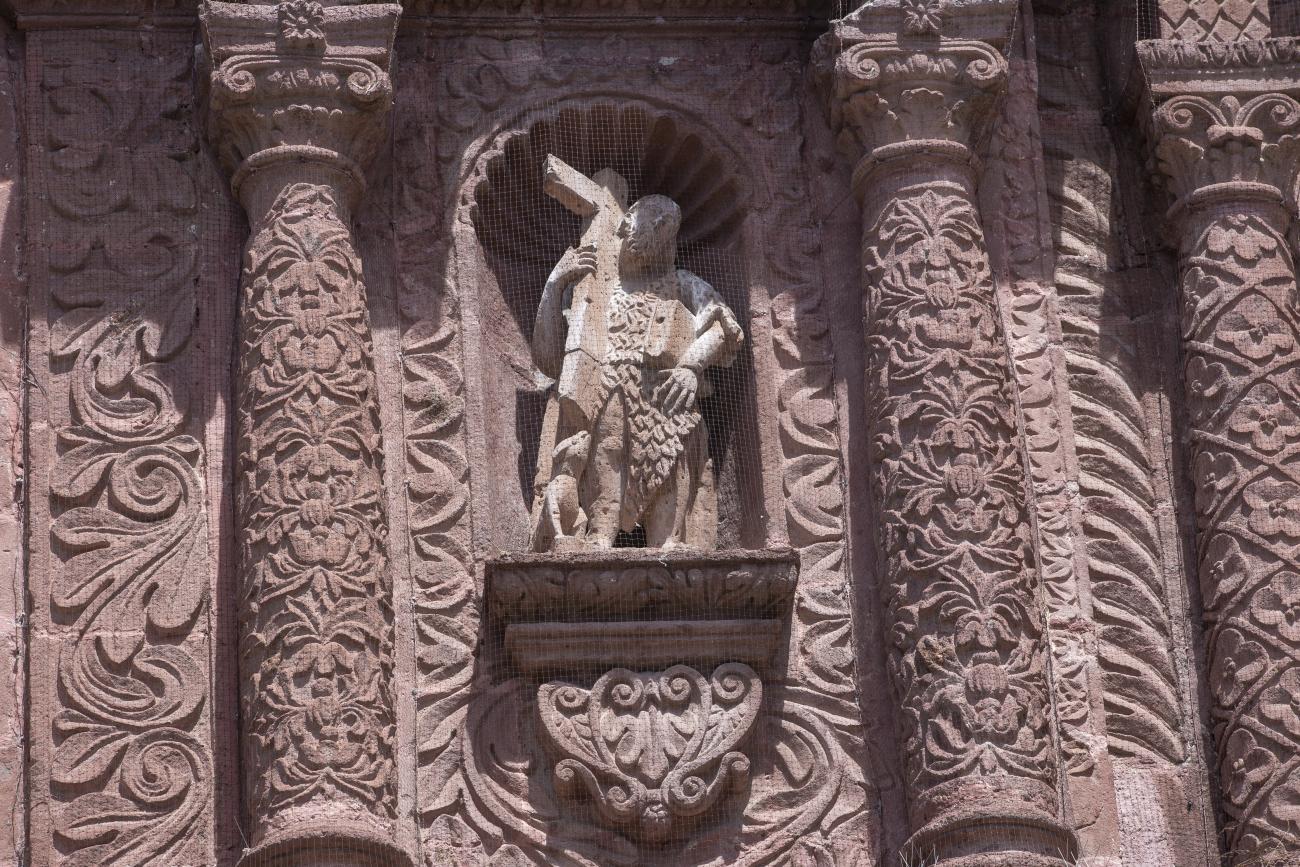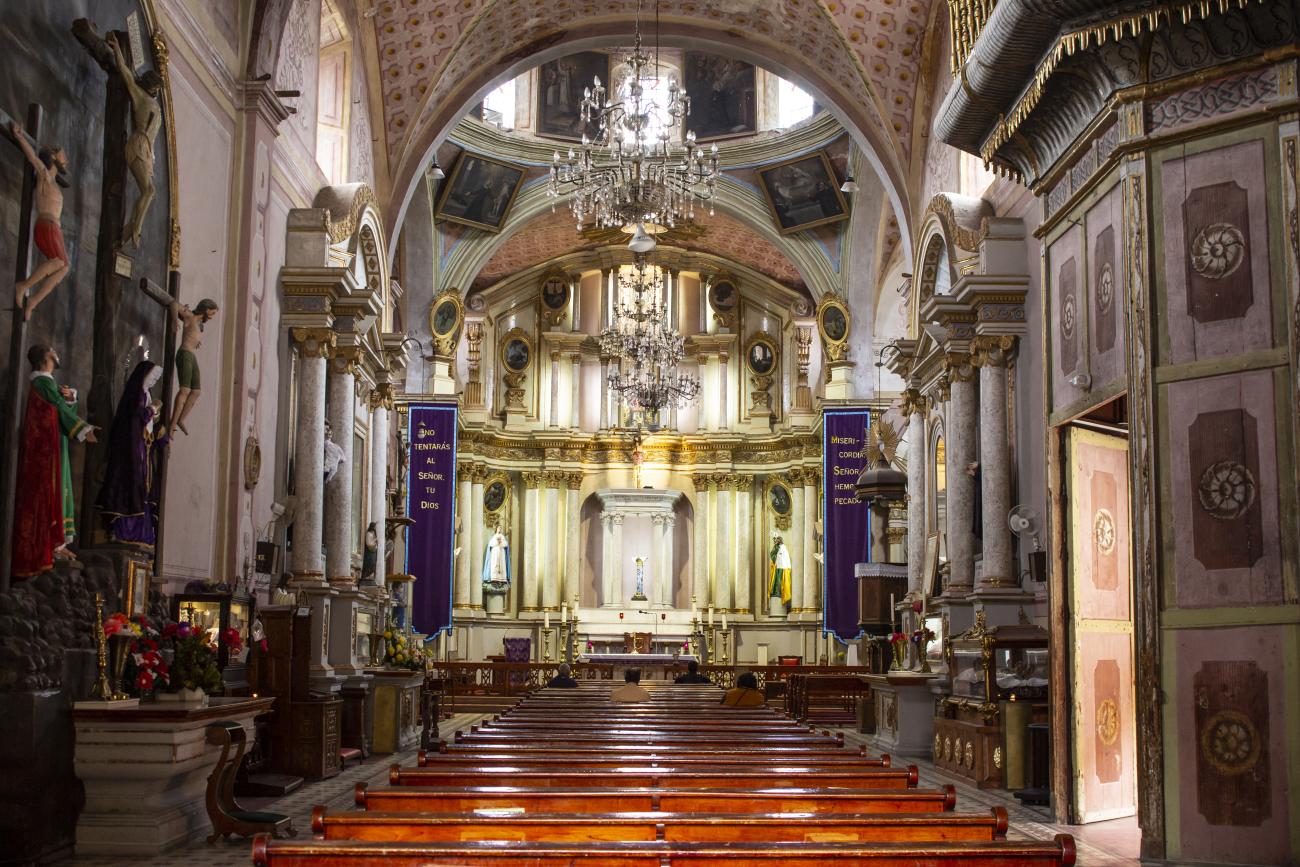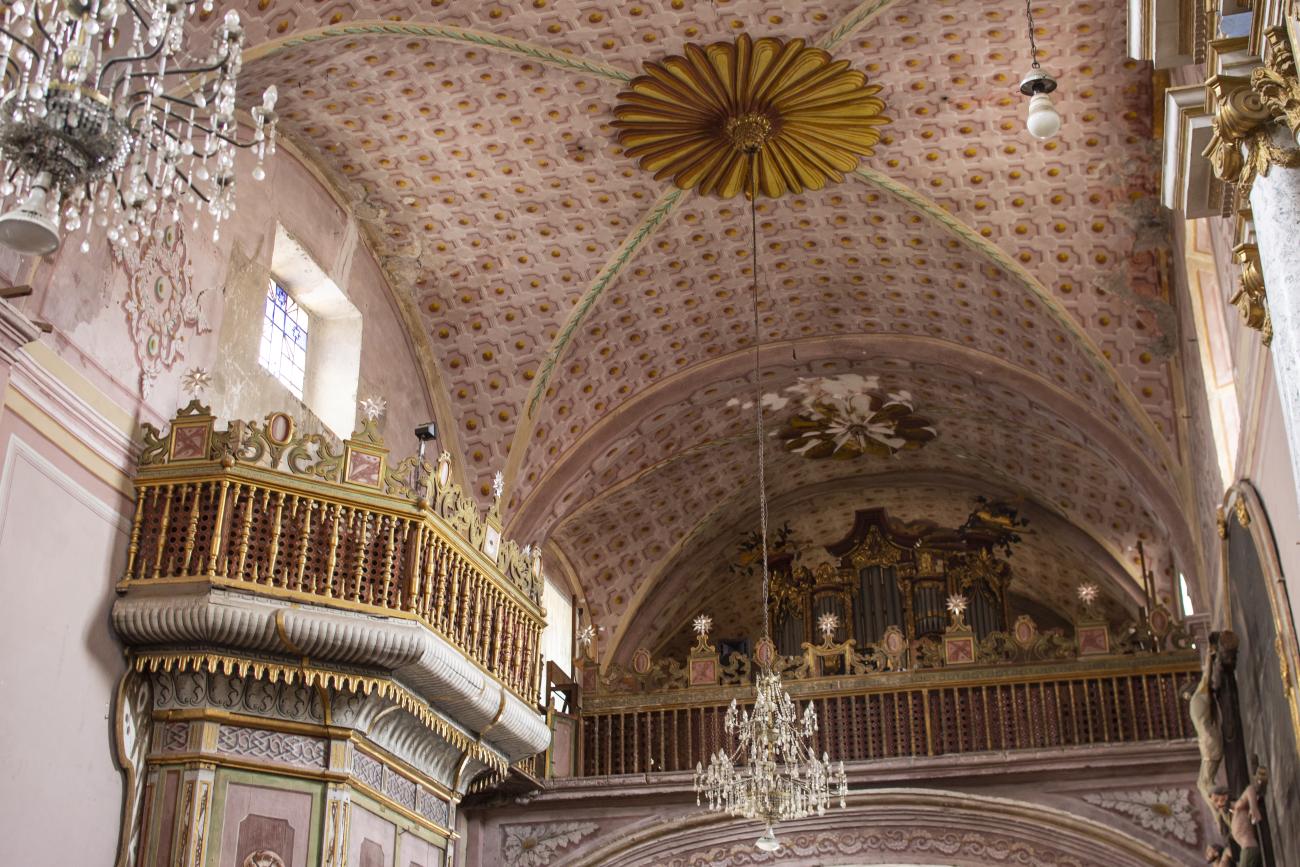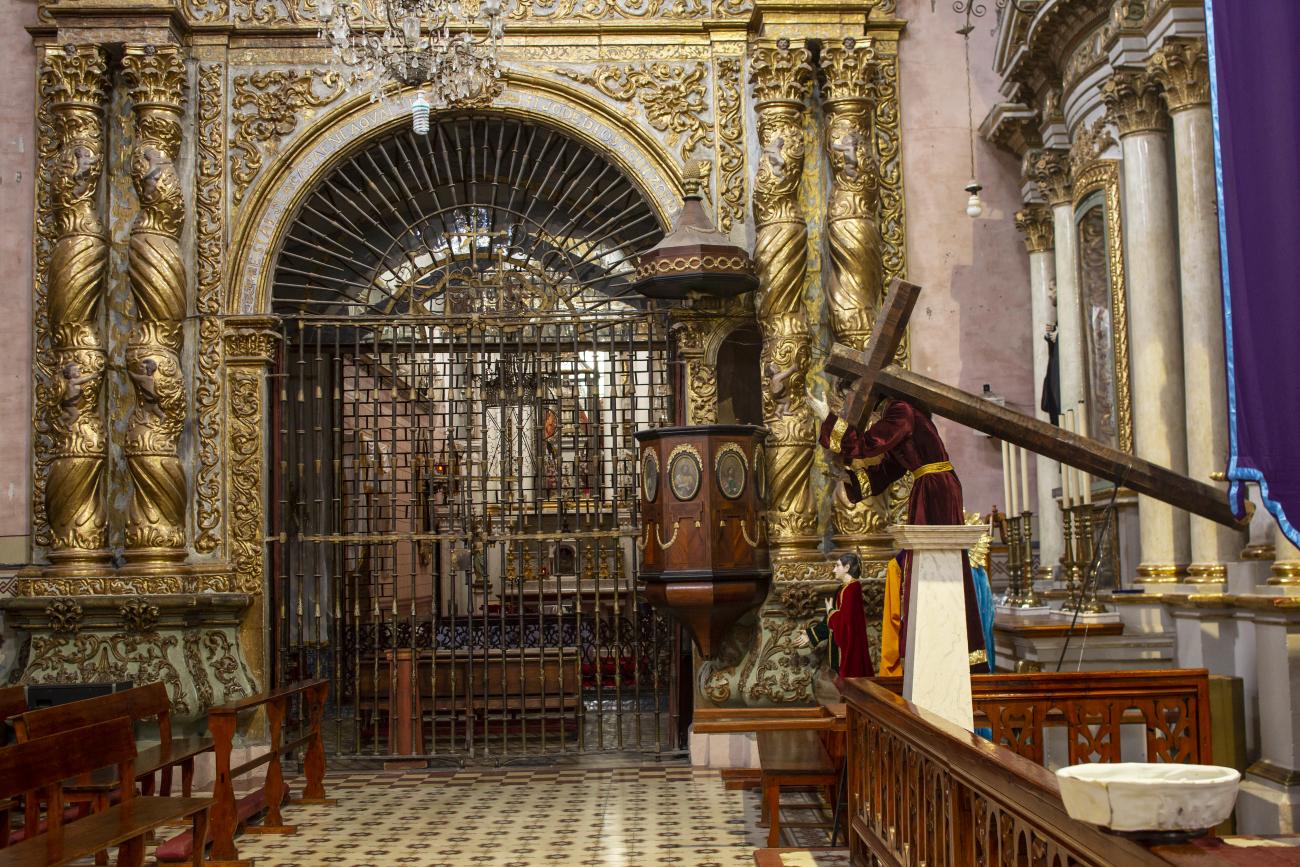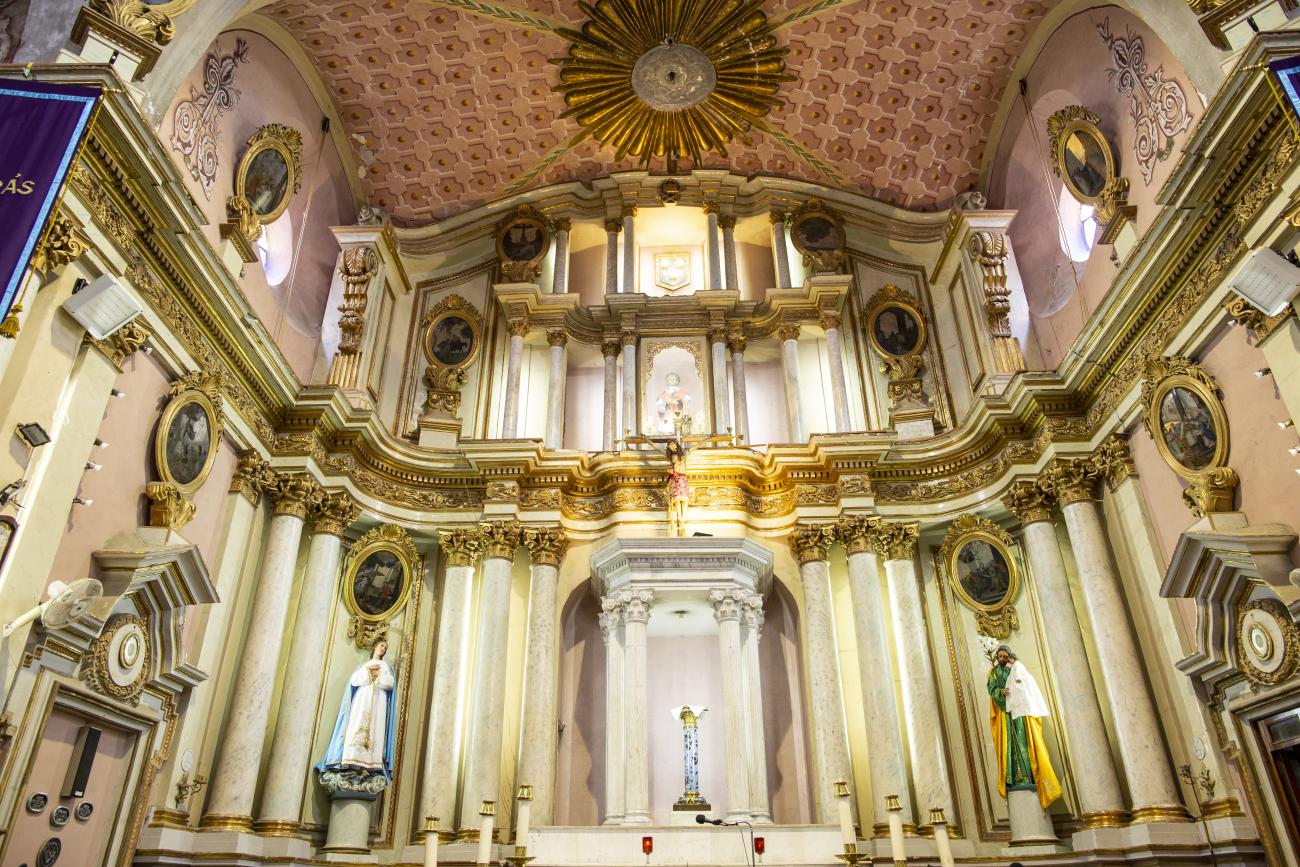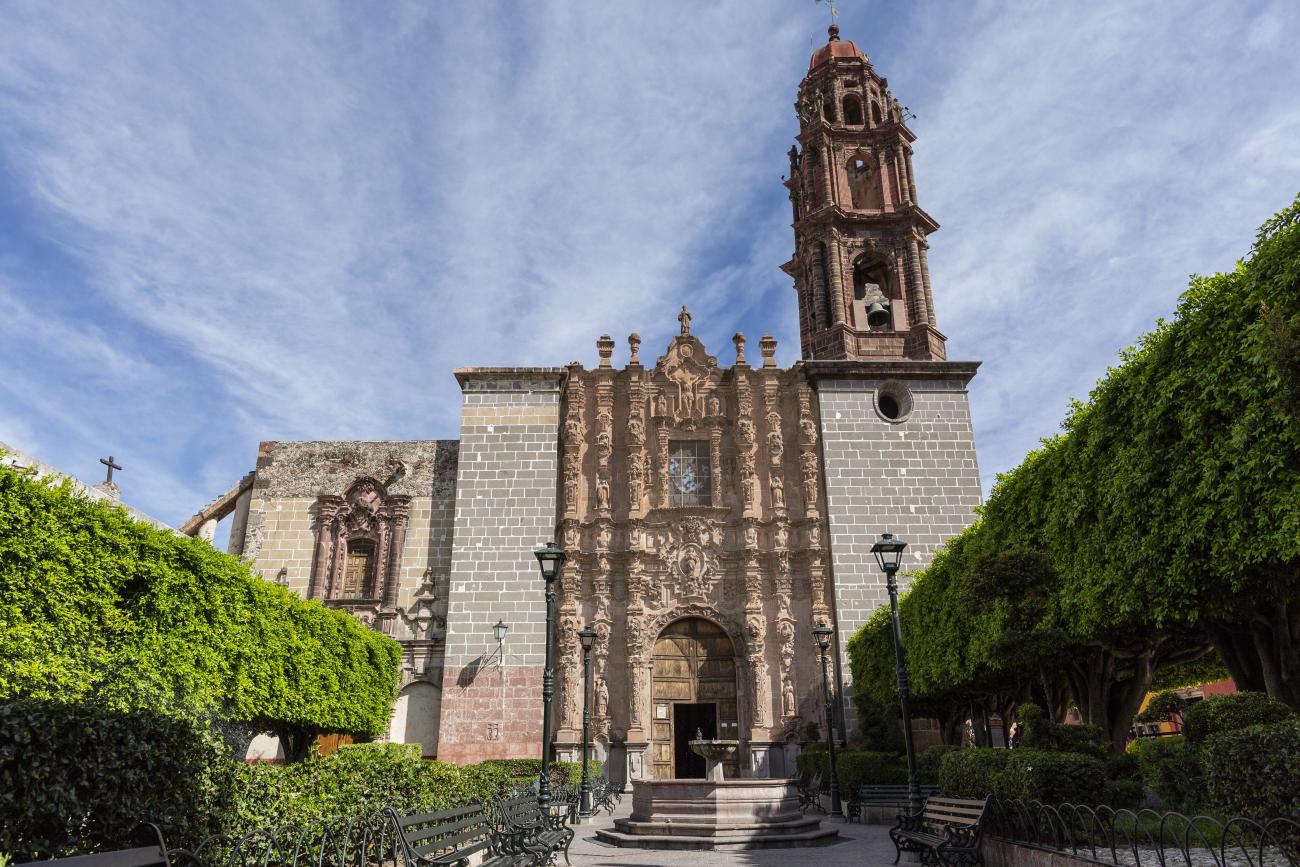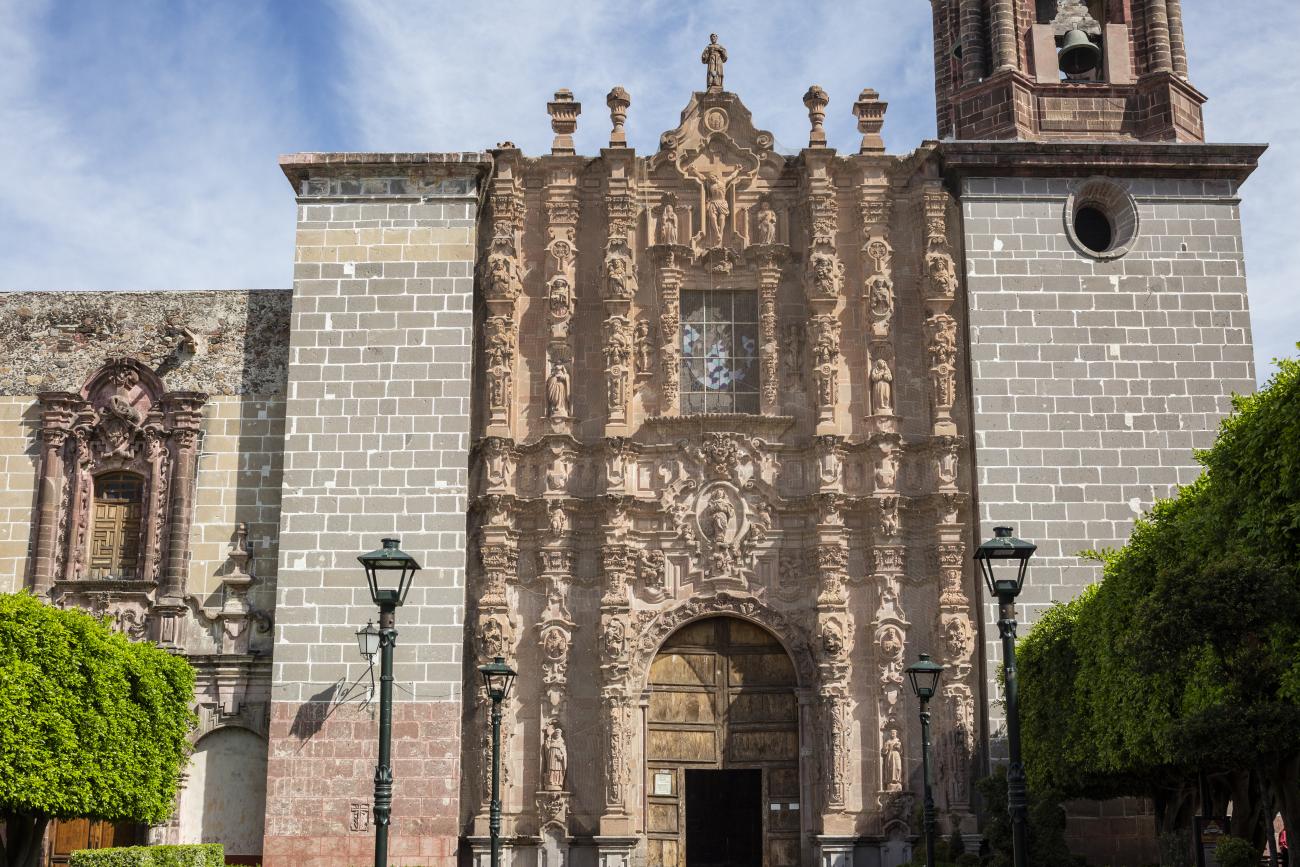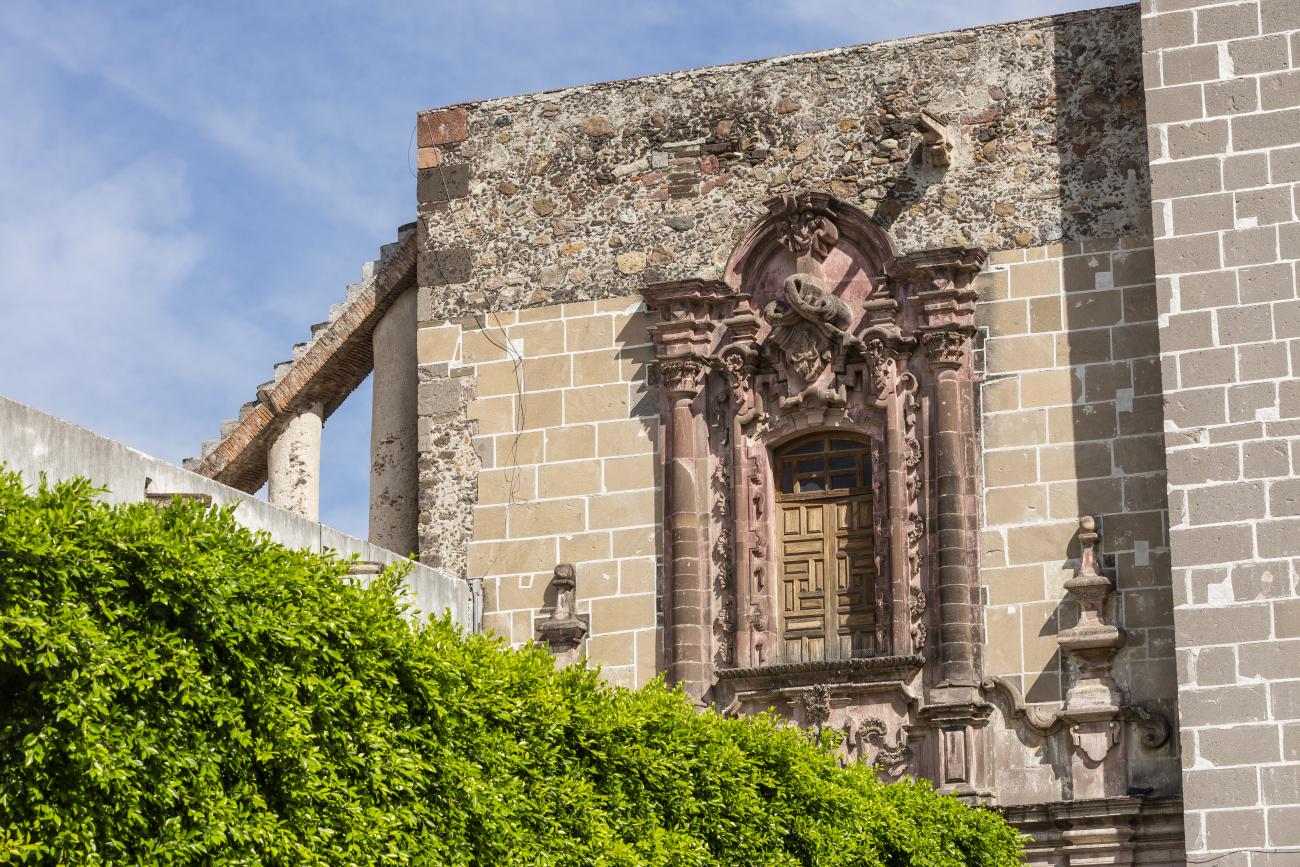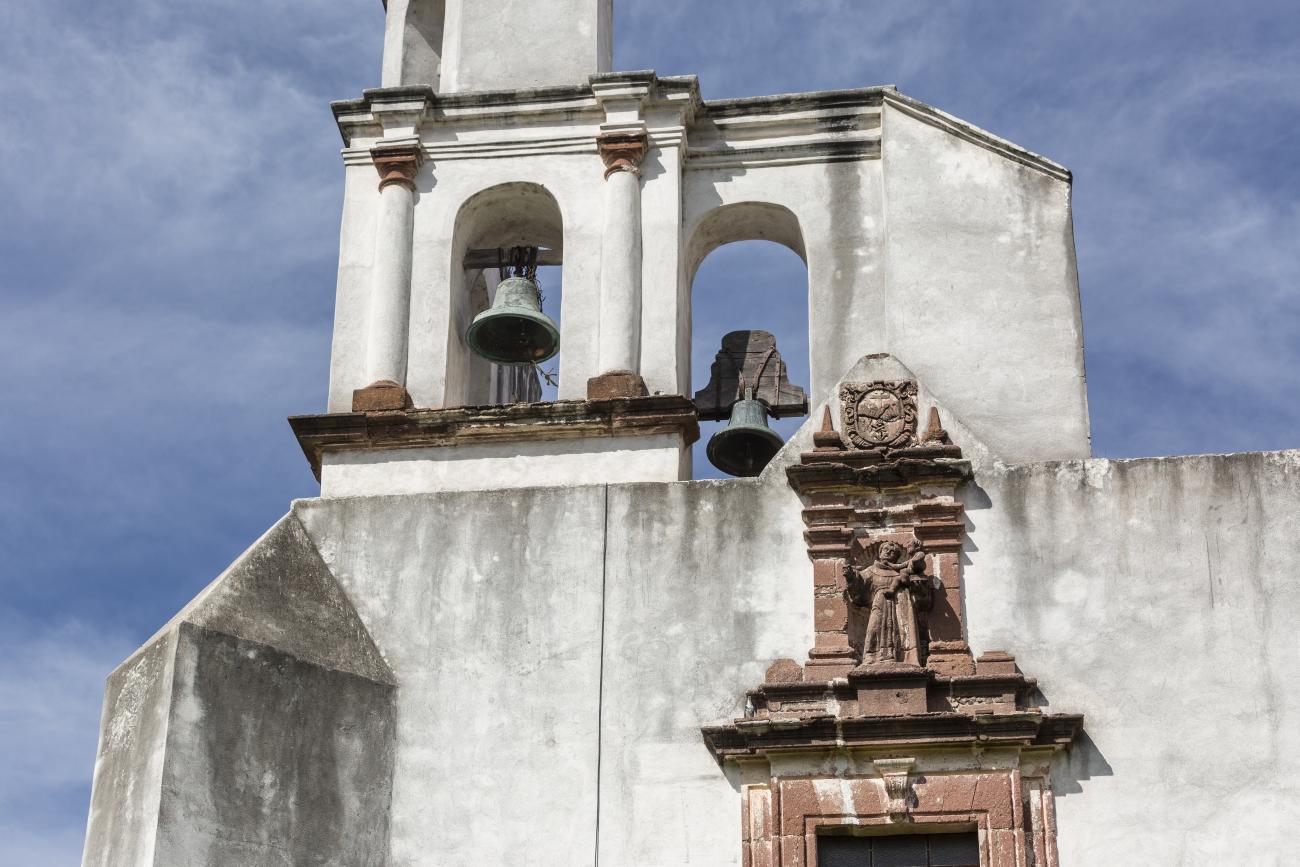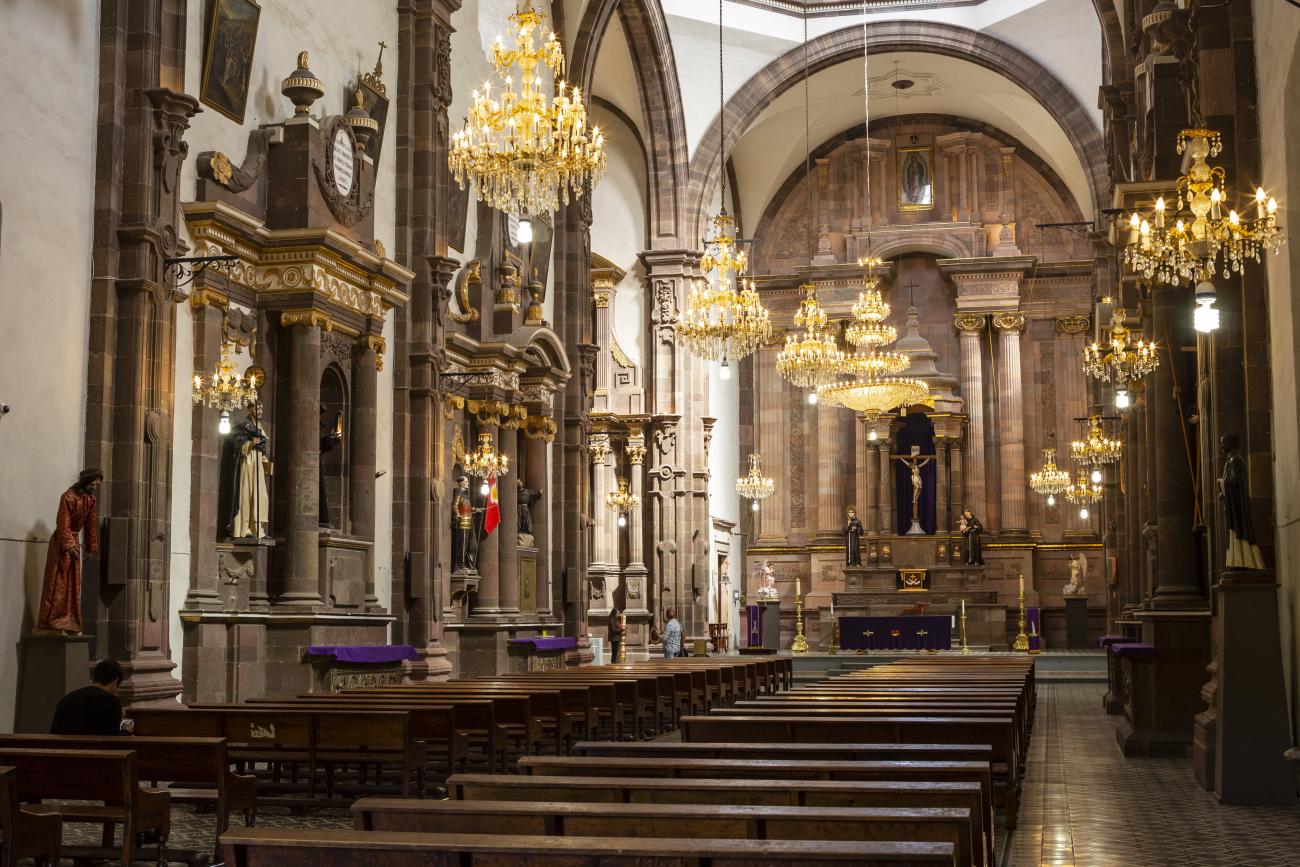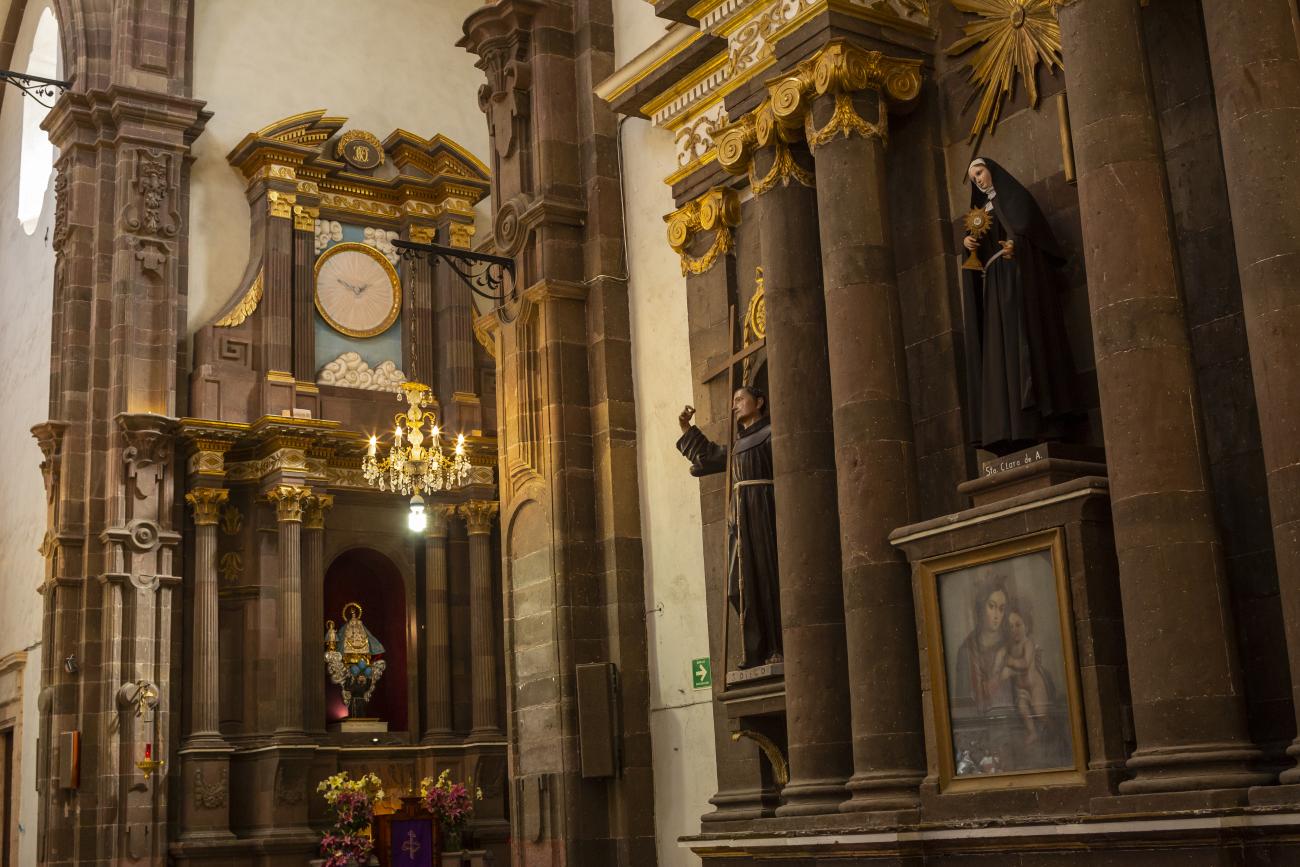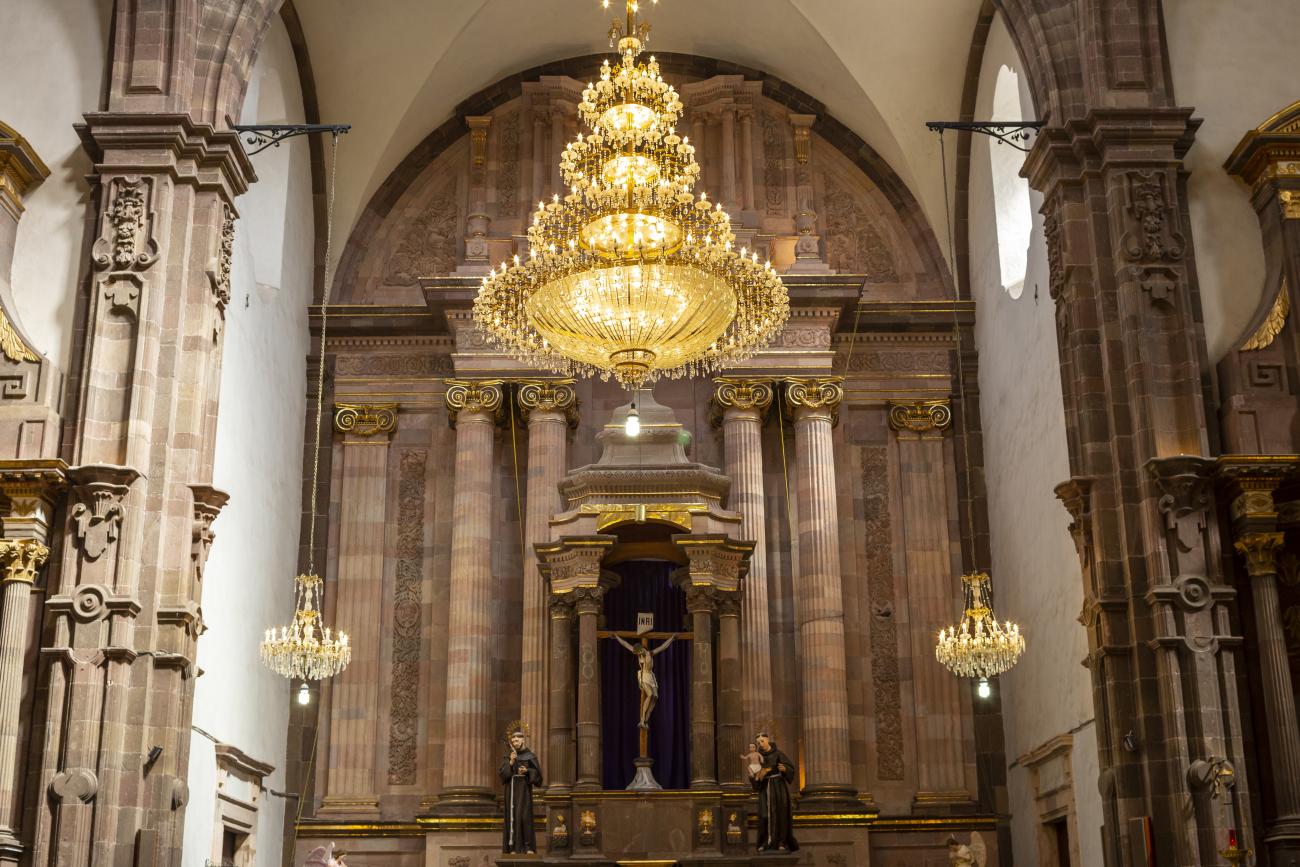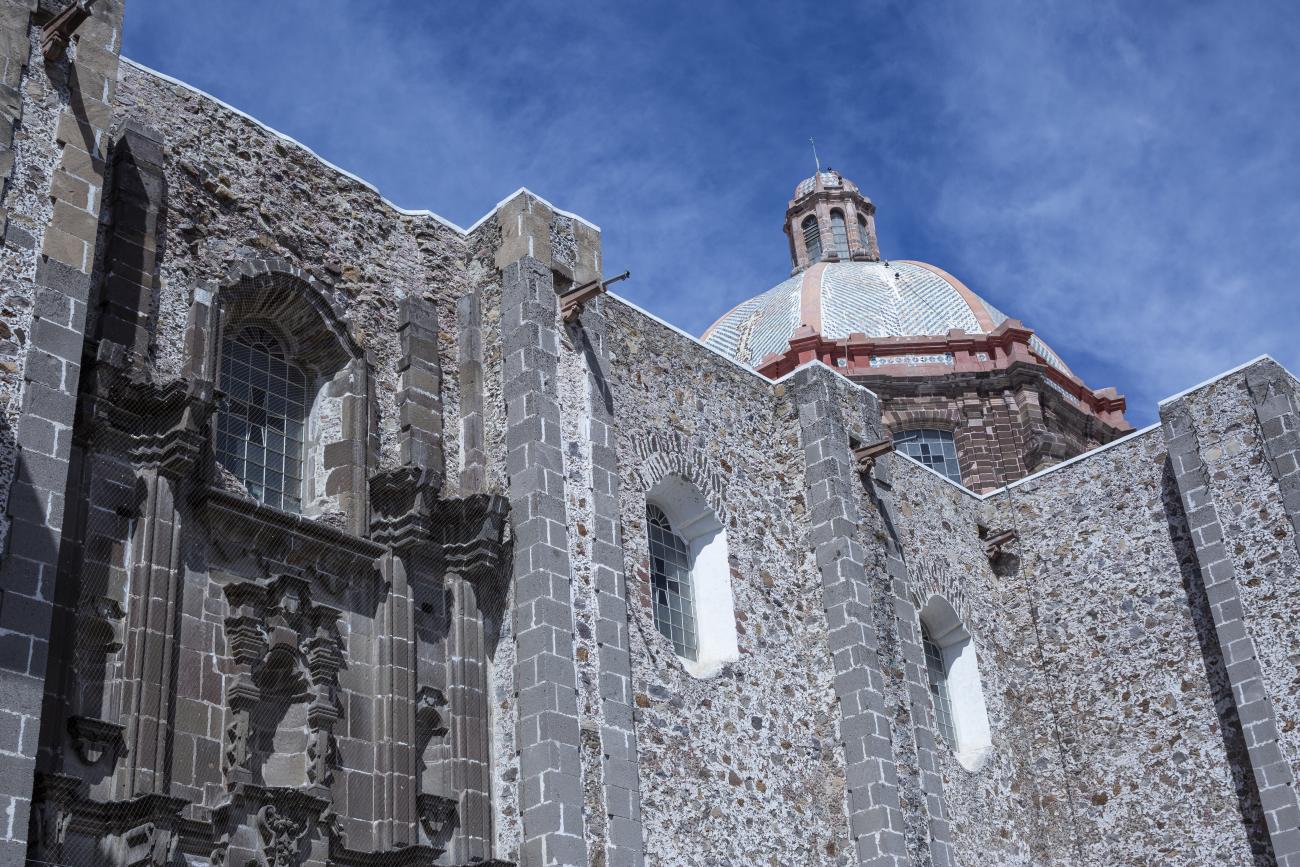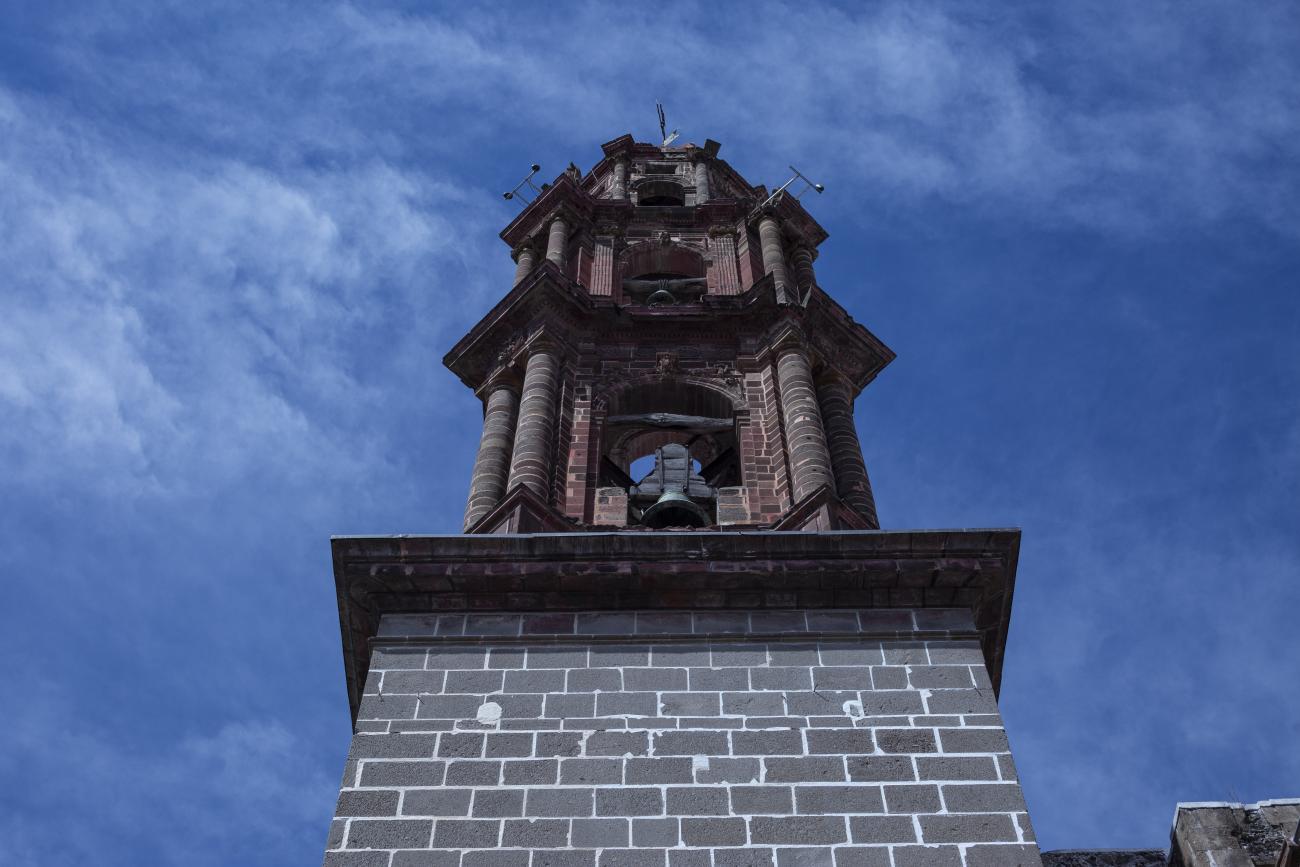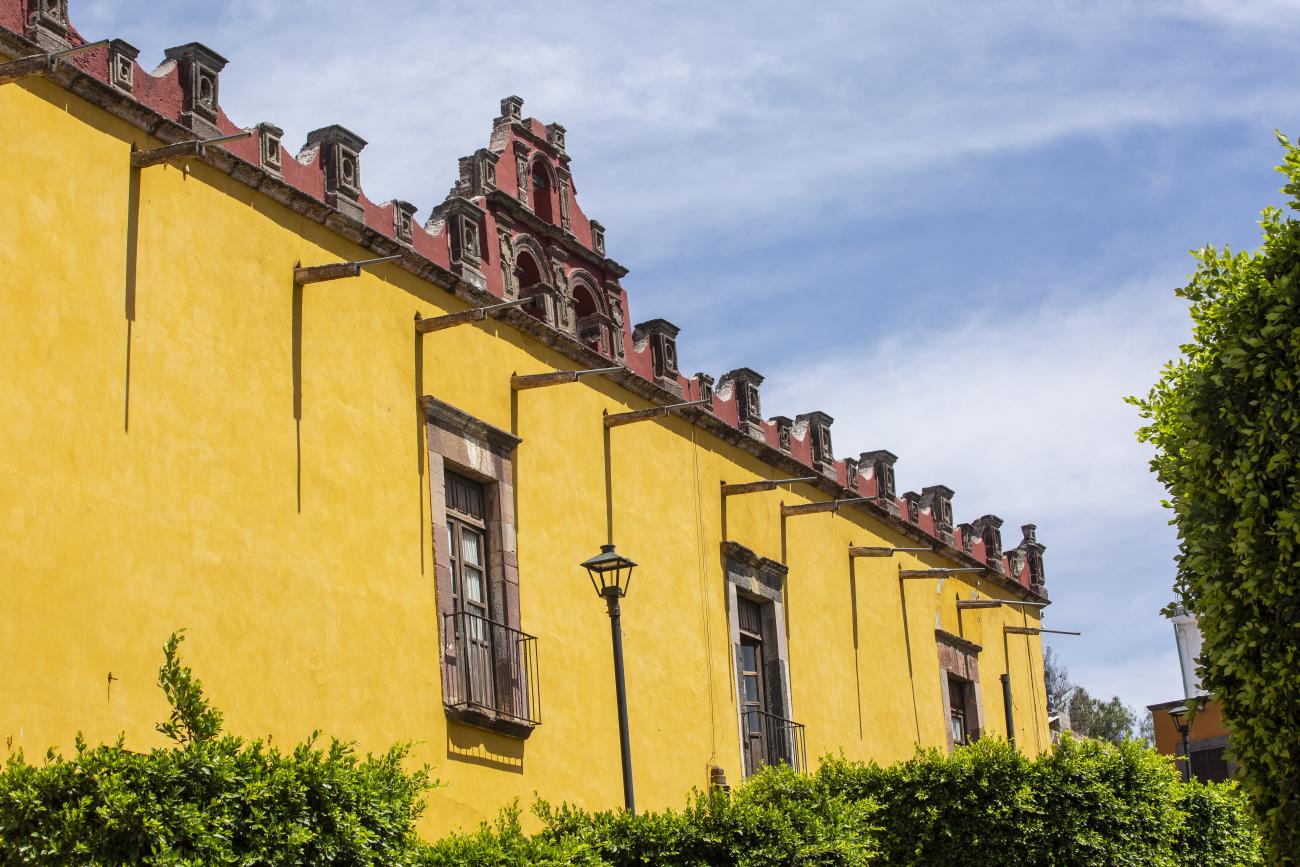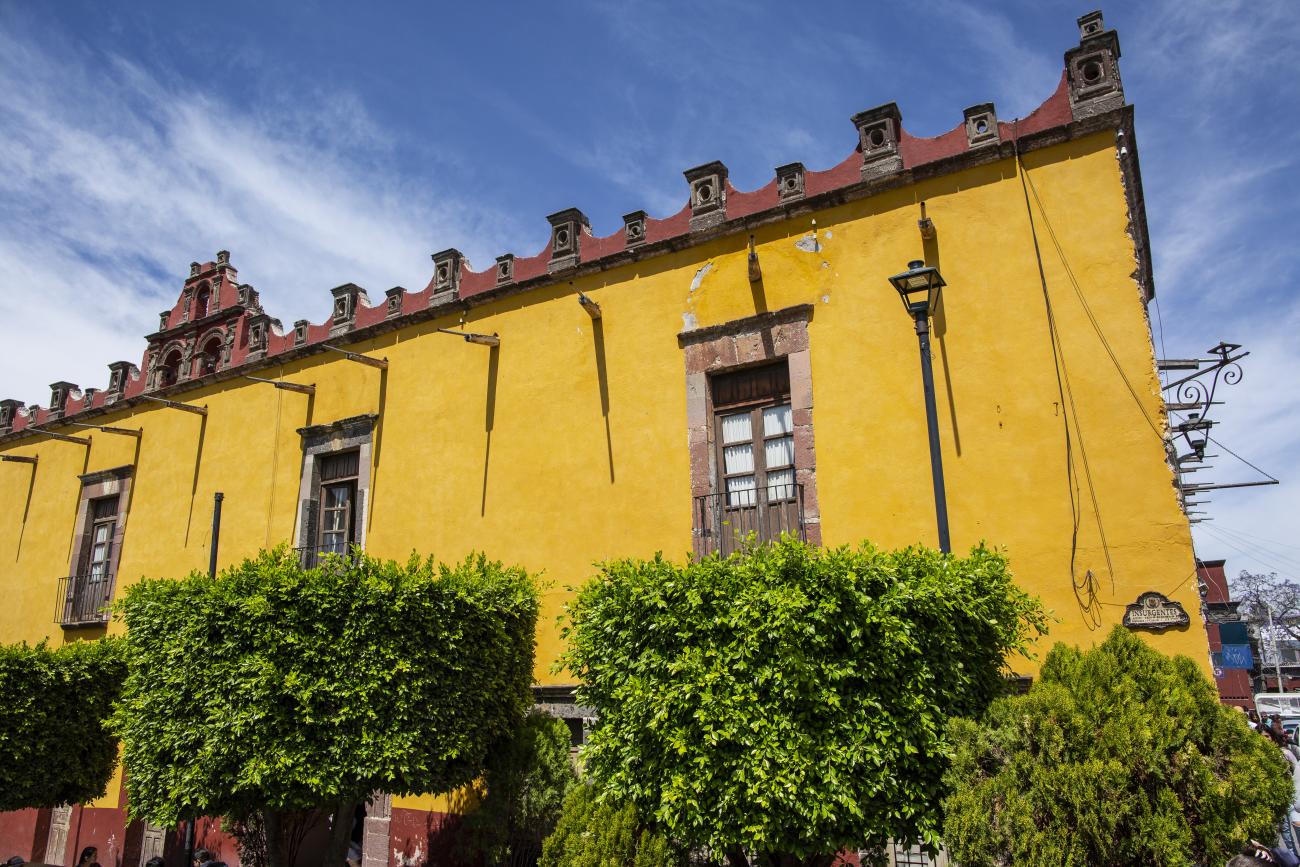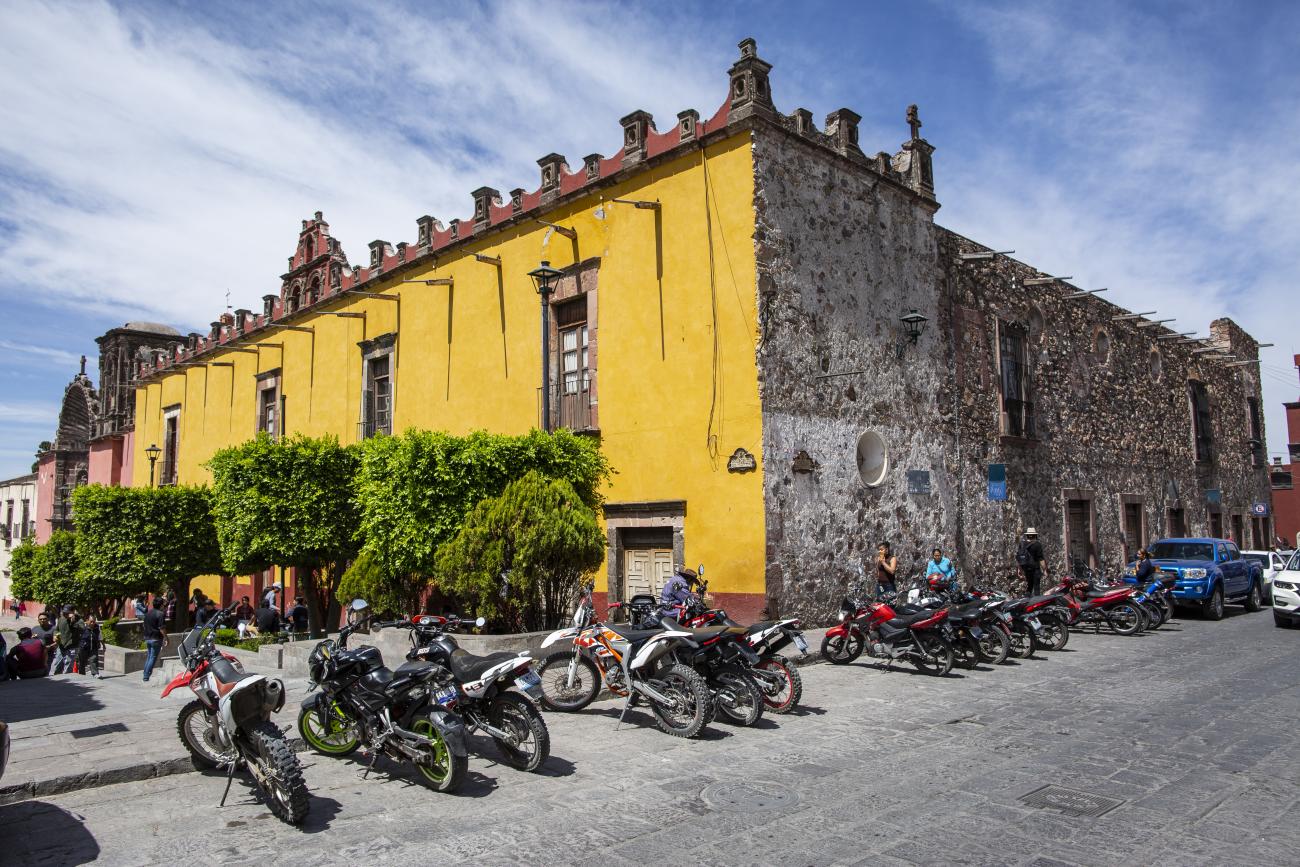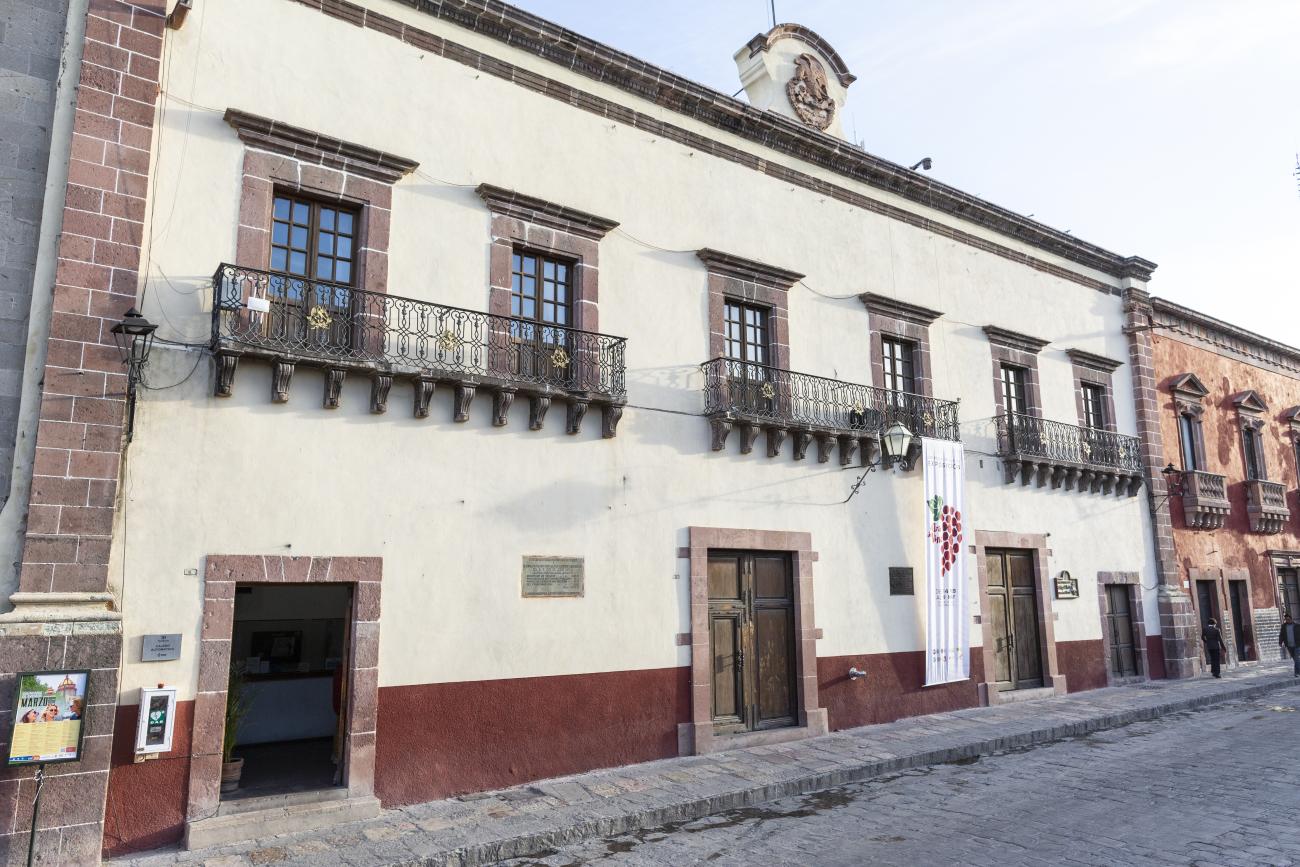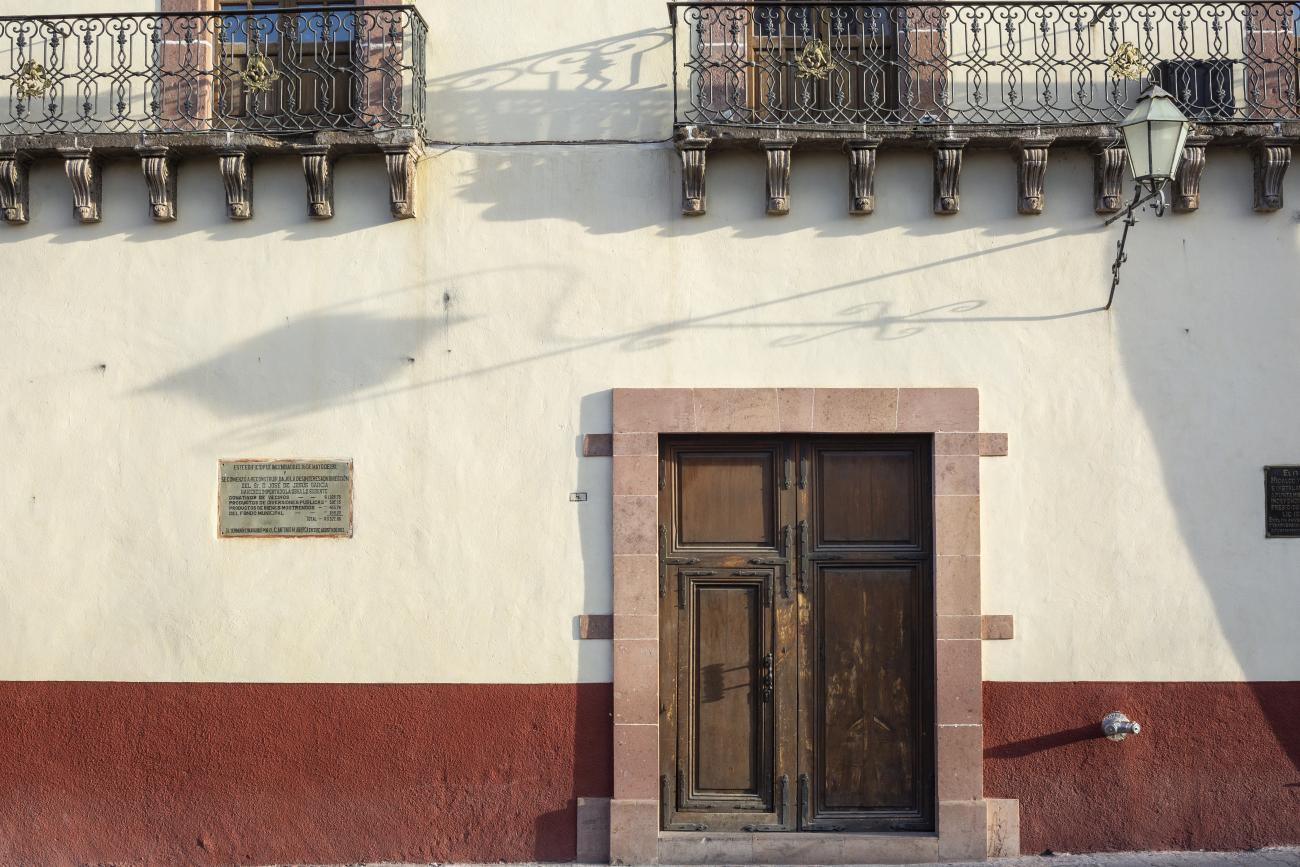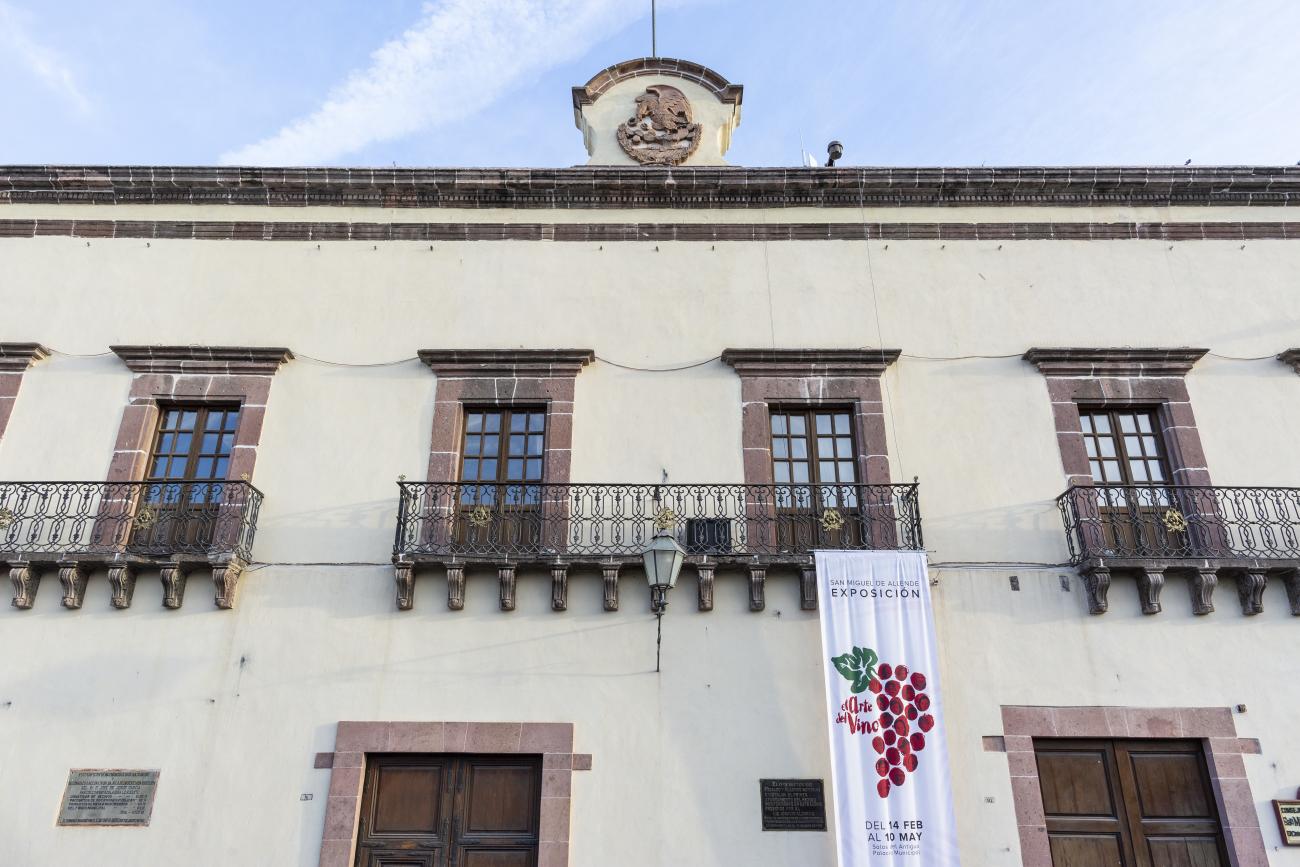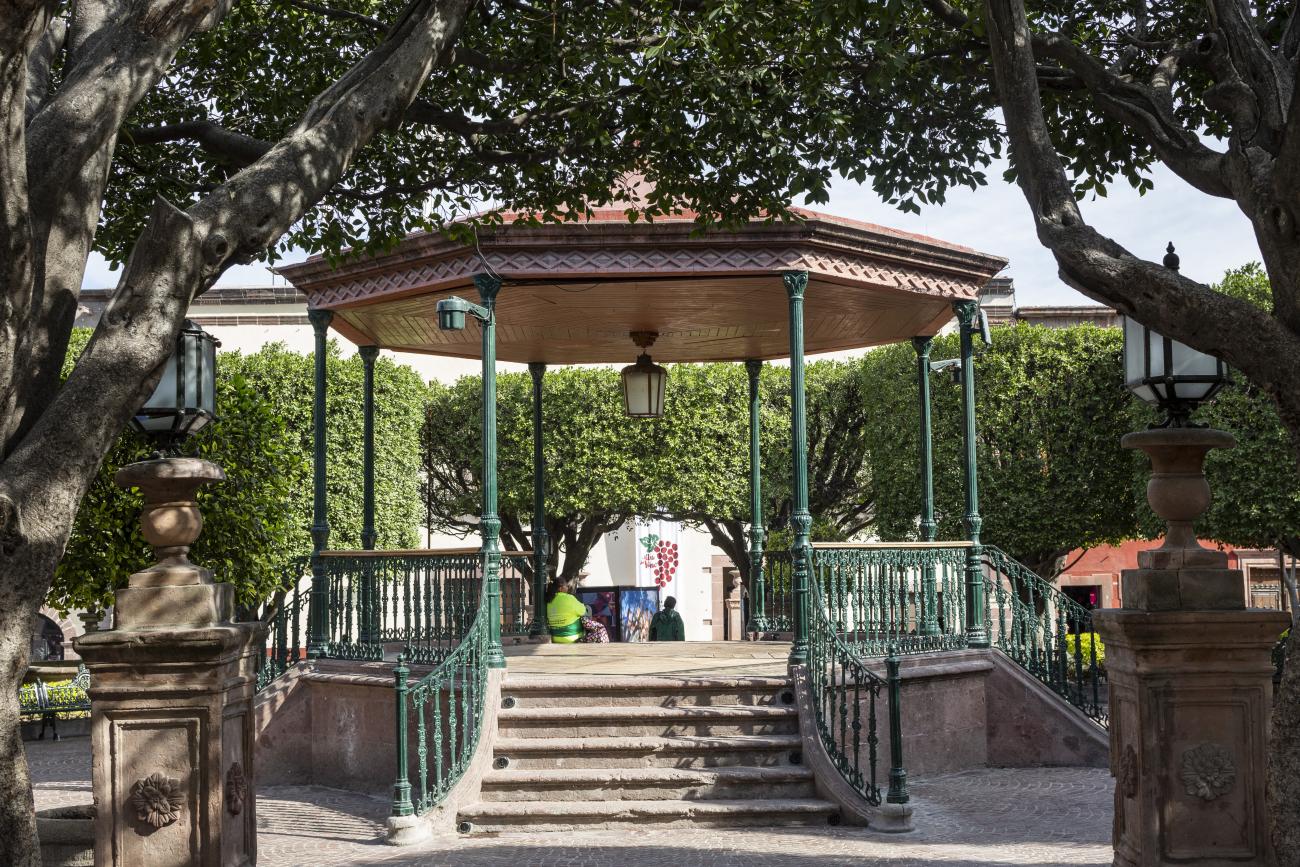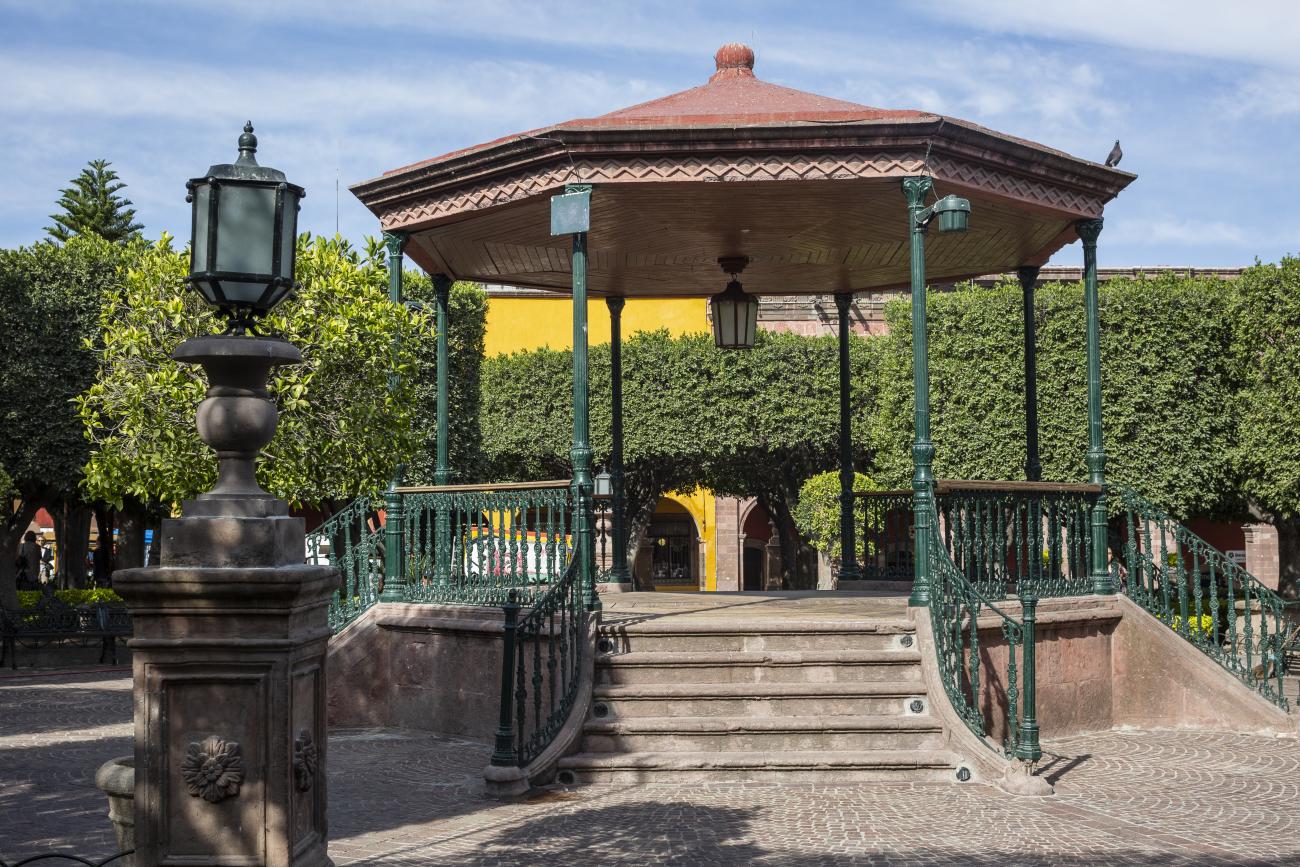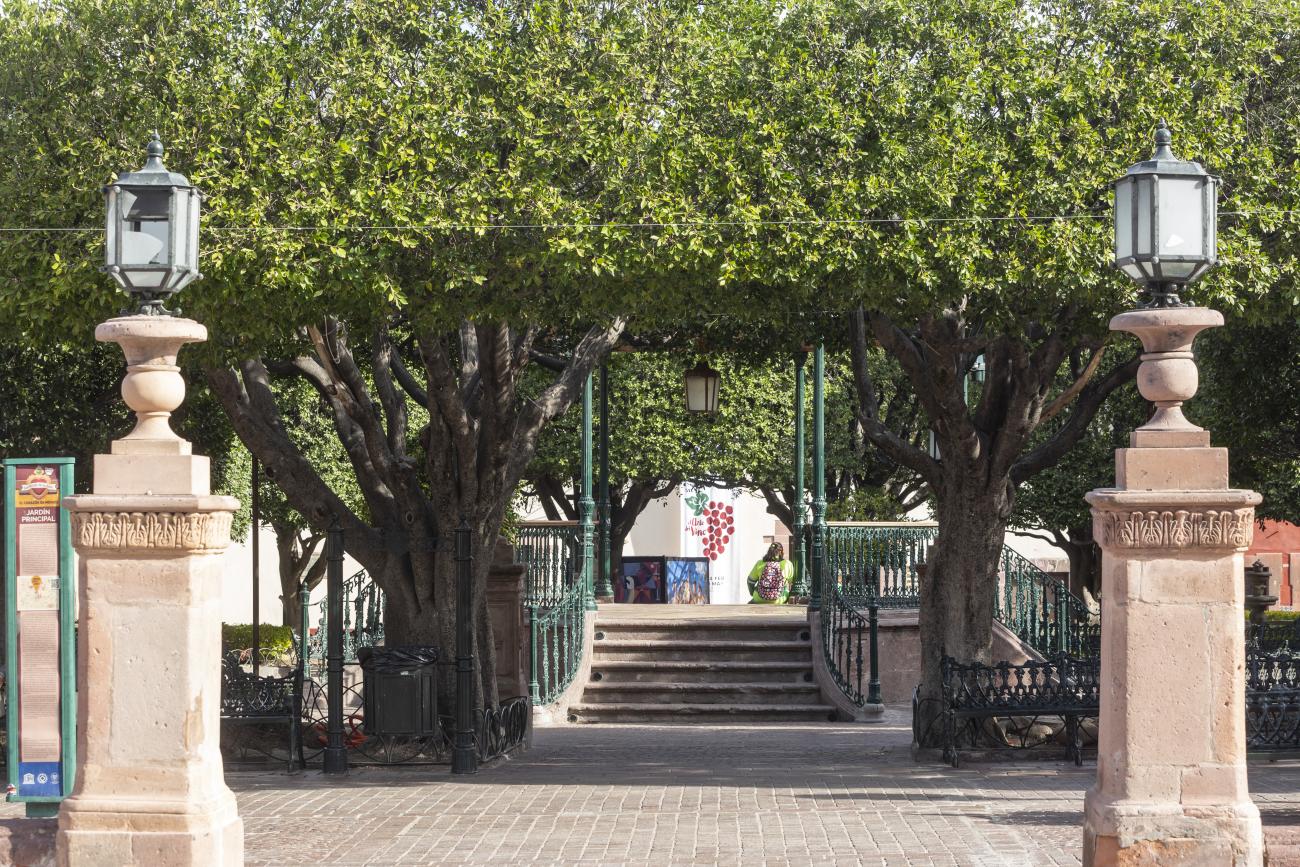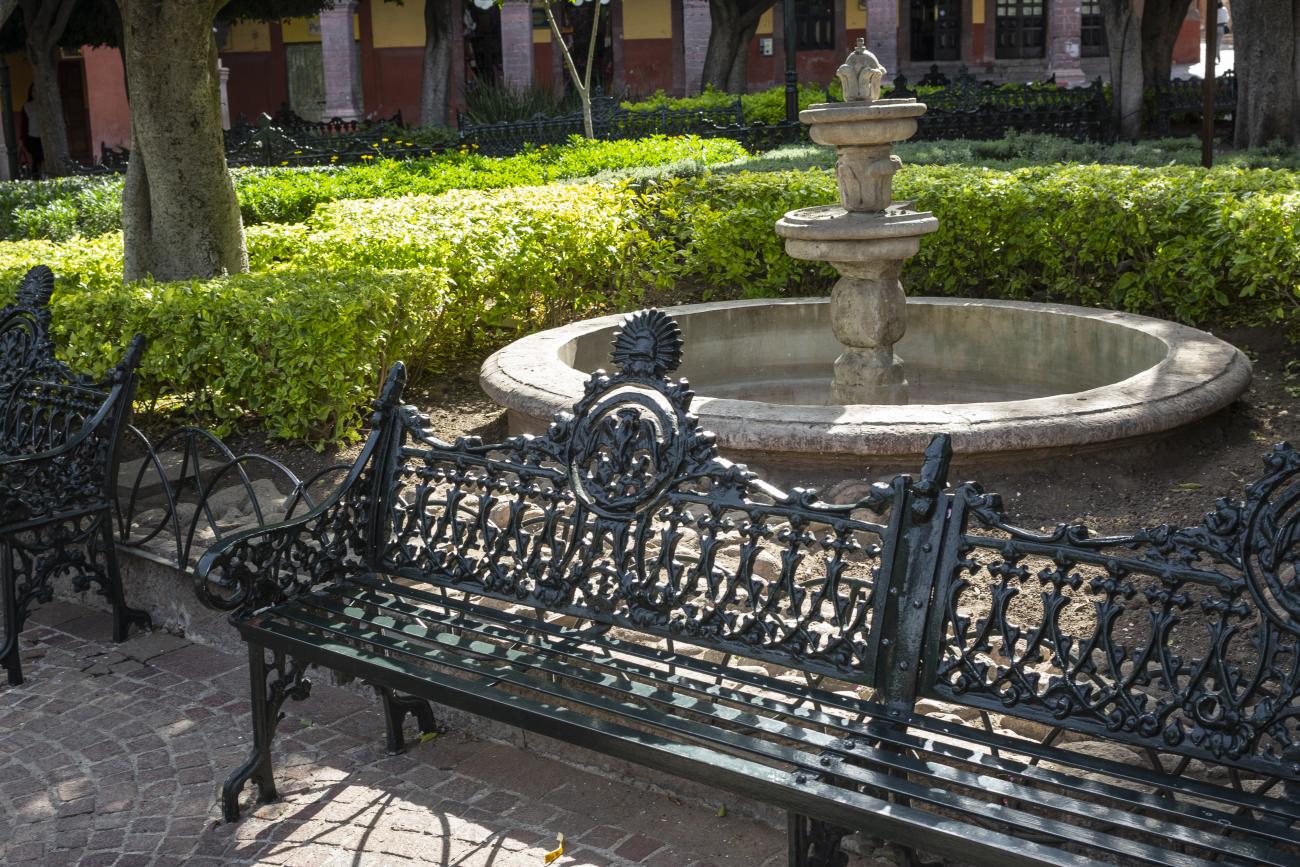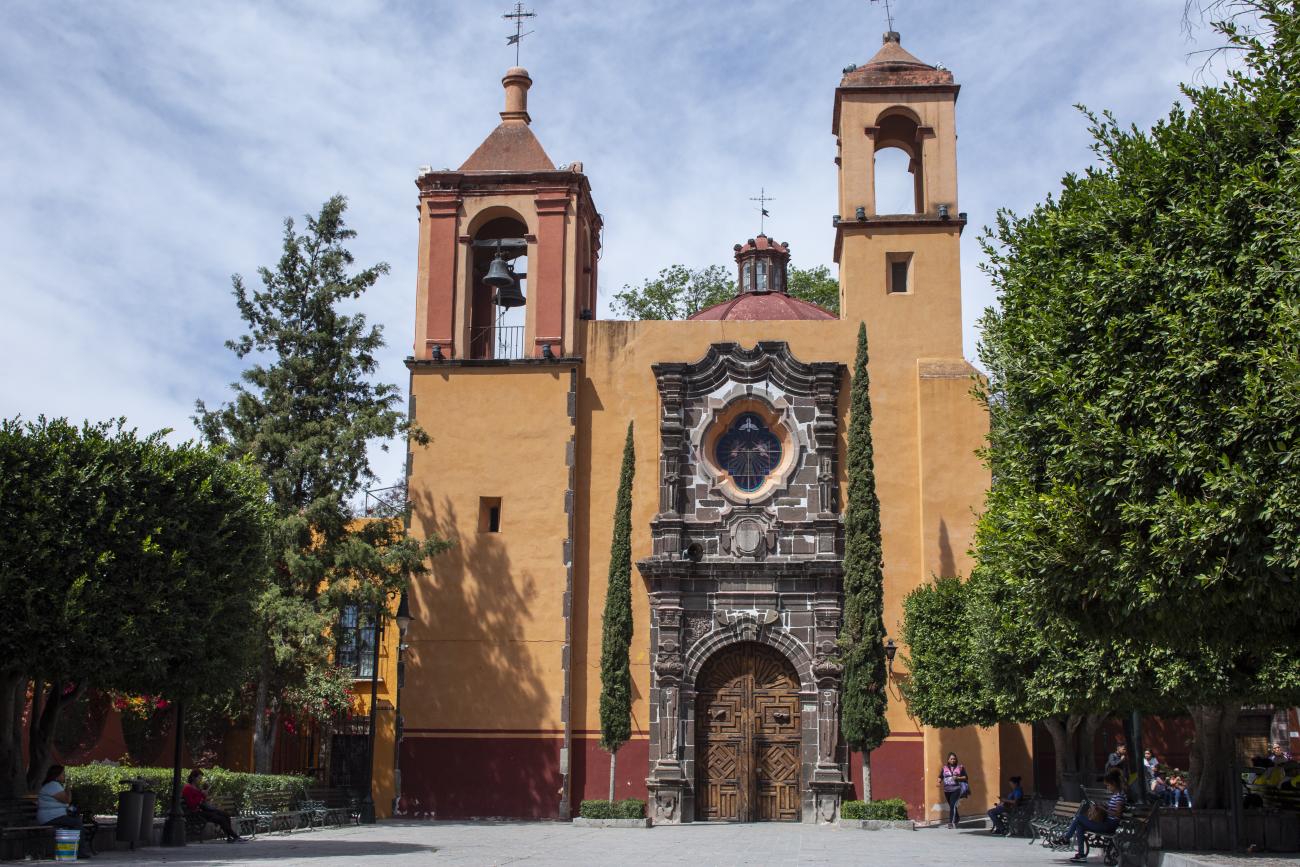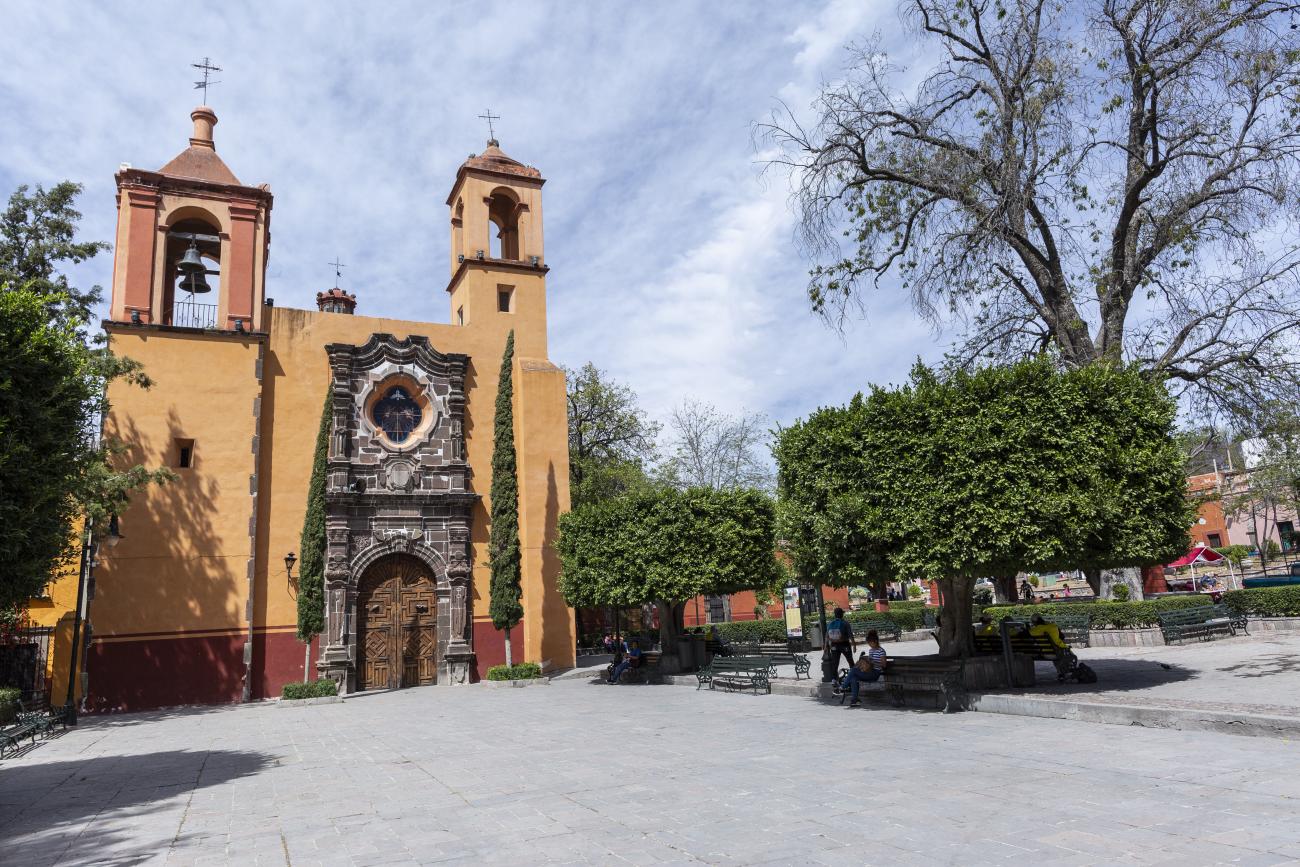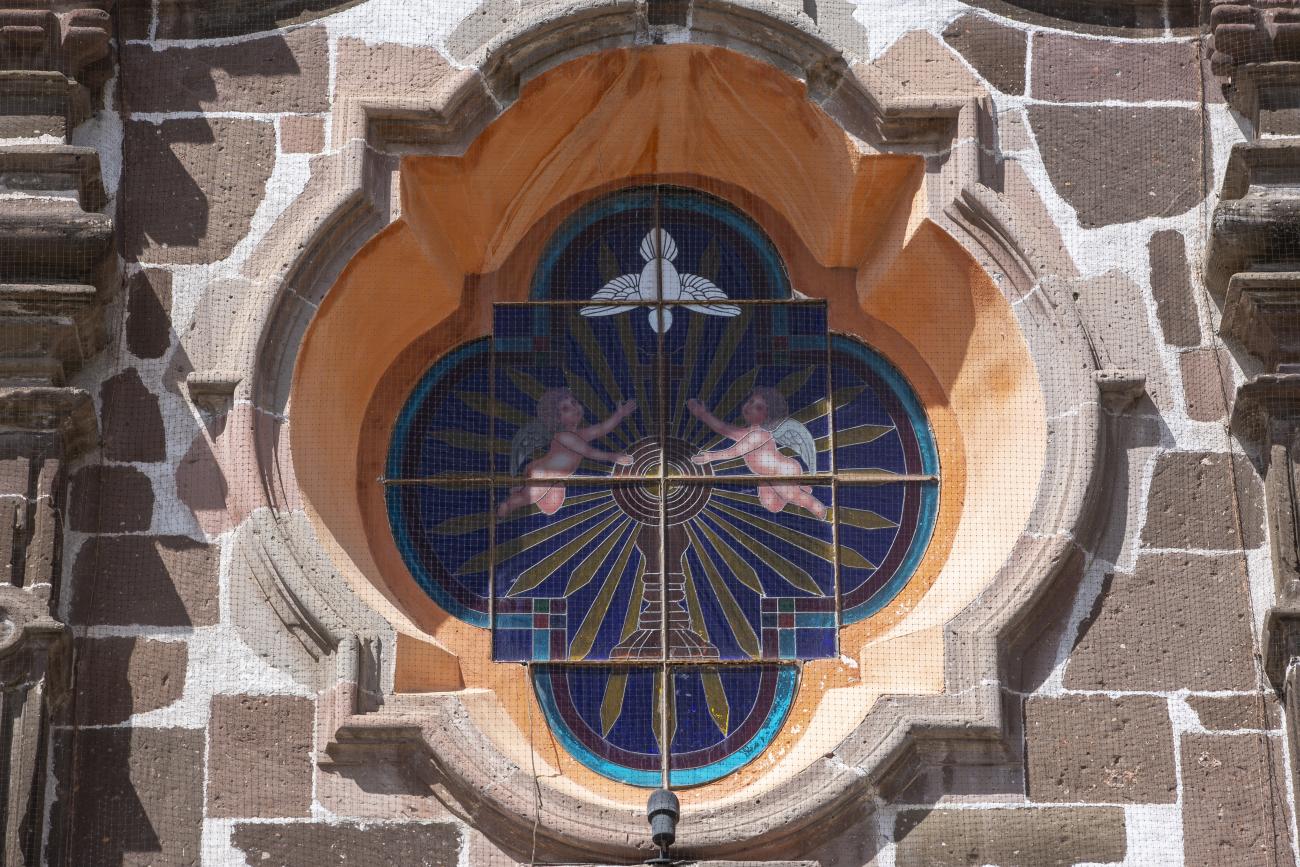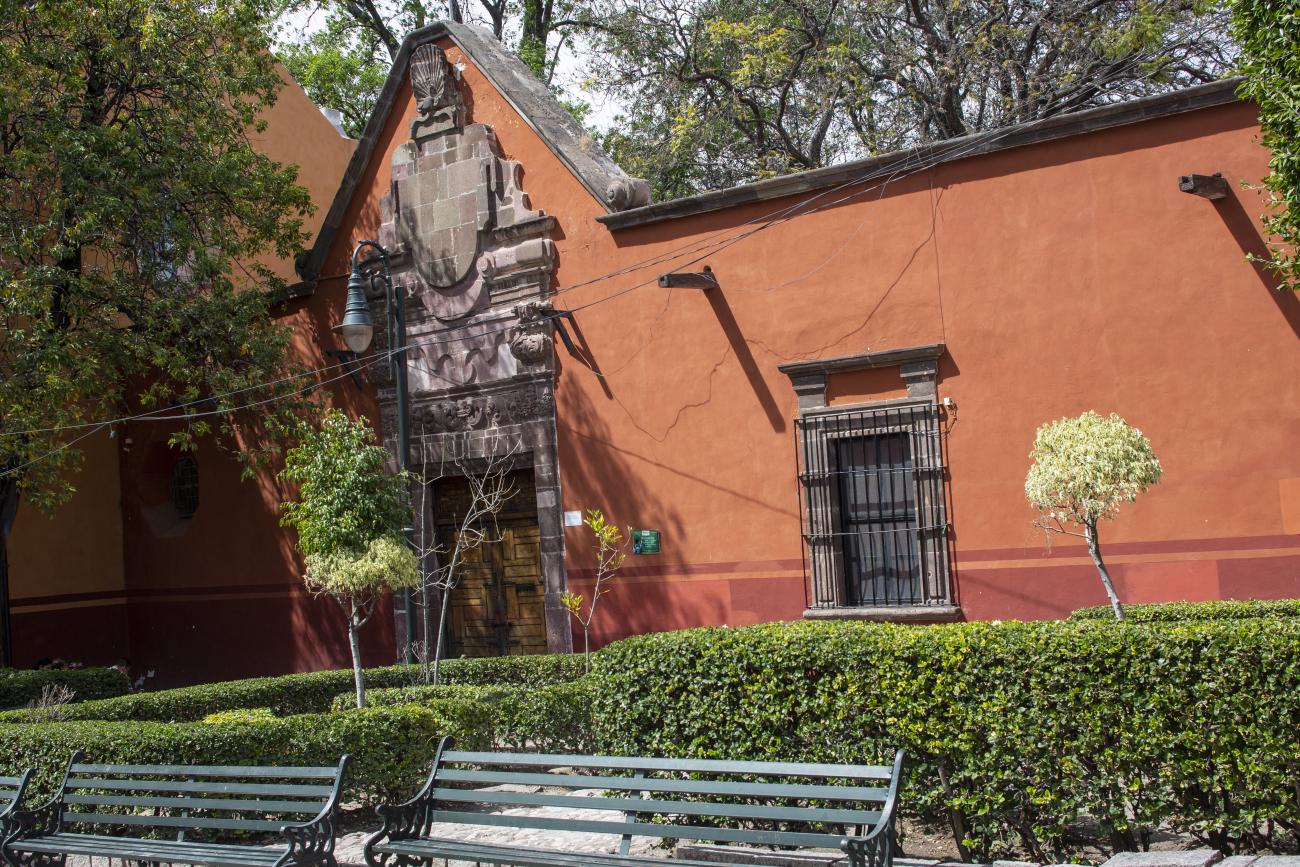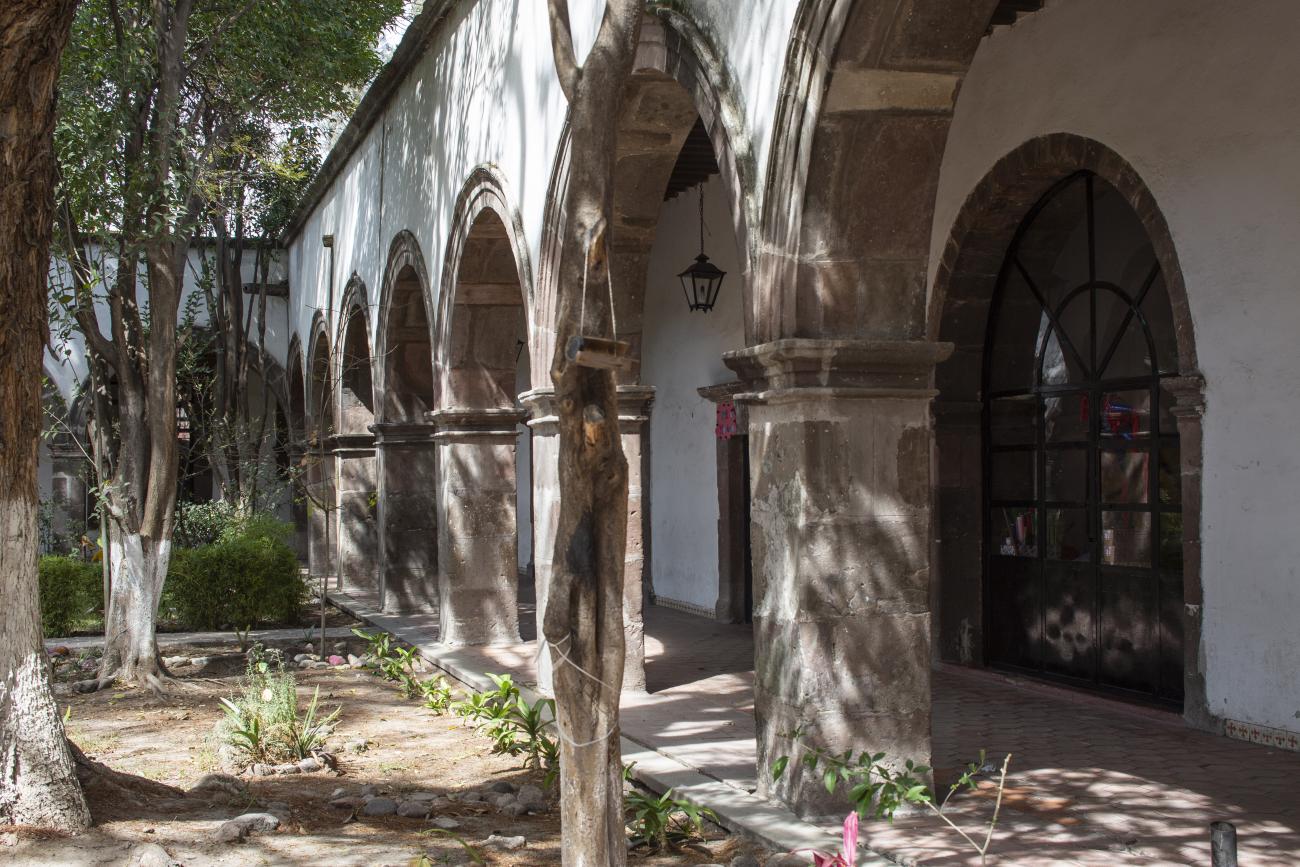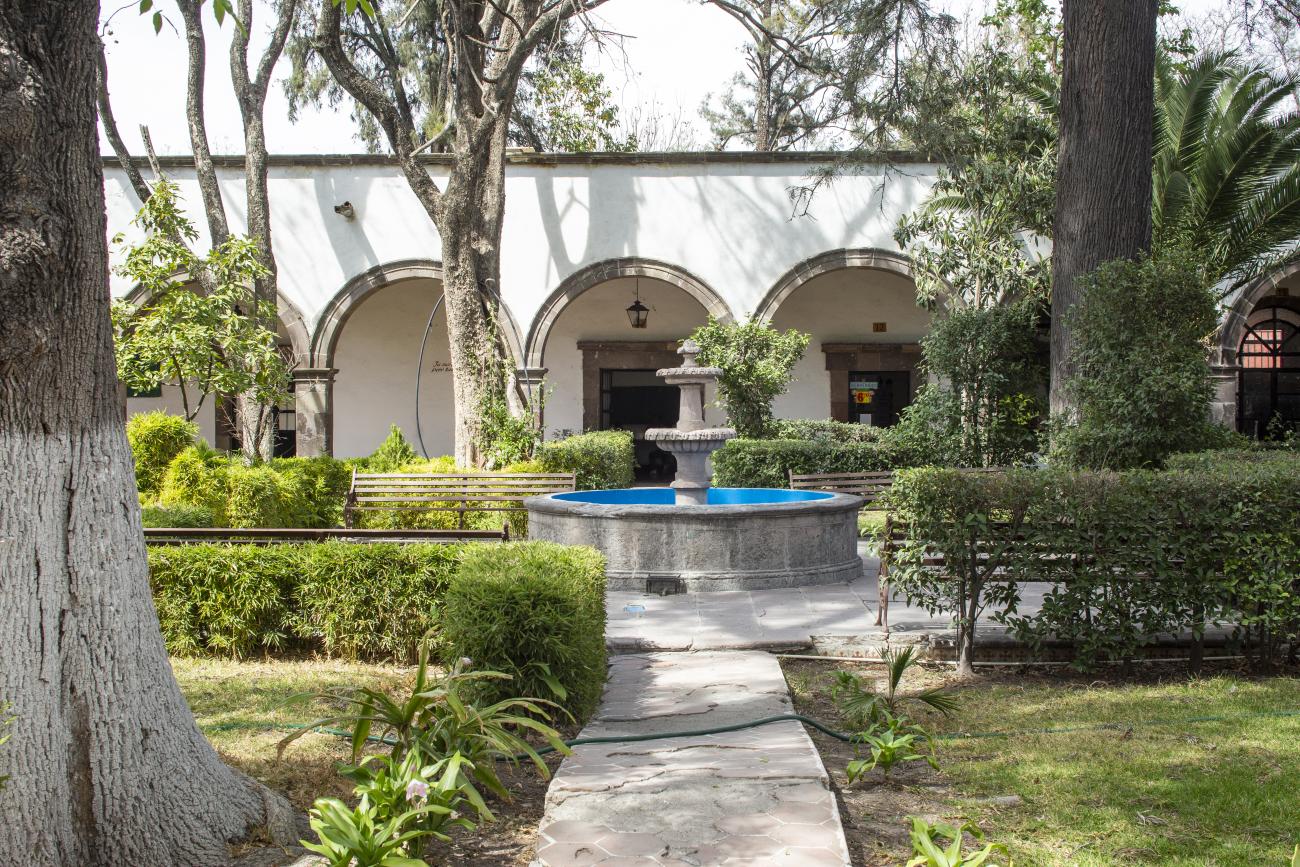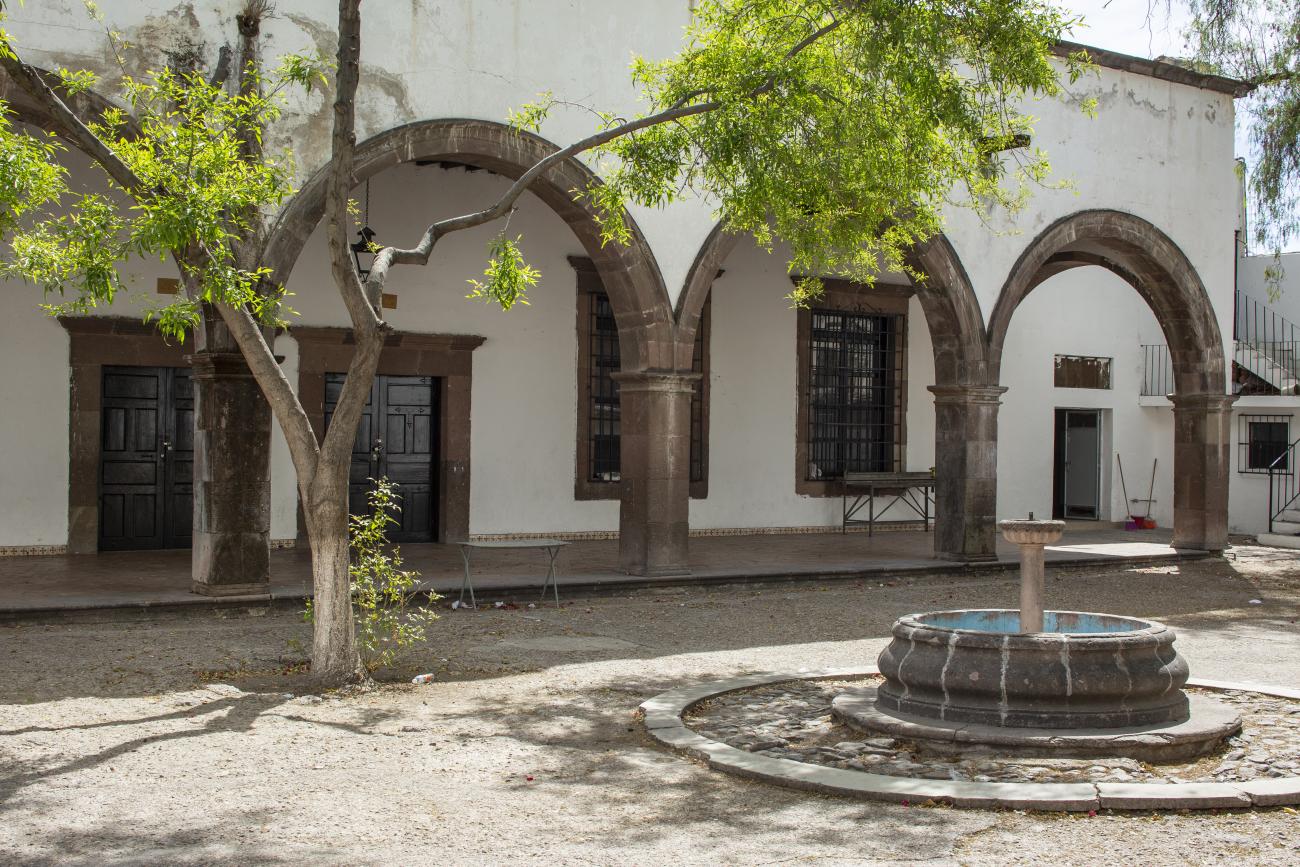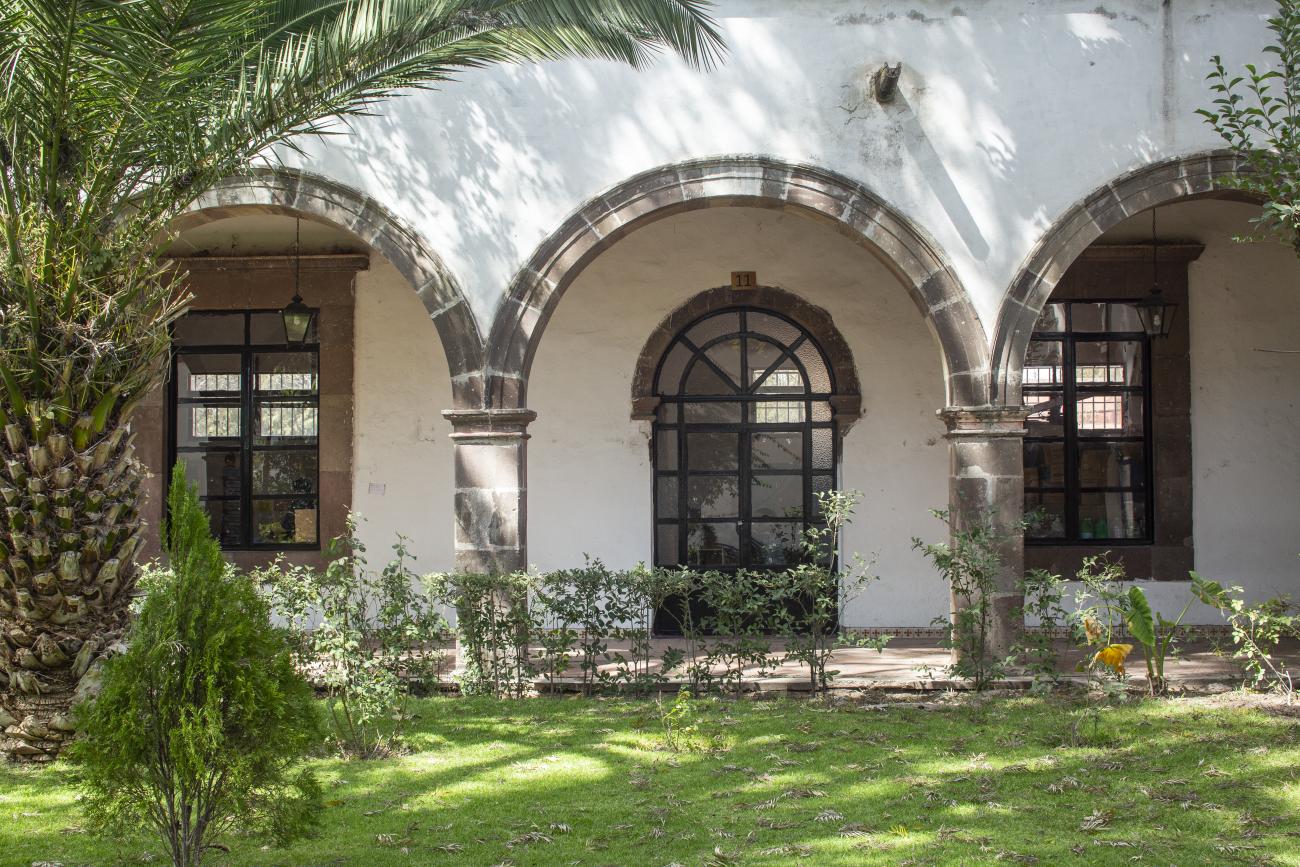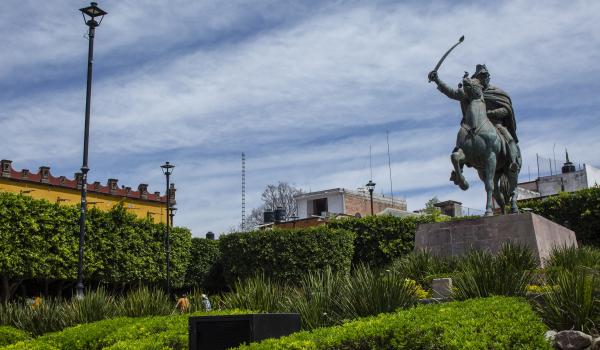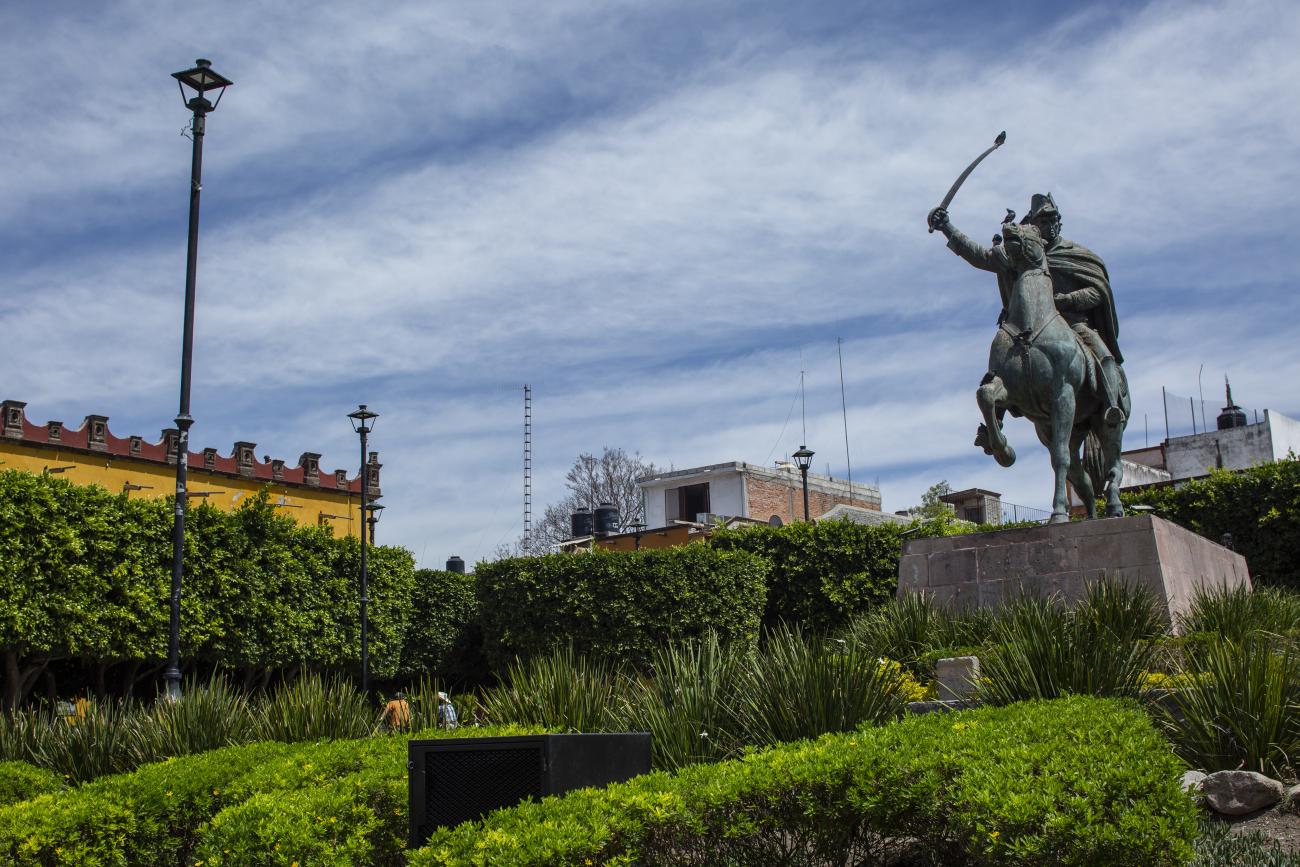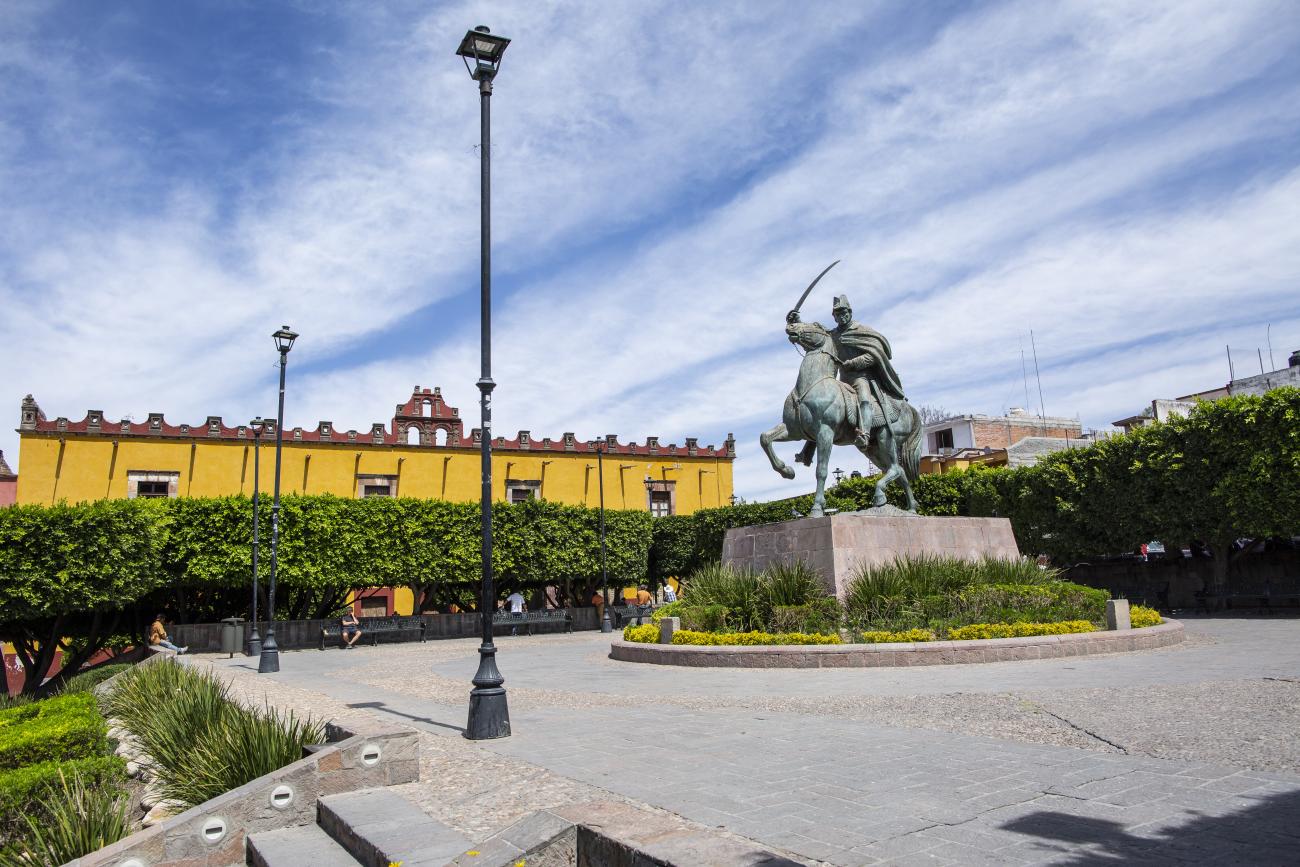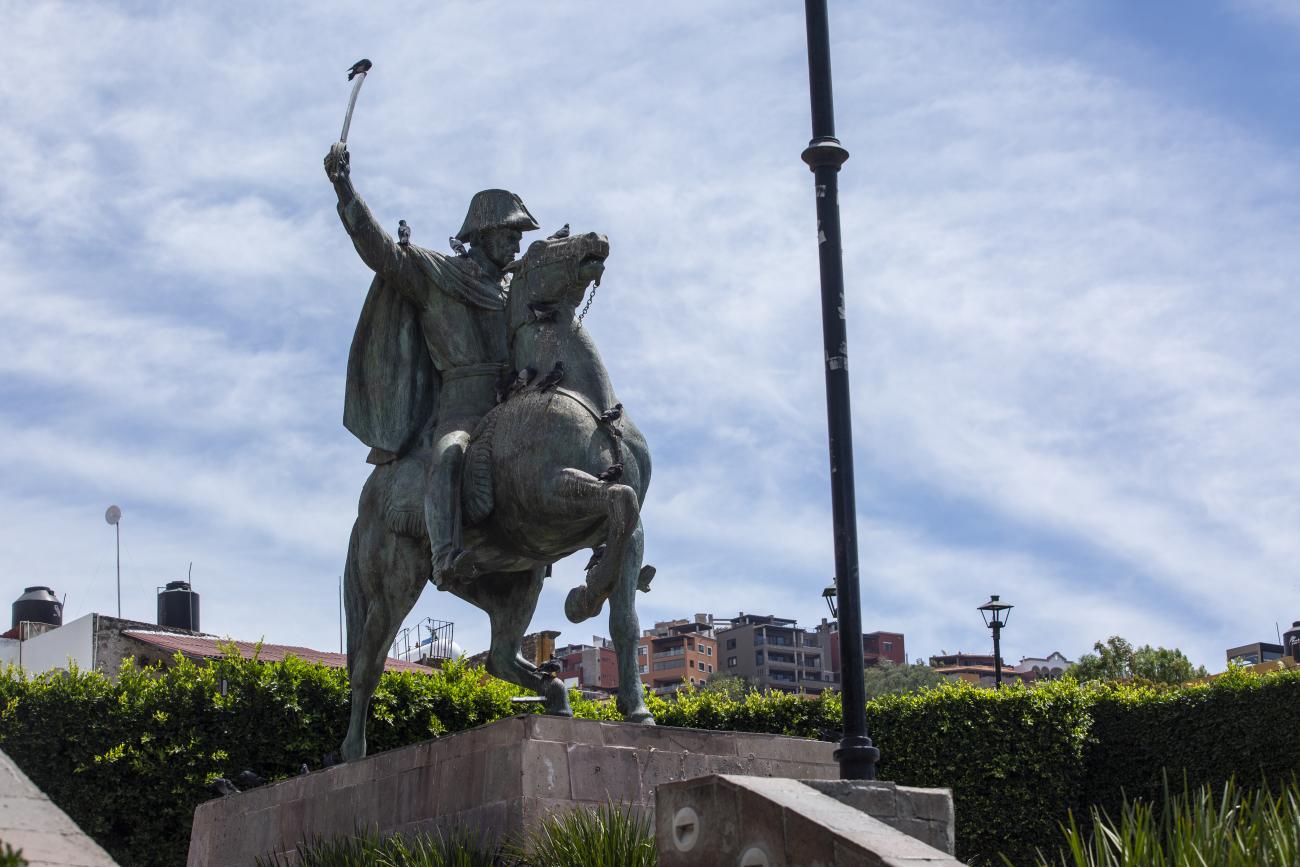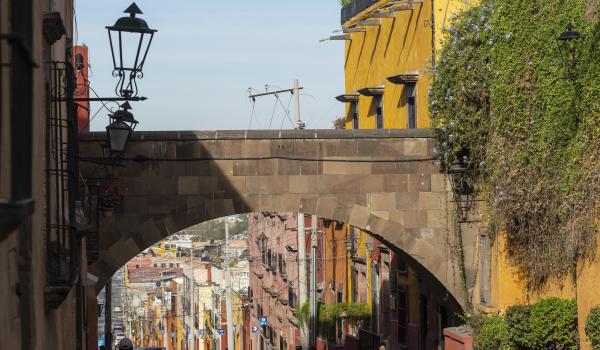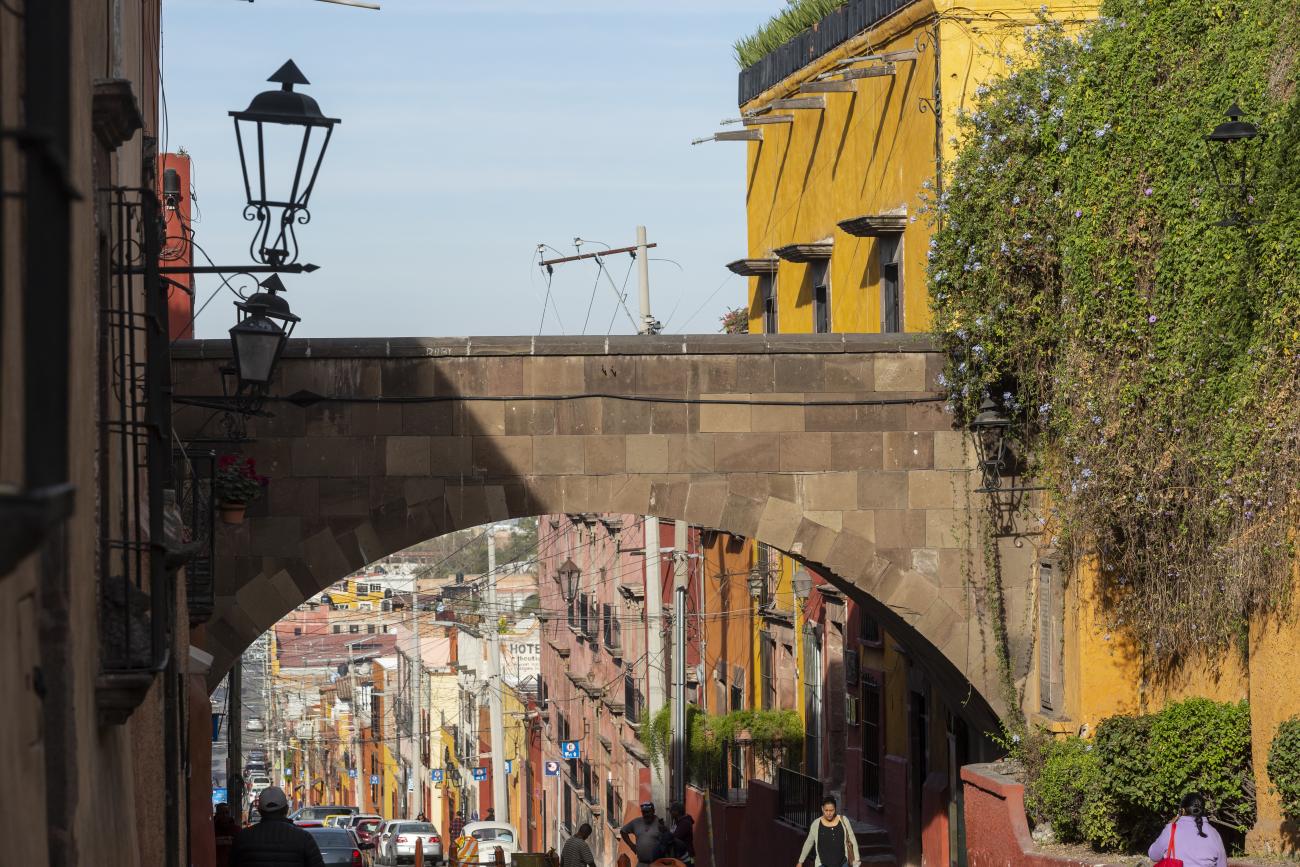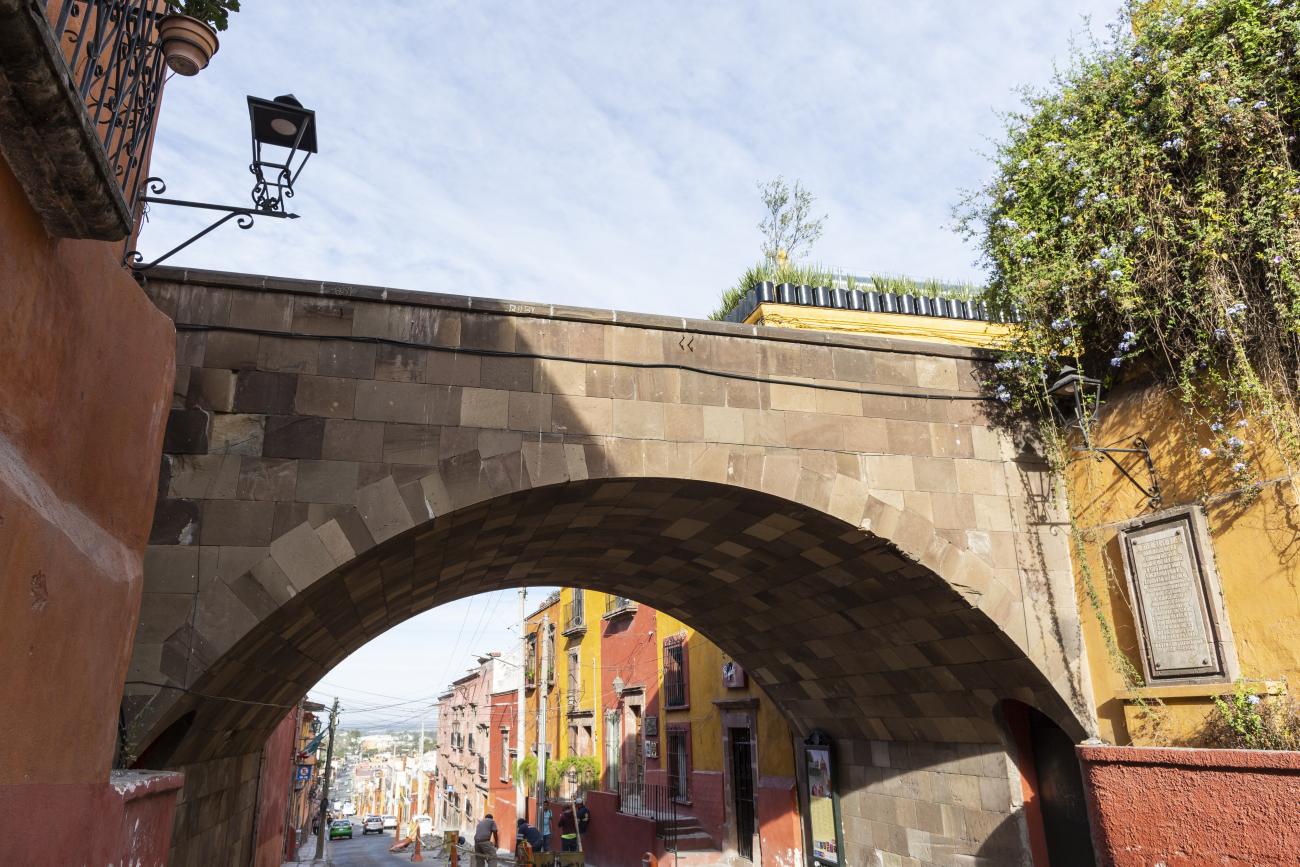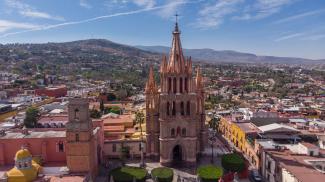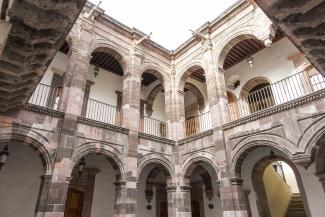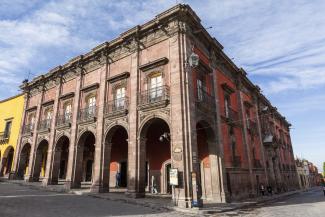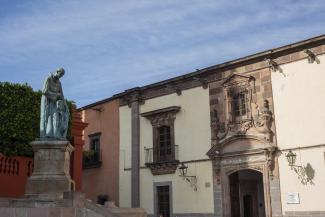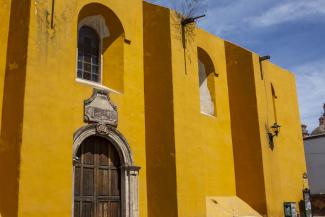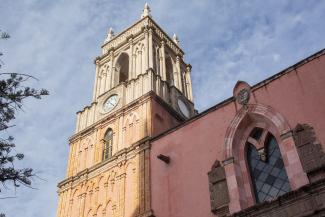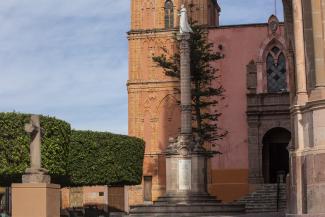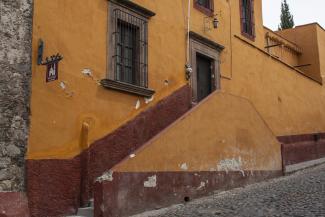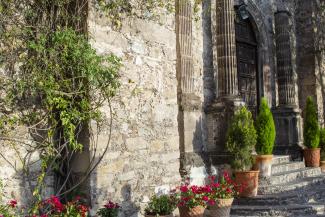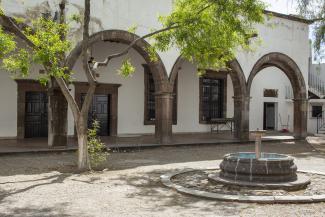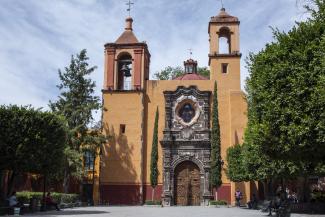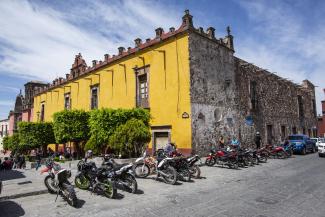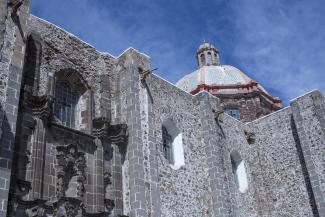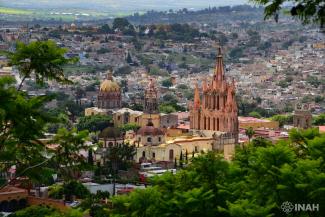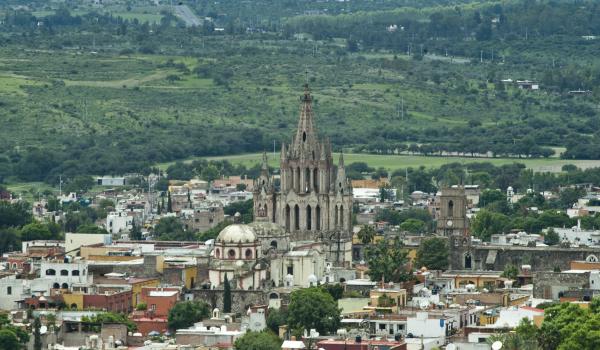San Miguel de Allende
Historical Monuments Zone
Abstract
Towns in the Bajío region located on the old silver road that played a significant role in the beginning of the struggle for the Independence of Mexico. The mural paintings of the Shrine of Atotonilco, the neo-Gothic Cathedral of San Miguel de Allende and the Baroque architecture of both sites constitute their distinctive hallmark.
Located in the Bajío region, San Miguel de Allende was founded in order to protect the Camino Real Tierra Adentro (Royal Inland Road), which was part of the “silver route” that linked Mexico City with the major mining centers such as Zacatecas.
San Miguel de Allende owes its name firstly to its founder, the friar Fray Juan de San Miguel, who baptized the town as San Miguel el Grande. Later, the surname of Ignacio Allende, a central figure at the beginning of the War of Independence, was added in honor of this being his birthplace.
The Baroque style predominates in its houses and churches, and the town’s architecture reached a very refined level during the colonial period due to the economic prosperity of its inhabitants. The Church of San Francisco and the Chapel of Our Lady of Health are examples of this Baroque architecture. Meanwhile, in the Casa de la Canal we find architectural elements that display a transition between the Baroque and the Neoclassical. The most prominent building of all, however, is the Parroquia de San Miguel Arcángel, located on the main square. Its neo-Gothic façade, built in pink cantera stone, its tall spires and its pointed arches make it an exceptional building that has become a symbol of the city.
The town of San Miguel el Grande was founded after the discovery of the Zacatecas mines in 1548. From that year on, the Spanish colonizers began to establish a series of towns such as Querétaro, Celaya and León with the purpose of providing security for the transportation of silver and supplying resources and labor to the mines. These and other cities are part of a complex system of urban centers in the Bajío.
Most of the population of San Miguel el Grande was of European origin, both Spaniards and criollos, as well as mestizos, with a smaller presence of indigenous people. The main economic activities of its inhabitants were the manufacture of artisan textiles and trade with the northern and central regions of the viceroyalty.
In the second half of the 18th century, the Bajío region saw rapid economic growth, even displacing the center of Mexico as the economic axis of New Spain. At the beginning of the 19th century, it was one of the wealthiest regions: criollos and mestizos owned lands where they grew corn, wheat and barley, which supplied a large part of the viceroyalty. This gave way to the formation of powerful groups of criollos who, in addition, were highly educated, since they had been instructed in Franciscan, Jesuit and Oratorian schools. One of the most important of these schools was San Francisco de Sales, located in San Miguel el Grande.
The existence of economically powerful criollo groups with modern ideas in the Bajío is what made this region a fertile ground for the outbreak of the insurrection that would lead to the independence of Mexico.
In San Miguel el Grande, two central actors in the first stage of the independence struggle were born: Ignacio Allende, son of a wealthy merchant and an officer of the Queen’s Dragoons regiment; and Juan Aldama, also a military man and son of a small industry manager. Both figures, together with Miguel Hidalgo y Costilla, Josefa Ortiz de Domínguez and Miguel Domínguez, among others, were part of the “conspiracy of Querétaro” that sought to establish a Junta that would govern the viceroyalty while the Spanish throne was usurped by the French.
When the plan was discovered, Miguel Hidalgo summoned the town of Dolores to rise up in arms and advanced towards San Miguel el Grande to meet with Allende. On his way he passed through Atotonilco where, according to tradition, he took as a banner an image of the Virgin of Guadalupe that he found in the Shrine of Jesús Nazareno. Once he arrived in San Miguel el Grande, Hidalgo met with Ignacio Allende and Juan Aldama, who provided troops to advance towards the city of Guanajuato.
After the independence of Mexico was declared, the first city hall of Independent Mexico was installed in San Miguel, and it was awarded the category of city in 1826.
Nowadays San Miguel de Allende has become one of the country’s most attractive tourist destinations due to the beauty of the city and its busy cultural calendar. It is home to cultural events such as the Baroque Music Festival, held in March; the Chamber Music Festival that takes place at the Angela Peralta Theater during the month of August; the International Jazz Festival, held in November; and the Film Festival. More traditional festivities are the celebration of Holy Week, the Parade of the Fools held in June, the Mojigangas Parade, the Historical Horse Ride to Dolores Hidalgo and the patron saint’s day festival of San Miguel Arcángel in September.
The urban layout of San Miguel de Allende underwent significant transformations throughout the colonial era. The town was first founded at a site near the San Miguel river, but a few years later it was moved to its current location, considered more promising due to the existence of a spring called “El chorro”.
The current appearance of the city dates from the 18th century, since during the 16th and 17th centuries the center of the town was the Plaza de la Soledad, located adjacent to the current Plaza Cívica—where the equestrian statue of Ignacio Allende is located. It was in the 18th century that the civil buildings and the houses of wealthy families were moved to the current Plaza Principal, in front of San Miguel Cathedral.
The layout of its streets was arranged in the form of a grid and is closely related to the pipeline system that distributed drinking water in the viceregal era. According to the urban planning rules of the time, most of the two-story houses were located around the Plaza Principal, while the rest had to be single-story.
The Zone of Historical Monuments covers an area of 0.75 km2 and is made up of eight blocks that include a number of religious buildings such as the Church and the Former Convent of San Francisco, the churches of Santa Ana and Santo Domingo, San Rafael, San Juan de Dios, of the Third Order, of the Conception, Our Lady of Health, the Oratory of San Felipe Neri, the chapels of Calvario, Santa Casa de Loreto and the Shrine of Atotonilco. Among the civilian edifices, the Casa del Mayorazgo del Canal, the Angela Peralta Theater and the Municipal Palace stand out.
Fourteen kilometers from San Miguel de Allende is the Shrine of Jesús Nazareno de Atotonilco, also declared a Zone of Historical Monuments. Its construction was championed by Father Luis Felipe Neri de Alfaro and began in 1740, being completed and dedicated in 1748. It is a monumental complex comprising the Church of Jesus Nazareno, the Nazarene Niche and the former Sacristy, the chapels of Bethlehem and of the Holy Sepulcher; the chapel of the Santa Casa de Loreto and its niche; the chapel of Our Lady of the Rosary and its niche; the Calvary Chapel and the House of Exercises.
The interior of the complex is decorated by impressive wall paintings by the artist Antonio Martínez de Pocasangre. These images were intended to serve as an object of meditation for people who came to hold retreats and spiritual exercises in the complex. Likewise, the texts that accompany each painting served as a reference to explain the dogmas and biblical passages to the clergy who led the exercises.
San Miguel de Allende and the Shrine of Jesús Nazareno de Atotonilco were declared a Zone of Historical Monuments on July 28, 1982 and were inscribed by UNESCO on the World Heritage List on July 8, 2008 due to their cultural and architectural importance as well as for the town’s role in the struggle for the independence of Mexico.
-
Monumentos Históricos
-
Bienes inmuebles con valor cultural
-
Conjuntos arquitectónicos
-
Sitios de interés
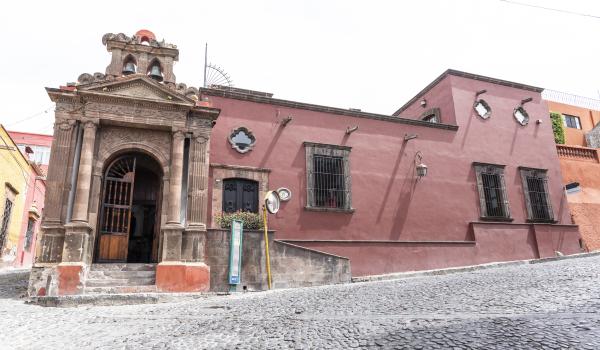
Capilla del Calvario
An 18th-century chapel featuring iconographic elements related to the Passion of Christ.
Capilla del Calvario
An 18th-century chapel featuring iconographic elements related to the Passion of Christ.
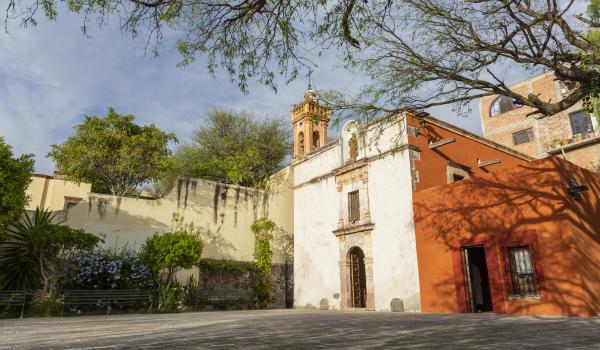
Capilla de Nuestra Señora de los Dolores
This chapel was built in the 18th century and features a facade and tower made of cantera stone.
Capilla de Nuestra Señora de los Dolores
This chapel was built in the 18th century and features a facade and tower made of cantera stone.
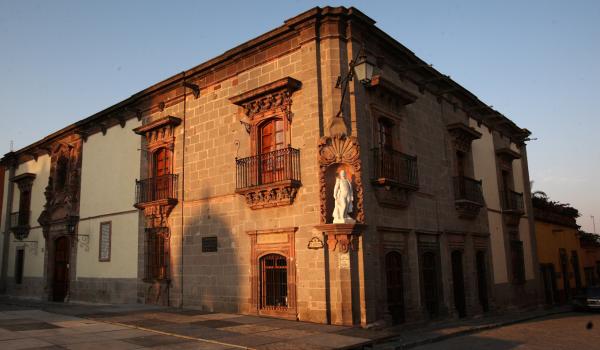
Museo Histórico de San Miguel de Allende
Domingo Narciso de Allende, father of Ignacio Allende, commissioned the construction of this house around 1769 as a wedding gift for his wife, María Ana Unzaga. It was likely completed in 1785.
Museo Histórico de San Miguel de Allende
Domingo Narciso de Allende, father of Ignacio Allende, commissioned the construction of this house around 1769 as a wedding gift for his wife, María Ana Unzaga. It was likely completed in 1785.
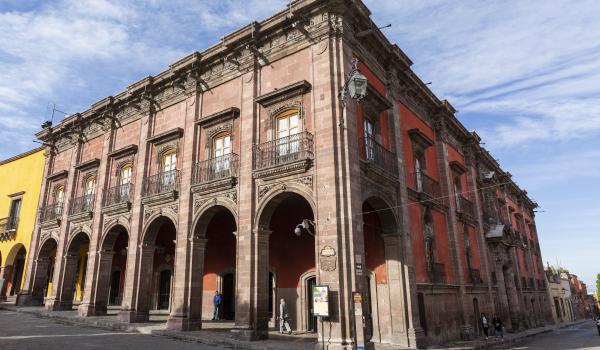
Casa del Mayorazgo De la Canal
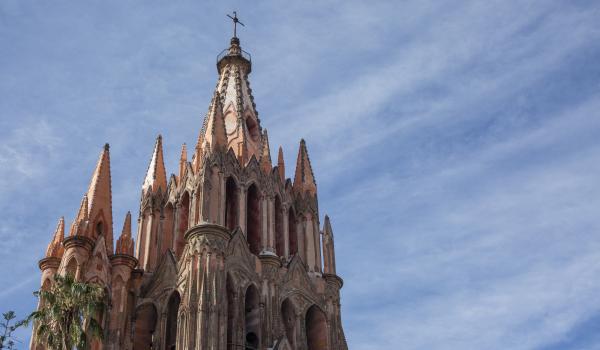
Parroquia de San Miguel Arcángel
Parish church from the 17th century
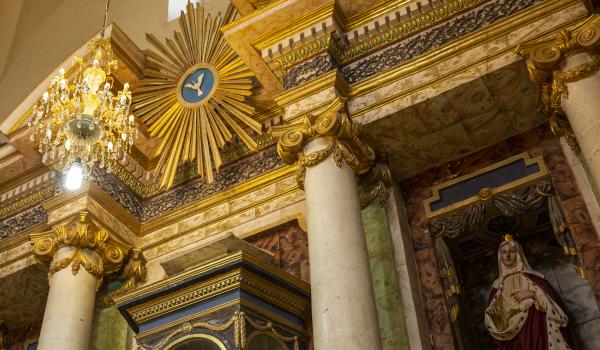
Capilla de la Tercera Orden
The construction of this temple began in the 17th century thanks to the legacy of Manuel Urtusuástegui, but it was completed years later.
Capilla de la Tercera Orden
The construction of this temple began in the 17th century thanks to the legacy of Manuel Urtusuástegui, but it was completed years later.

Templo de Nuestra Señora de la Salud
This temple is notable for its façade topped with a large shell. It includes a choir, a lower choir, a small chapel, a sacristy, and annexes. It served as part of the Colegio de San Francisco de Sales.
Templo de Nuestra Señora de la Salud
This temple is notable for its façade topped with a large shell. It includes a choir, a lower choir, a small chapel, a sacristy, and annexes. It served as part of the Colegio de San Francisco de Sales.
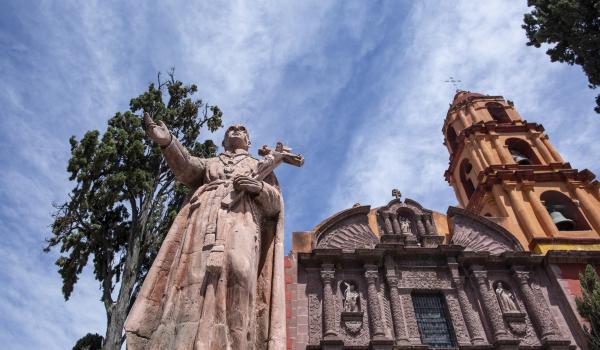
Templo del Oratorio de San Felipe Neri
On May 2, 1712, the provisional foundation of the Oratory of San Felipe Neri was established in San Miguel.
Templo del Oratorio de San Felipe Neri
On May 2, 1712, the provisional foundation of the Oratory of San Felipe Neri was established in San Miguel.

Templo de San Francisco
In 1779, the construction of this temple began, and it was inaugurated on April 13, 1799. The three-body tower, influenced by Italian Baroque, is attributed to Tresguerras, while Ureña is credited with the Churrigueresque façade.
Templo de San Francisco
In 1779, the construction of this temple began, and it was inaugurated on April 13, 1799. The three-body tower, influenced by Italian Baroque, is attributed to Tresguerras, while Ureña is credited with the Churrigueresque façade.
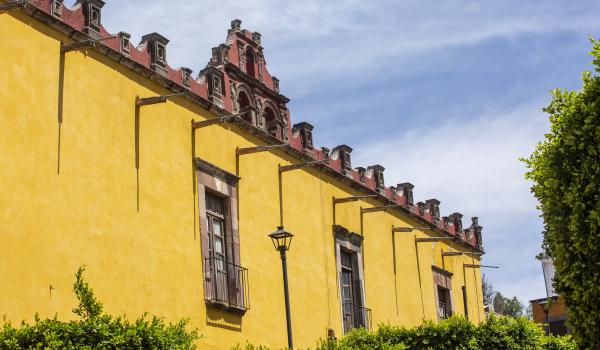
Antiguo Colegio de San Francisco de Sales
Two-story building with openings framed by jambs, featuring stone closures and a finish with small battlements. It served as a school for the Order of San Felipe Neri, where grammar, philosophy, scholasticism, and moral philosophy were taught.
Antiguo Colegio de San Francisco de Sales
Two-story building with openings framed by jambs, featuring stone closures and a finish with small battlements. It served as a school for the Order of San Felipe Neri, where grammar, philosophy, scholasticism, and moral philosophy were taught.
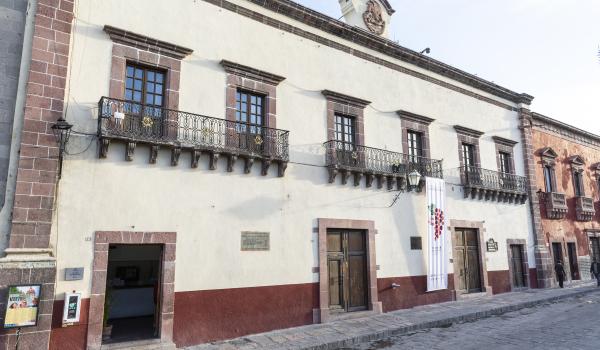
Presidencia Municipal
20th-century building that was modified to suit its current use. The facade features balconies with wrought iron.
n>
Presidencia Municipal
20th-century building that was modified to suit its current use. The facade features balconies with wrought iron.
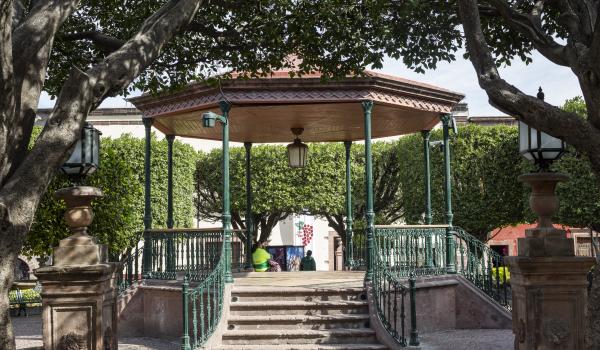
Jardín Allende
Rectangular plaza with benches and a cast-iron gazebo.
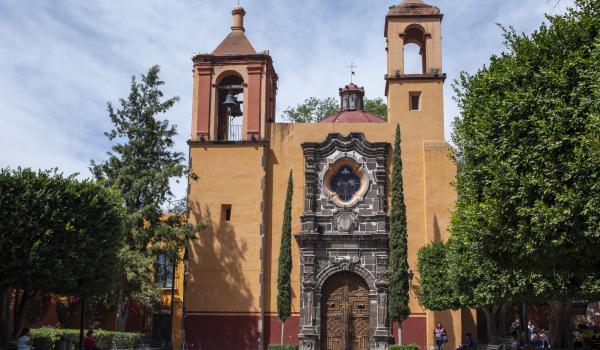
Templo y ExHospital de San Juan de Dios
In 1770, Father Juan Manuel de Villegas, of the Hospitaller Order of St. John of God, founded a hospital, which was entrusted to the Juanine Fathers. They named it "Hospital de San Juan de Dios," as it is still known today.
Templo y ExHospital de San Juan de Dios
In 1770, Father Juan Manuel de Villegas, of the Hospitaller Order of St. John of God, founded a hospital, which was entrusted to the Juanine Fathers. They named it "Hospital de San Juan de Dios," as it is still known today. The building includes a church, a cemetery, and a spacious courtyard with three corridors.

